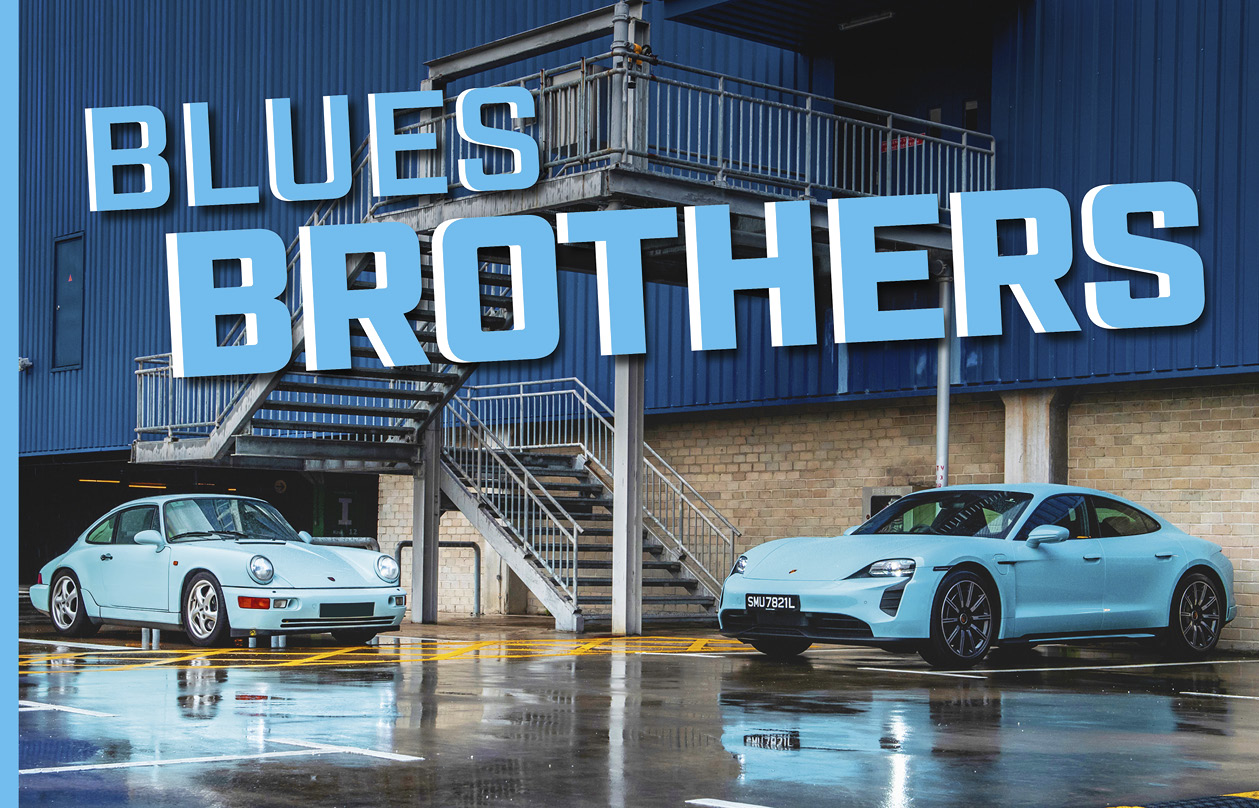Porsche Taycan 4S & Type 964 911 Carrera 4 Feature Drive Review : Blues Brothers
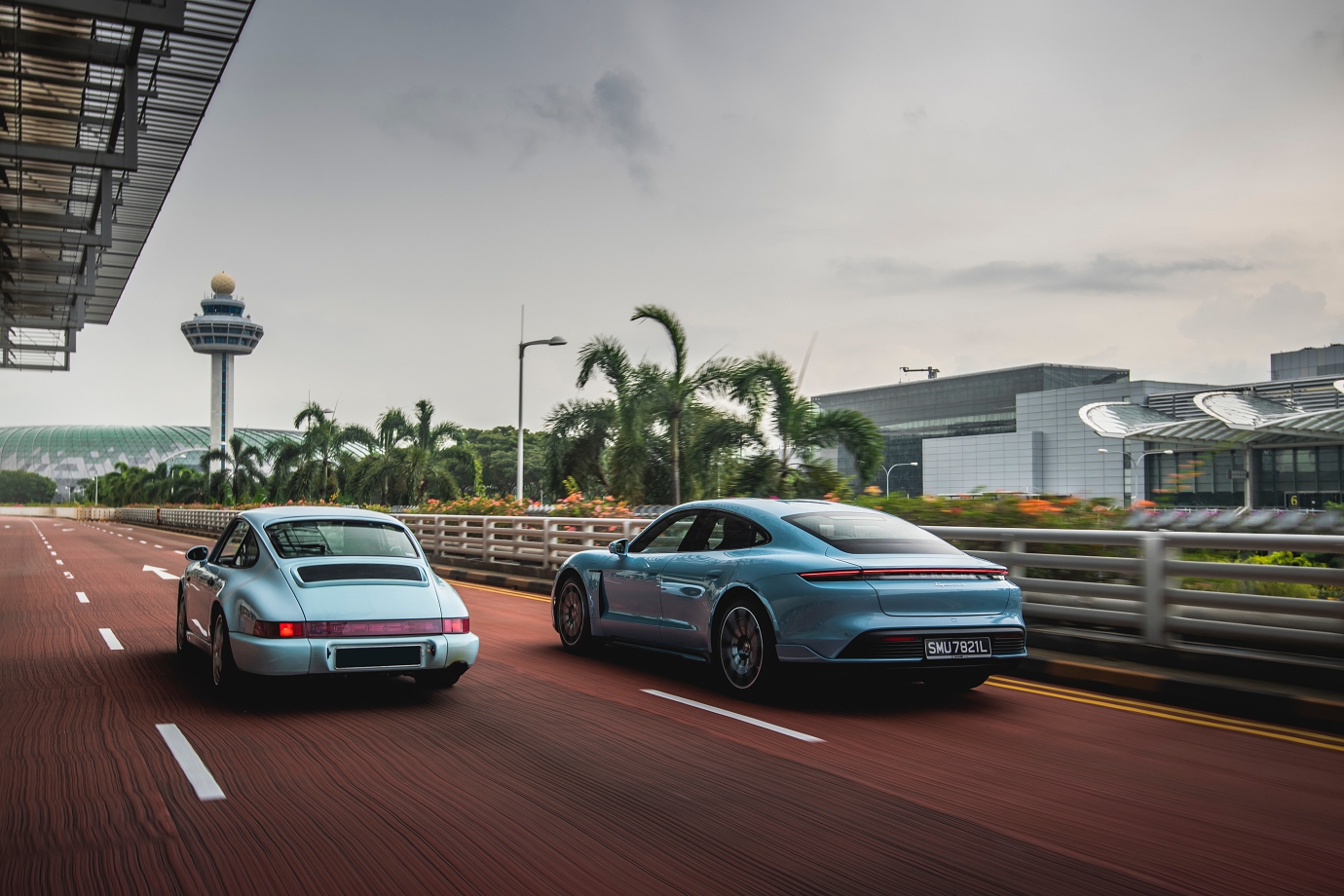
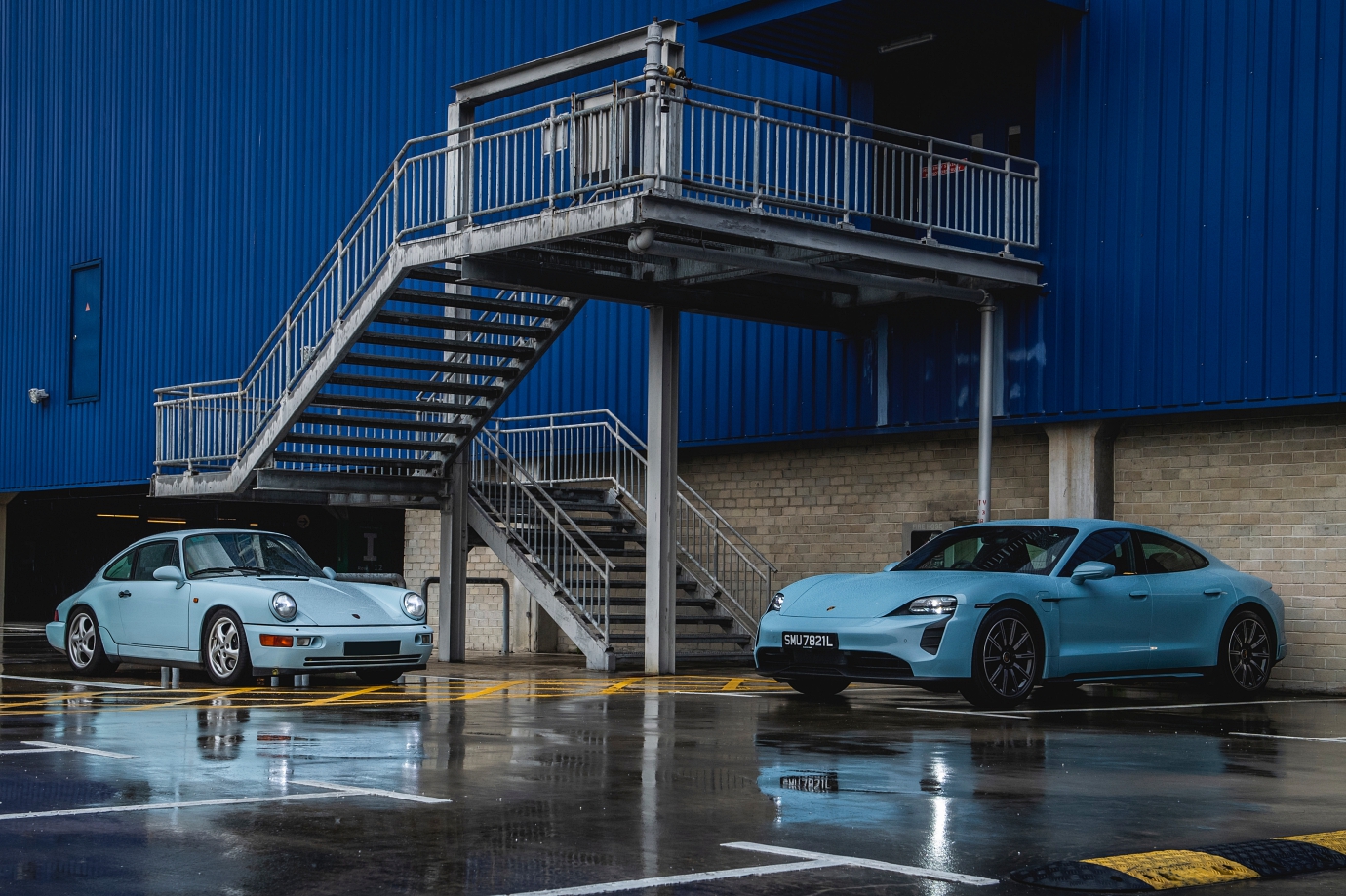
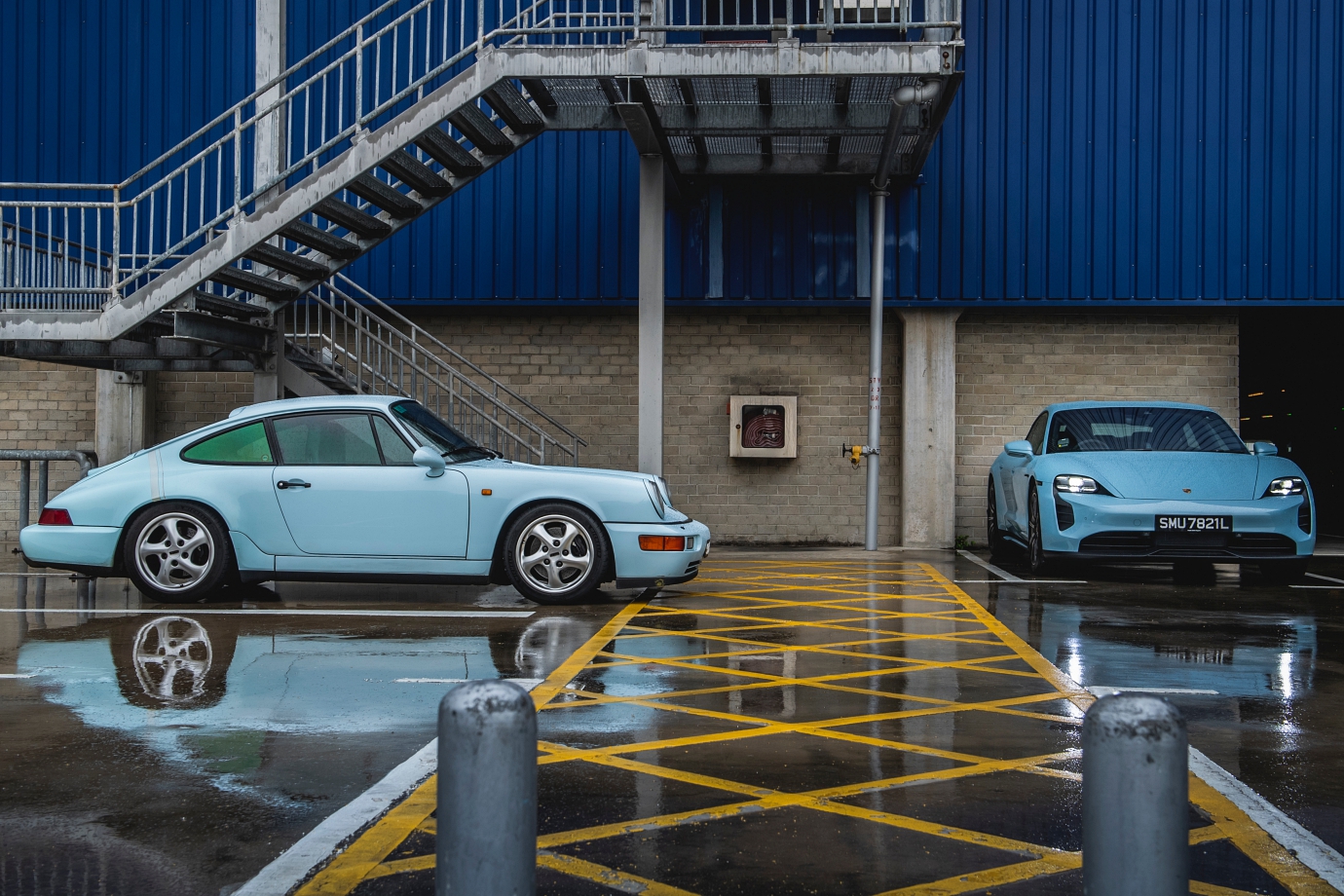
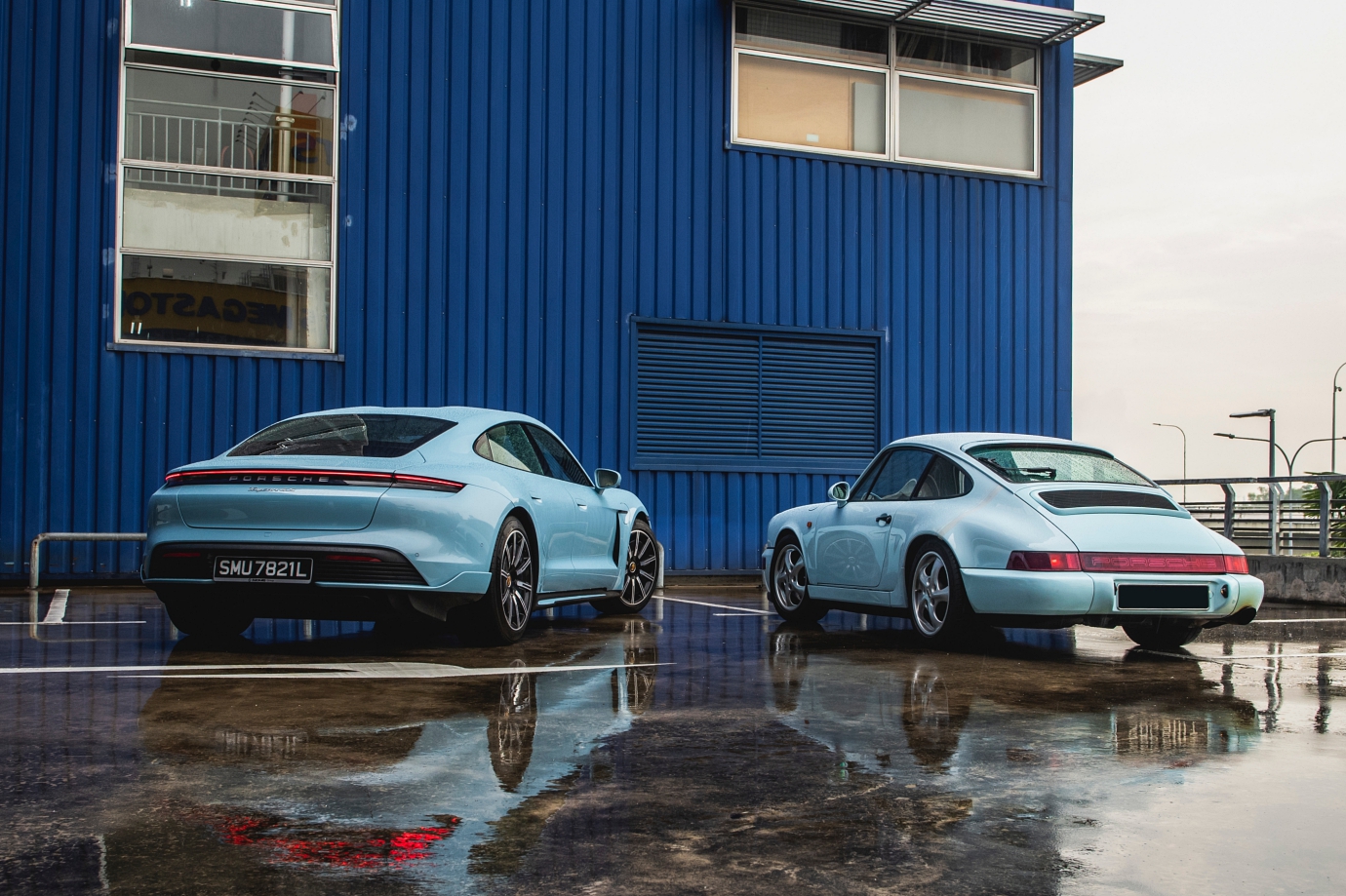
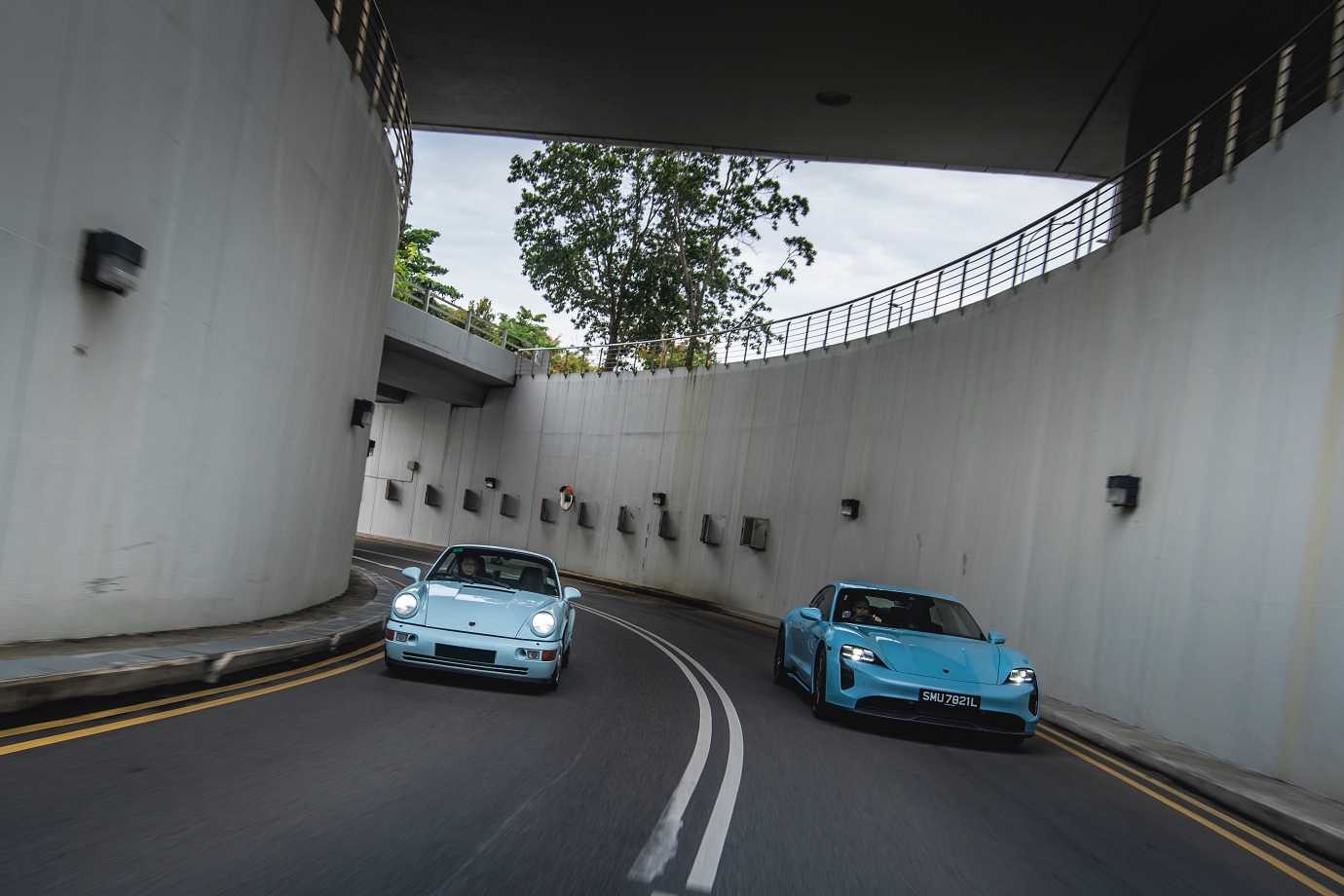
Porsche Taycan 4S & Type 964 911 Carrera 4 : Blues Brothers
Singapore – The notion of an electric vehicle having a ‘soul’ is a constant bone of contention for petrolheads. As transport, sure, but for fun... surely not?
After all, most entry-level EVs are better regarded as zero-emissions beasts of burden from A-to-B – brisk, efficient transport for city commutes, but hardly a hoot to drive, or are they?
Thankfully, the advent of sporty electric cars like the BMW i3s, MINI Cooper SE, Audi e-tron, Jaguar I-Pace and now the Porsche Taycan means us driving enthusiasts have been thrown a proverbial bone.
If we leave the electric hypercars that operate on the far side of S$2m out of the equation for now, the new breed of S$250k (and up) sporty EVs demonstrates driving an electric vehicle need no longer just be for smug virtue signalling – it can be fun-to-drive as well, and not solely because of the instantaneous torque characteristic of such electric powertrains either.
As Porsche rides the lightning into the future with the all-electric 800V Taycan, it’s apt we revisit the seminal 911 – after all, it’s only right to have the Porsche of tomorrow visit the archetypal Porsche that cemented the brand’s cult status of dishing out dynamic driver’s cars.
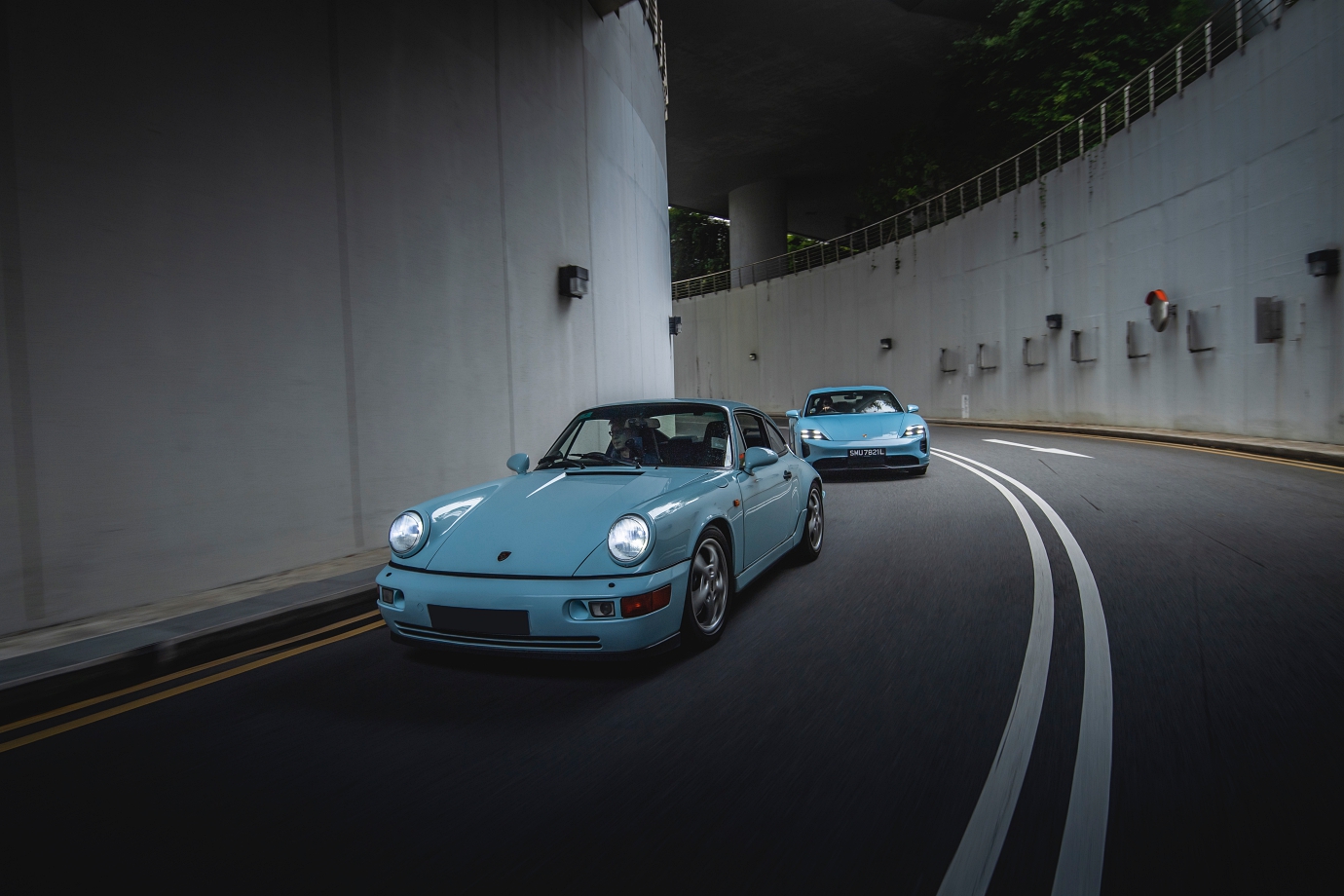
By happy coincidence, the air-cooled Type 964 911 we’ve picked is in a similar blue hue to the Taycan 4S demo-car, but that’s not the reason we’ve chosen it.
In the same way the all-wheel-driven Taycan blazes a trail into the future for the brand with its revolutionary powertrain, the baby blue 964 Carrera 4 was the first all-wheel drive and 3.6-litre engined 911 Carrera for Porsche at its launch.
It too, had to prove to Porsche die-hards that the all-wheel-drivetrain could retain the strong sporting DNA and soul-stirring personality the brand had become known for with its ubiquitous rear-engined/rear-drive configuration … sound familiar yet?
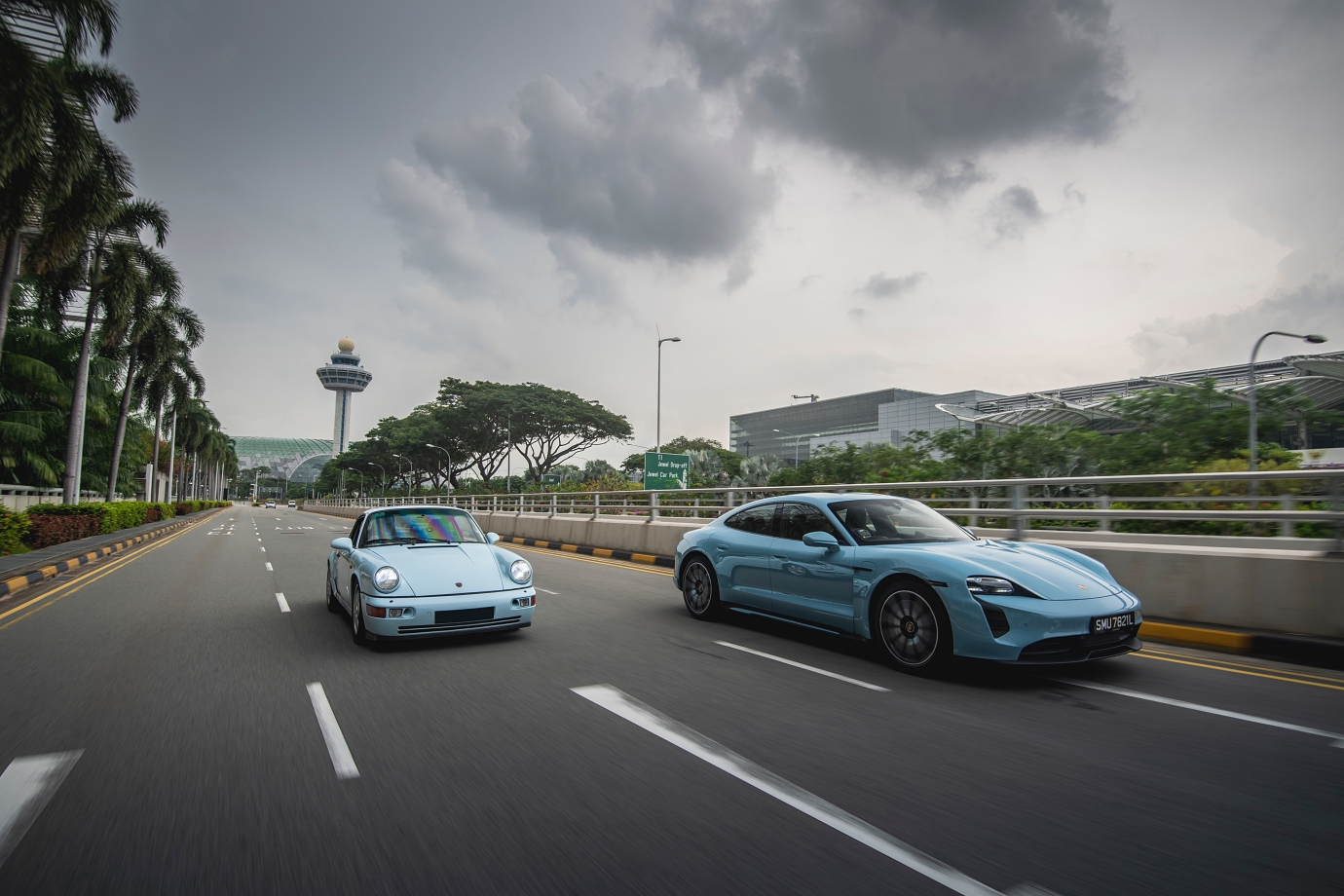
Porsche’s all-electric Taycan had eagerly been anticipated by Porschephiles the world over since we were first teased with the Mission E concept five years ago. Of all the petrolheads, Porsche fans are among the most demanding.
In case you’ve forgotten, every paradigm shift that Porsche goes through attracts plenty of controversy from the purists: air-cooled to water-cooled, Mezger to non-, introduction of the first Cayenne and Boxster, PDK-only RS models and now, the introduction of an all-electric Porsche, the Taycan.
However, when you look back at these pivotal moments, Porsche has mostly proven to prevail, and we don’t see how it’ll be any different with the Taycan...
(Click HERE to read about the time Porsche put a flat-six back into the 718 Boxster and Cayman GTS)
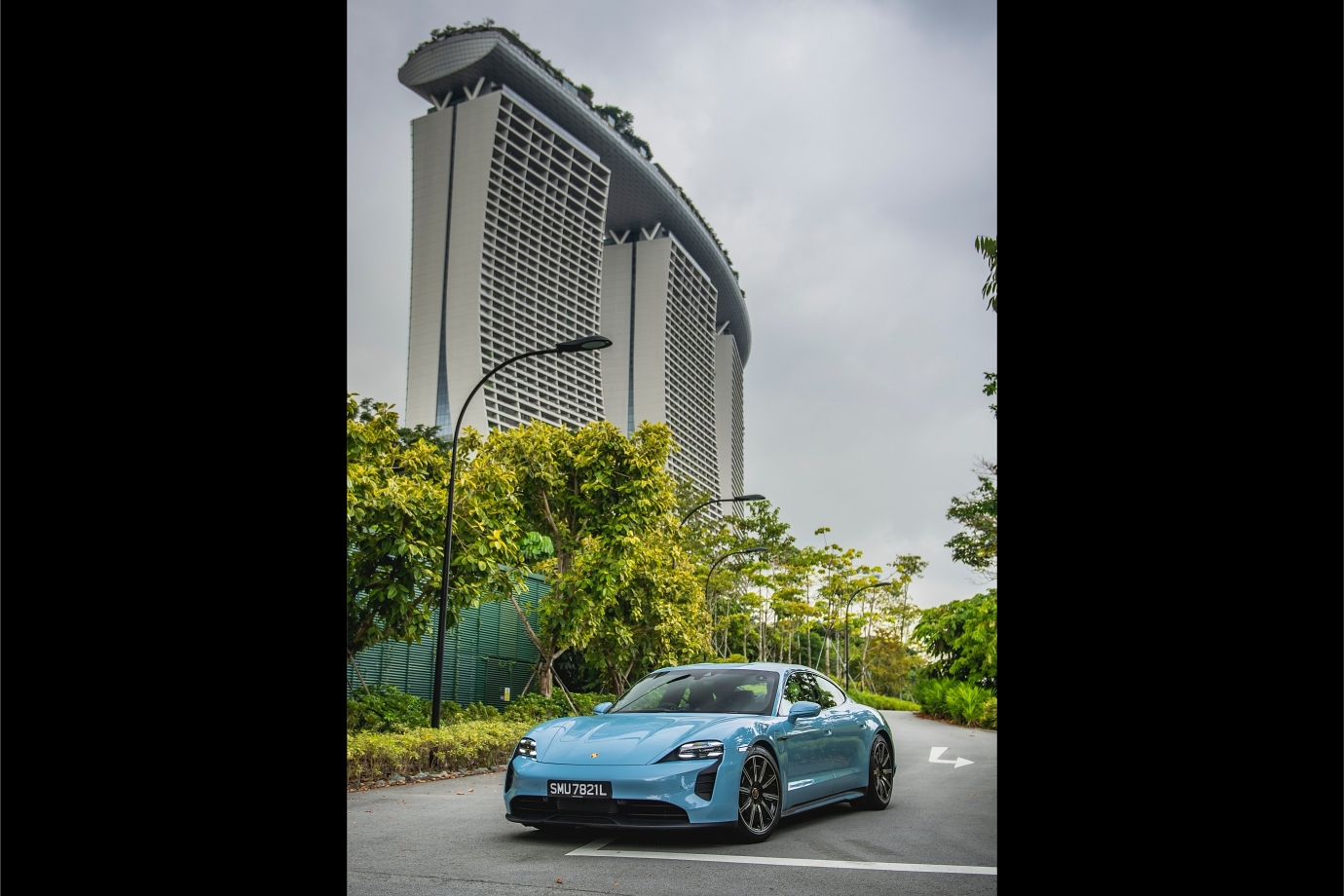
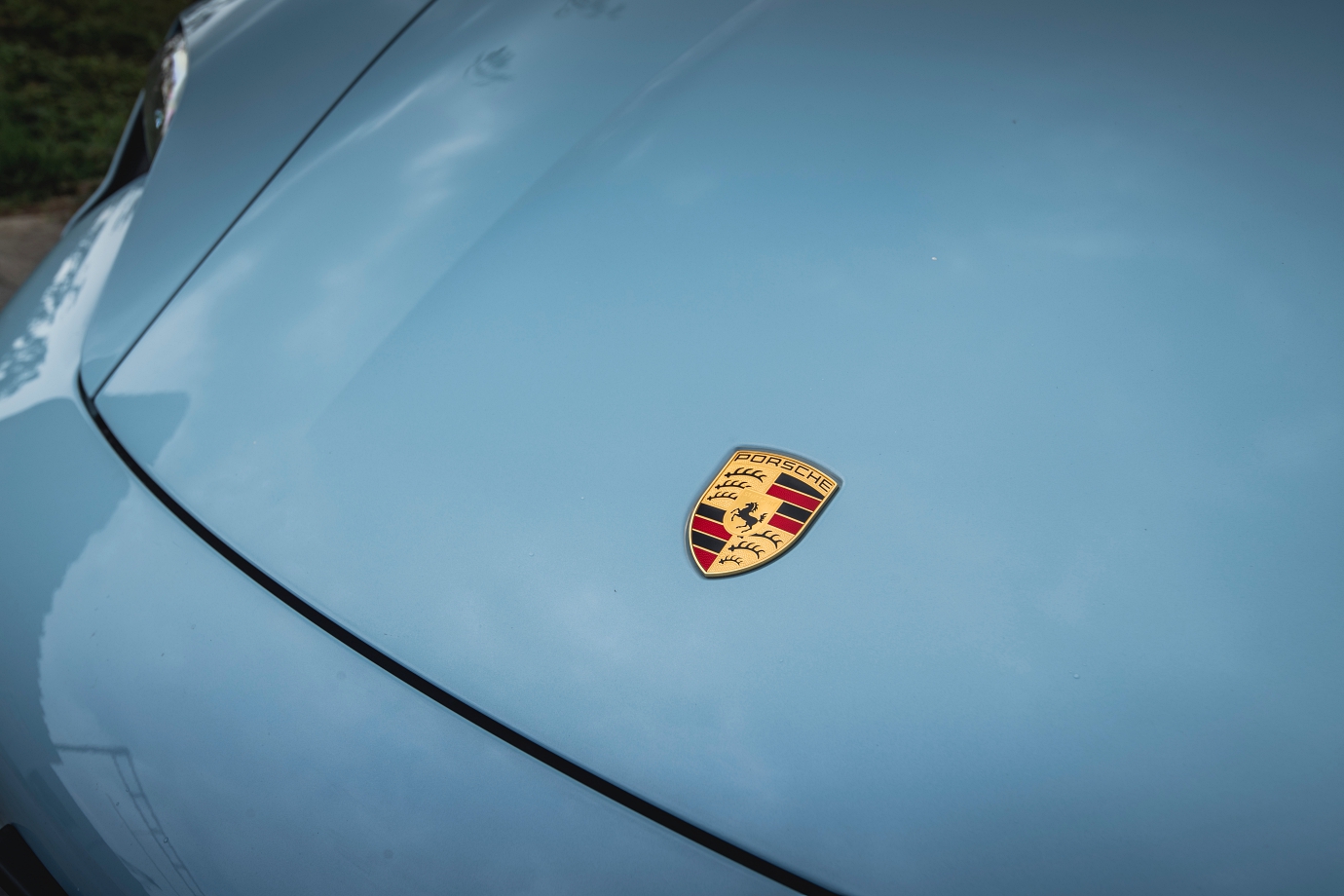
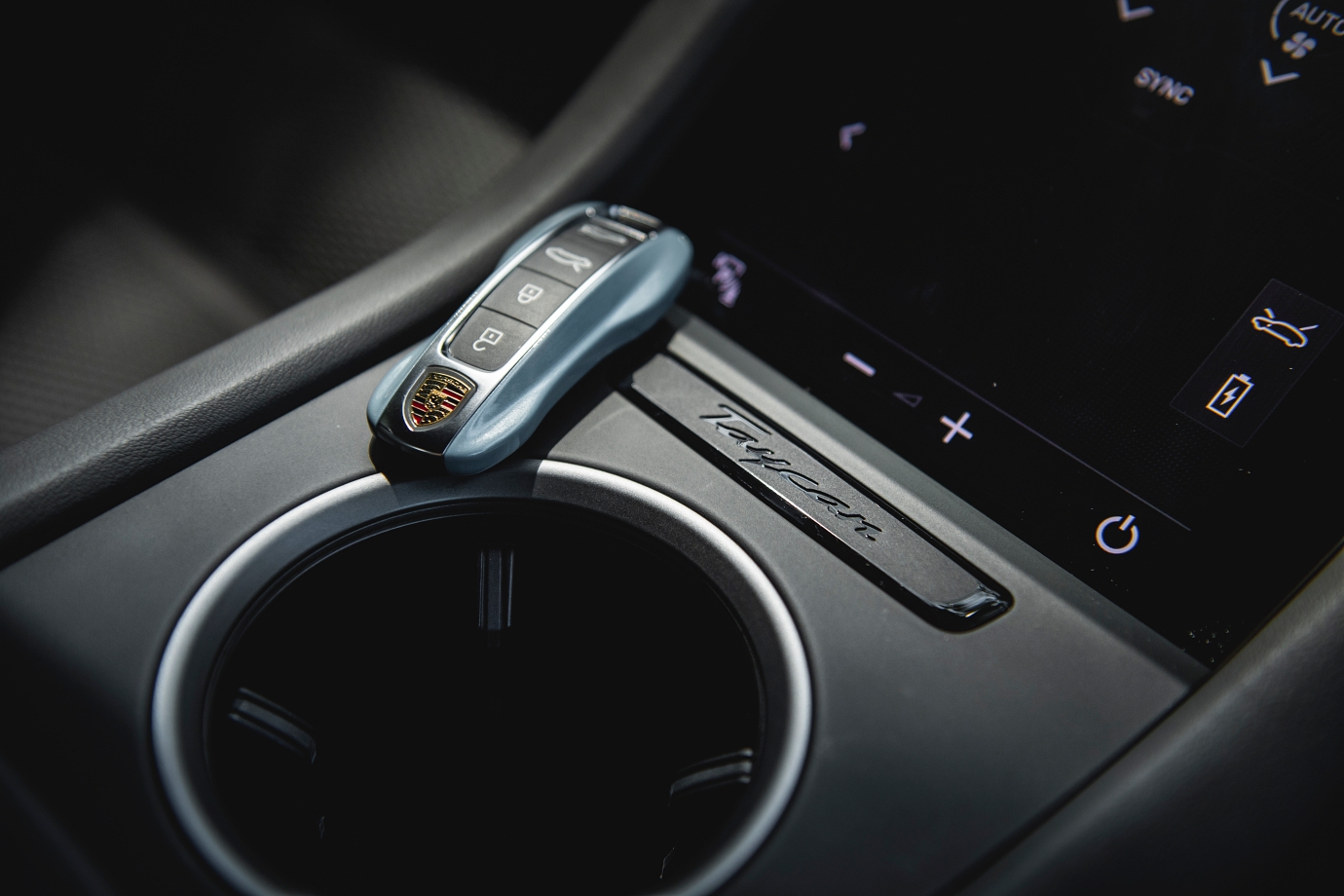
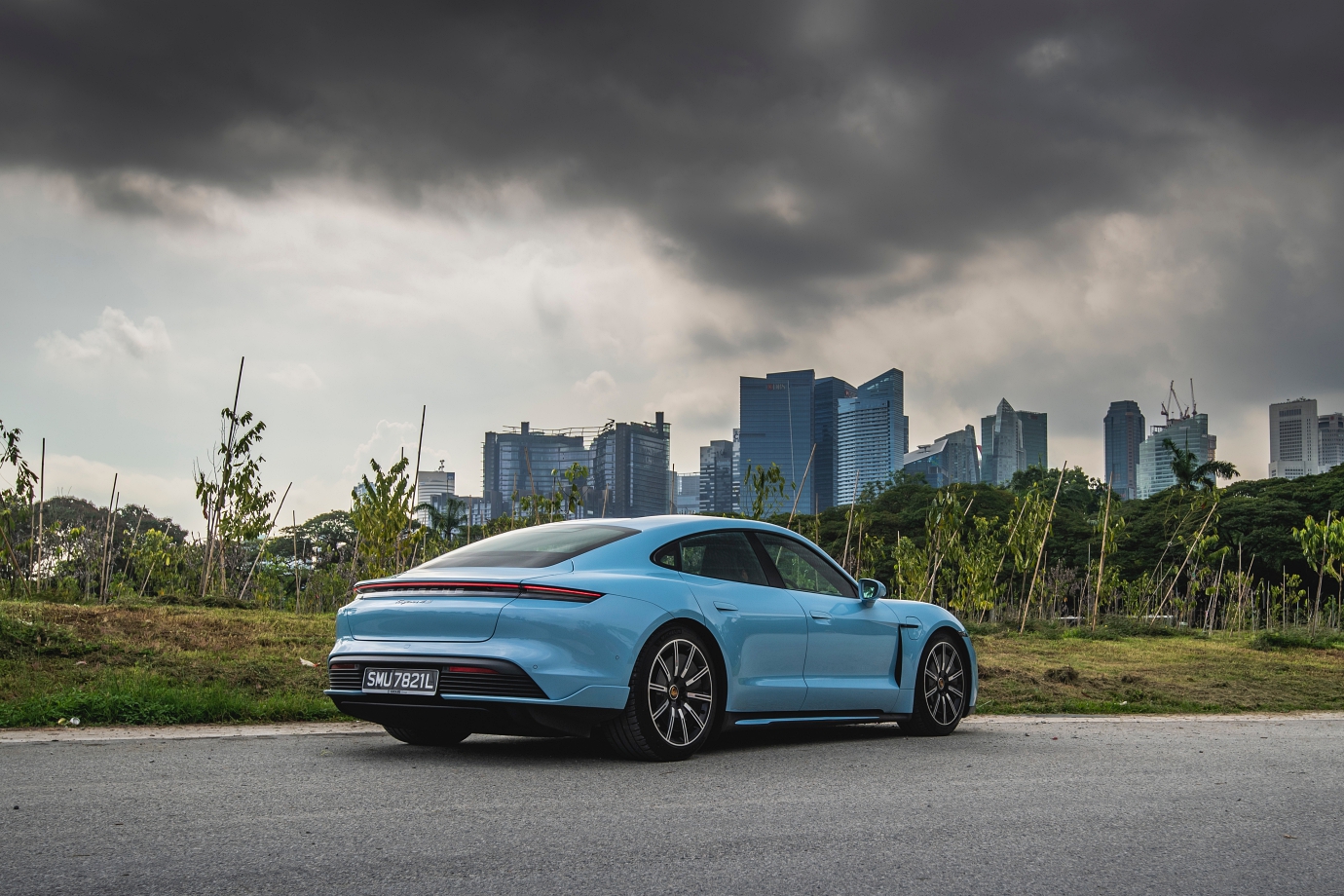
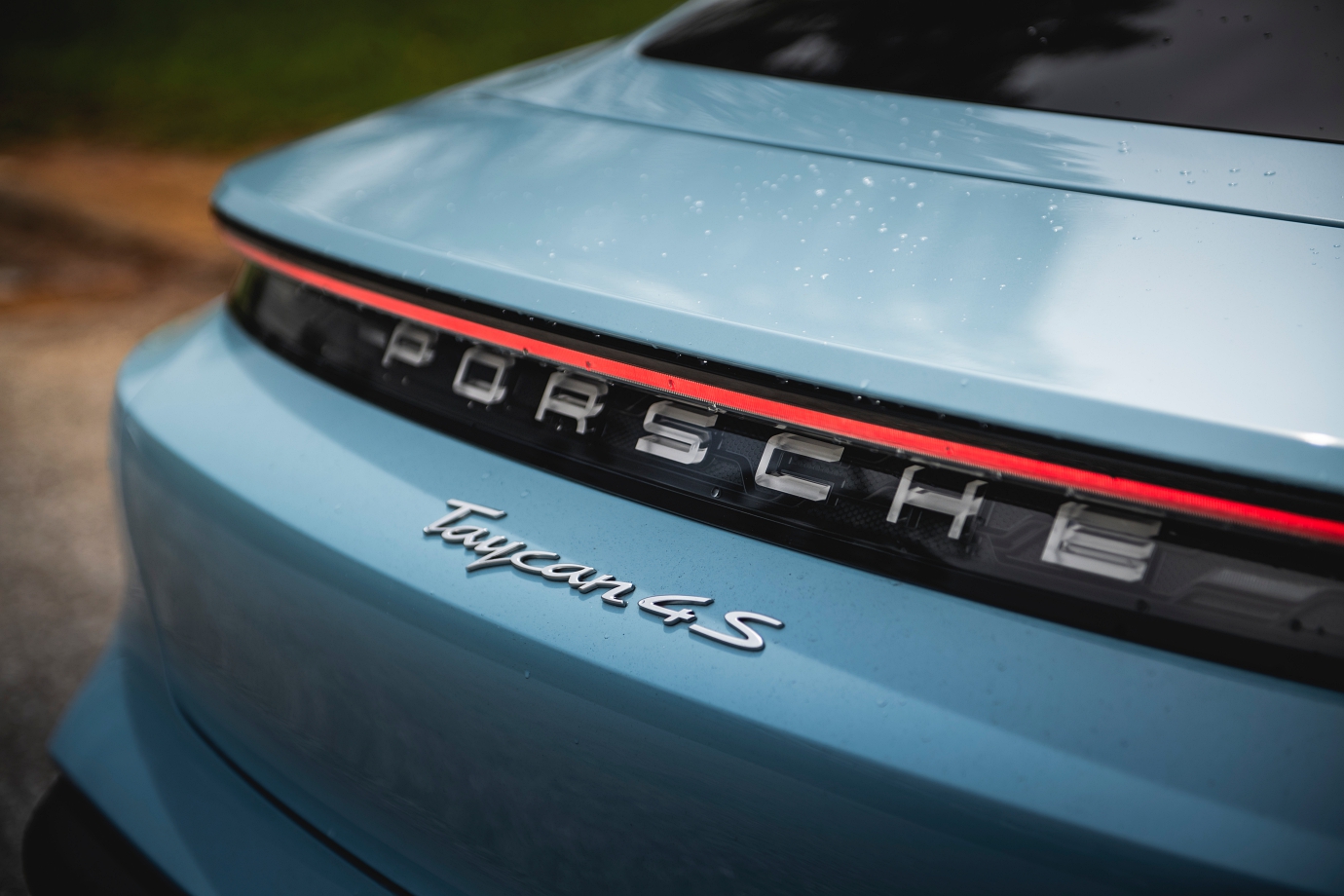
PORSCHE TAYCAN 4S
The lean musculature of Porsche’s electric sports sedan is stretched tautly over its skin to create the slippery 0.22Cd silhouette of a lithe, yet powerful predator.
Certain aesthetic elements are reminiscent of the iconic 911, but the Taycan boasts elegant, purposeful proportions that aren’t derivative of the brand’s ‘other sedan’, the Panamera, yet is executed in inimitable Porsche fashion.
As far as the brand’s fans are concerned, it’s not enough for the brand to push the envelope of technology (as powertrains evolved from purely mechanical to hybrid to all-electric), because every model is expected to retain the dynamic driving thrills that all Porsches to date have been endowed with over the course of its 70+year history.
Driving enthusiasts will understand what we mean when we say that fast doesn’t necessarily equate to fun, because an engaging sportscar should stir the petrolhead’s soul in terms of sound, steering and spirit, and not just in a straight-line either.
Clickbaity 0-100km/h sprint times are great for grabbing headlines, but it’s a rather meaningless yardstick by which to measure an electric car’s performance.
Why? The on-off nature and immediacy of the electric powertrain’s throttle response mean electric torque hits fast and hard the moment you’re on the ‘go’ pedal.
This means the 0-100km/h benchmark that used to be a handy statistic for vehicles with internal combustion engines (or ICE) is less so now, especially with ICE and EV in a furious tit-for-tat for setting increasingly ludicrous sprint times to the 100km/h mark.
In case you’re wondering the Taycan 4S will blitz to 100km/h from a standstill in 4secs flat, with the Turbo and Turbo S timed at 3.2s and 2.8s respectively – plenty fast whatever the variant.
Fast EVs are fast, there’s no disputing that (nor is it a point worth belabouring in this segment), but the million dollar question is: are they fun as well?
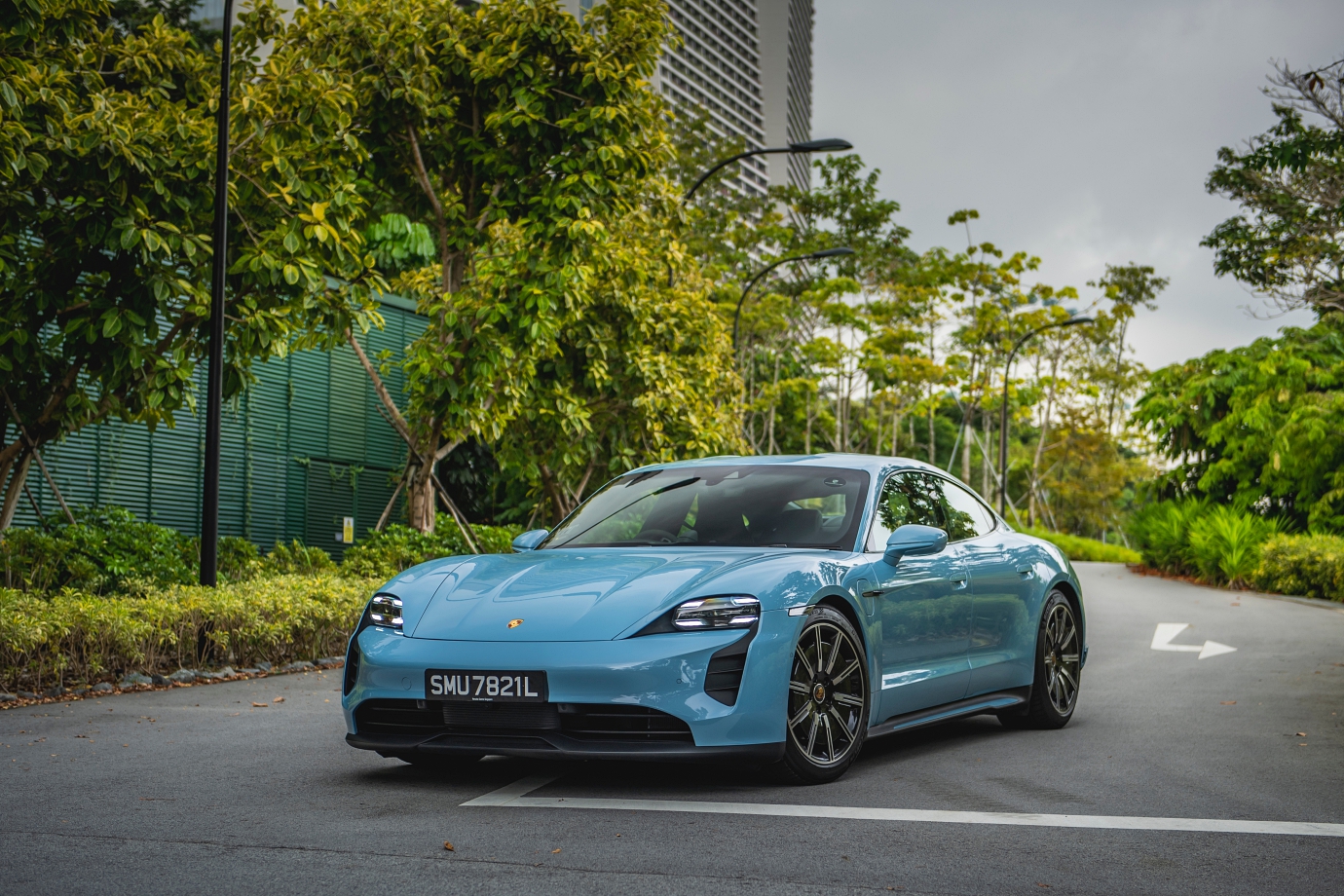
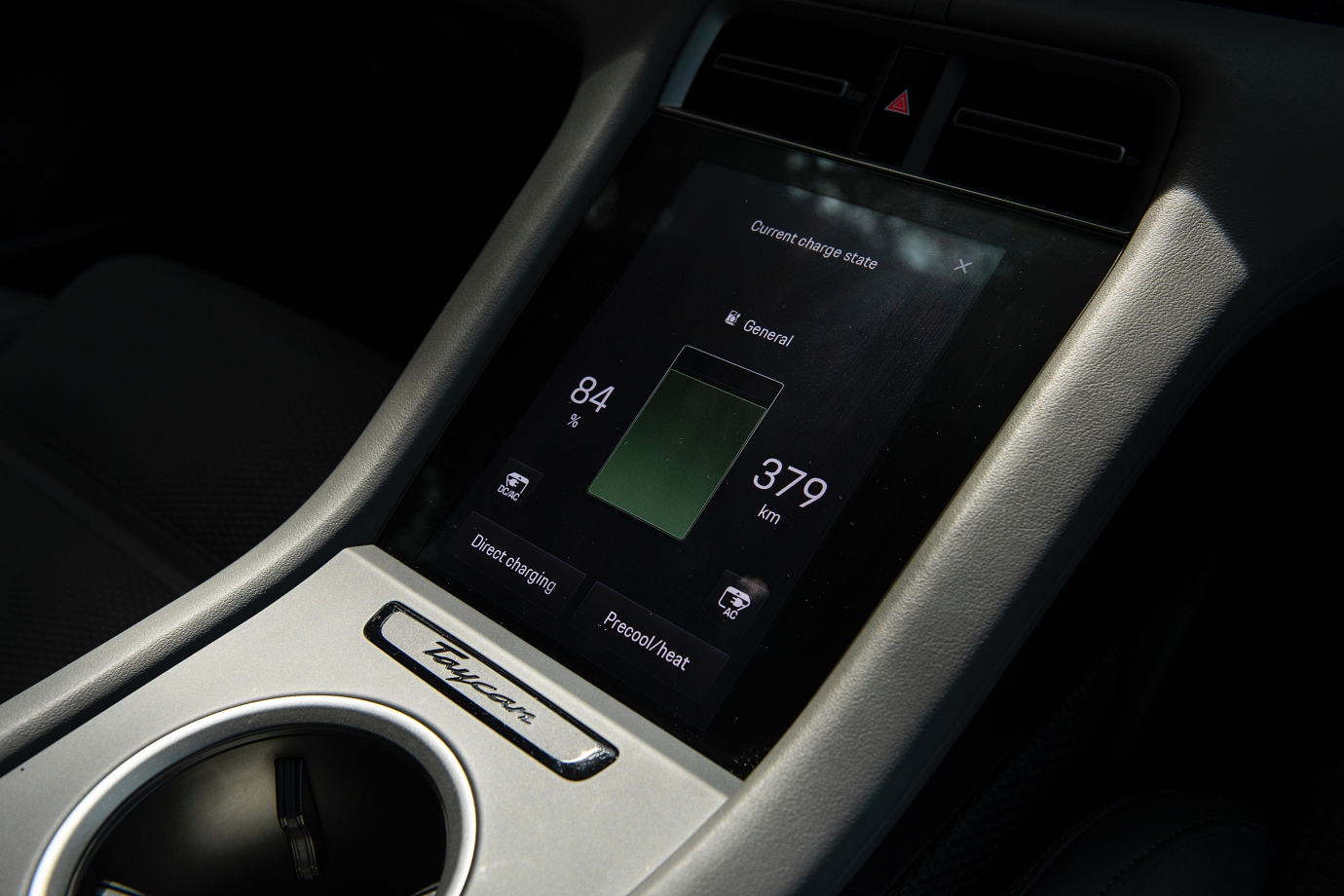
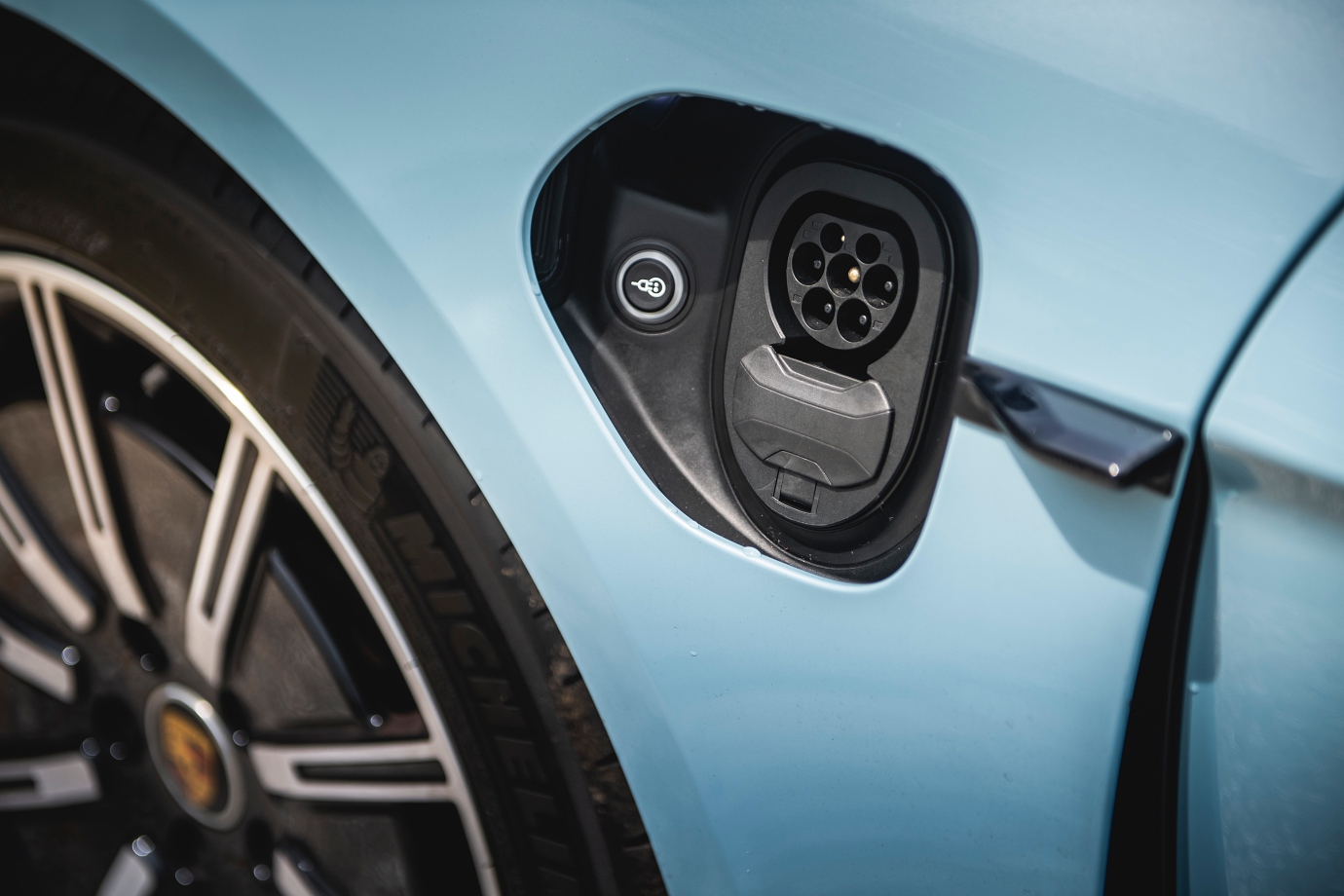
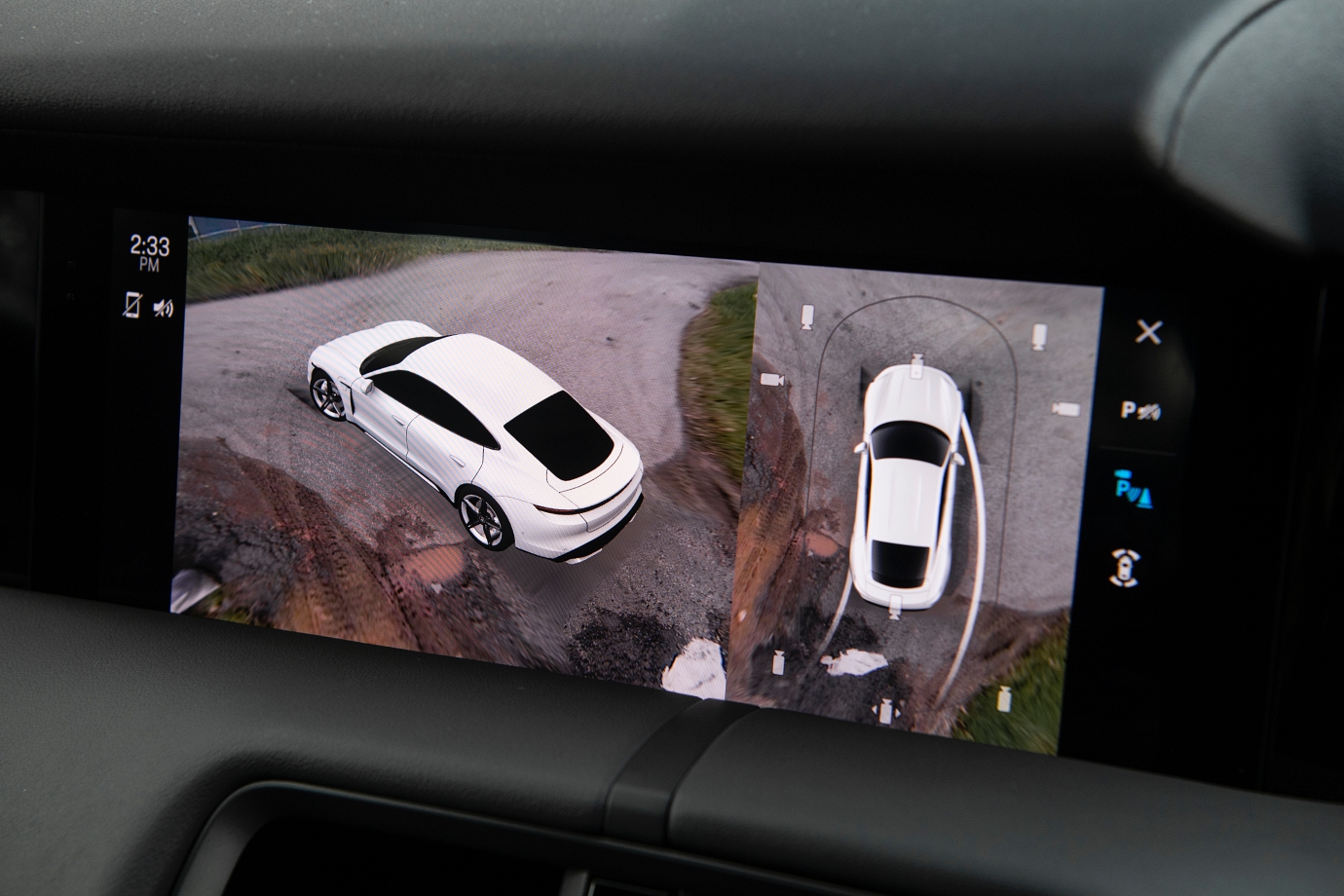
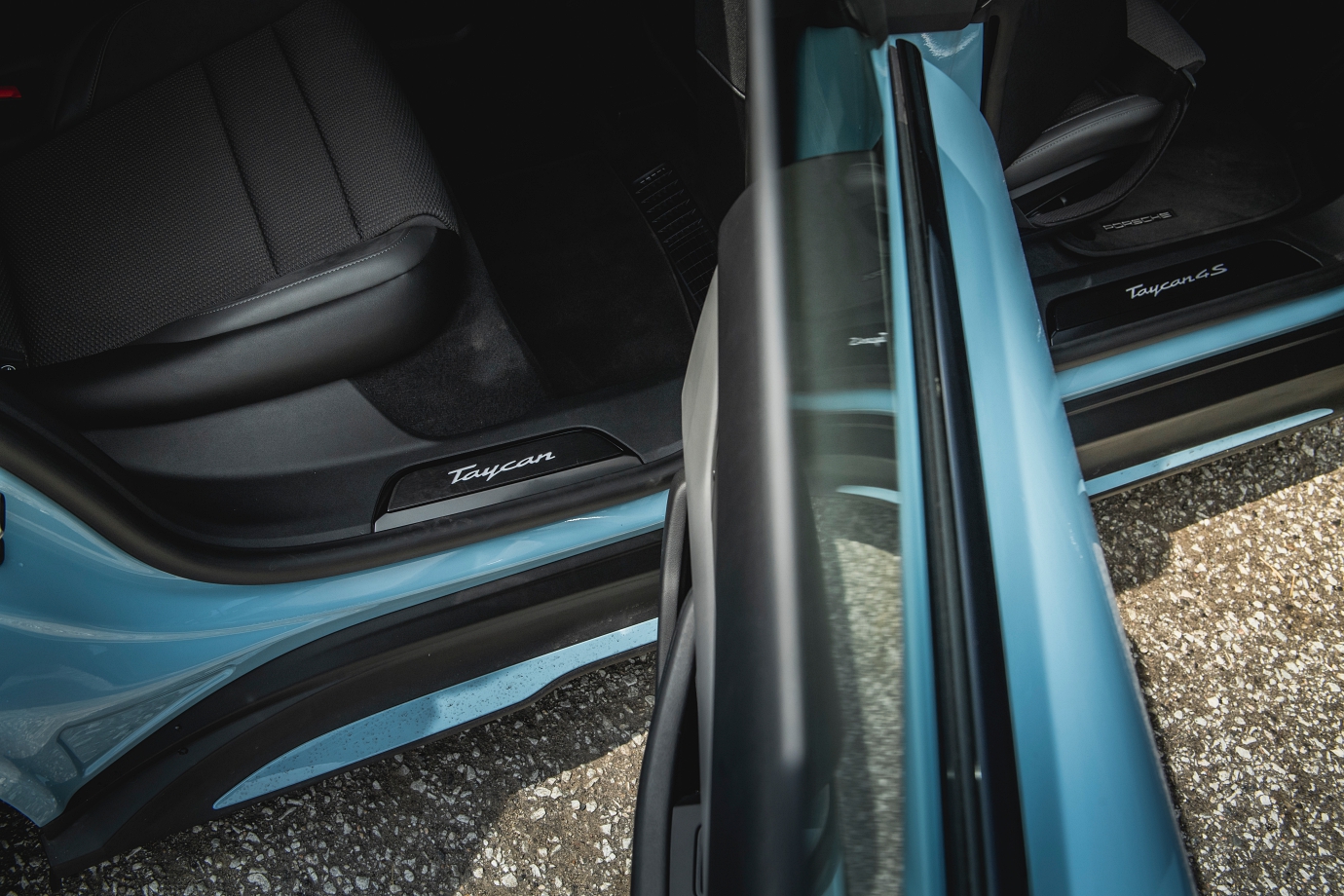
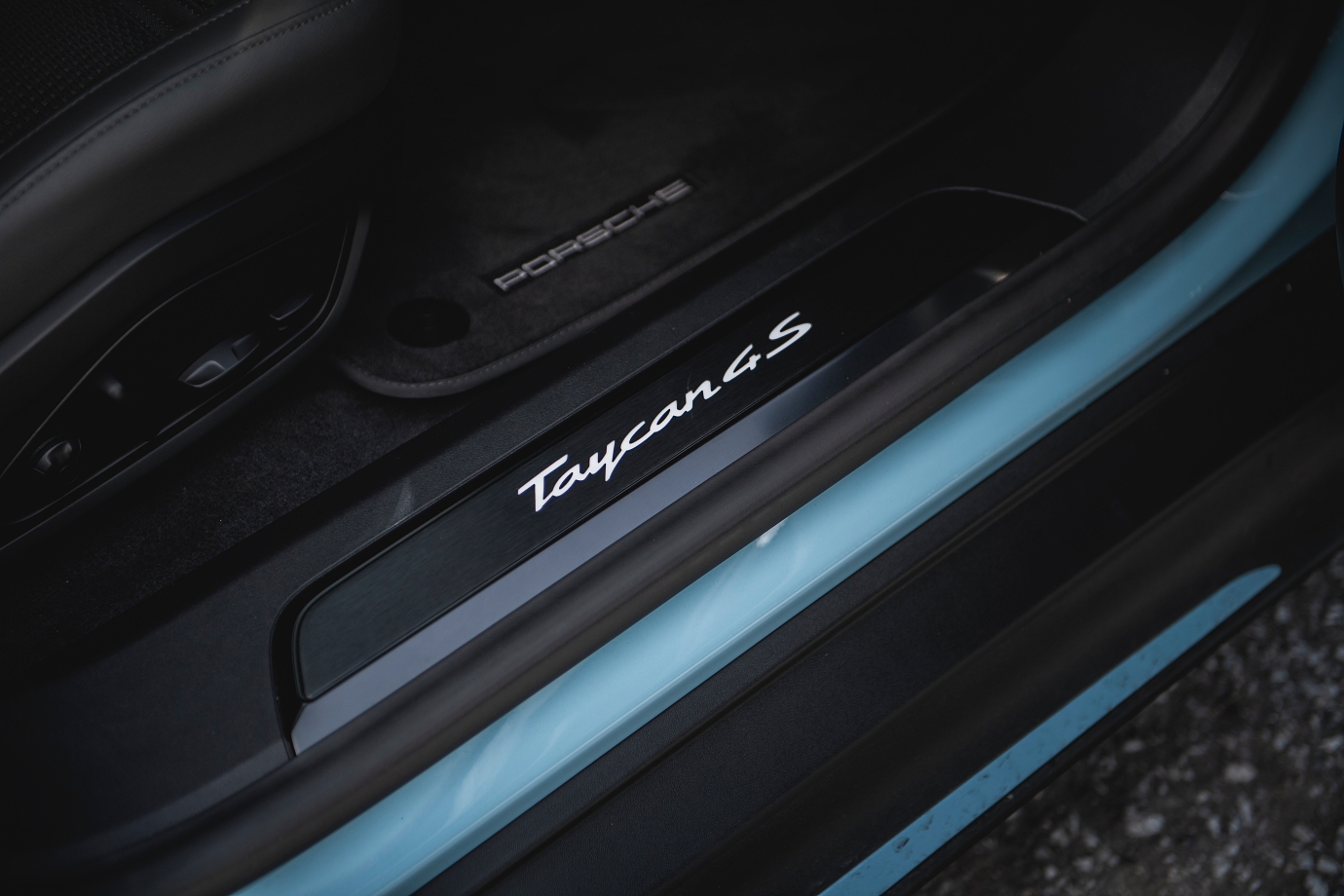
The 4S is the current entry-point to the Taycan range in Singapore, which tops-off with the Turbo and Turbo S models (prices respectively start from S$485,988, S$623,988 and S$767,988 before COE and options).
However, this particular 4S is equipped with the cost-optional Performance Battery Plus (a S$26+k option that is standard on both the Turbo and Turbo S) and a host of other options that see on-the-road price balloon to S$700k.
At this price point for a 4S, it might make better sense to buy the Turbo instead because standard equipment for the Turbo and Turbo S is higher.
For what it’s worth, we did sample spec a 4S to just under S$600k with the Performance Battery Plus, gorgeous Mission E alloys and some other niceties, so the test-car is more a demonstration of indulgence, as opposed to keeping it simple with just the performance essentials.
In the league that the Taycan operates in, it’s as much about making a statement with its ‘green’ credentials as it is about performance. It’s unlikely to be the only sportscar in the garage, so we don’t foresee anyone dealing with the ‘911 or Taycan’ conundrum.
A full charge range of nearly 400km range should last three to five days for most owners in Singapore, and given the buying demographic, access to a charging point isn’t likely to be an issue – besides, there’s always a mall charging point if the battery level drops to a critically low level.
It’s hard to talk about electric cars without the Tesla fan-boys raising a ruckus. However, we still appreciate the quality of fit and finish, as well as how seamlessly traditional car brands like Porsche are able to integrate display screens and technology into the cabin architecture – as opposed to having a car built around a ginormous tablet. All this help elevate such vehicles from mere beast-of-burden appliances to automotive artforms.
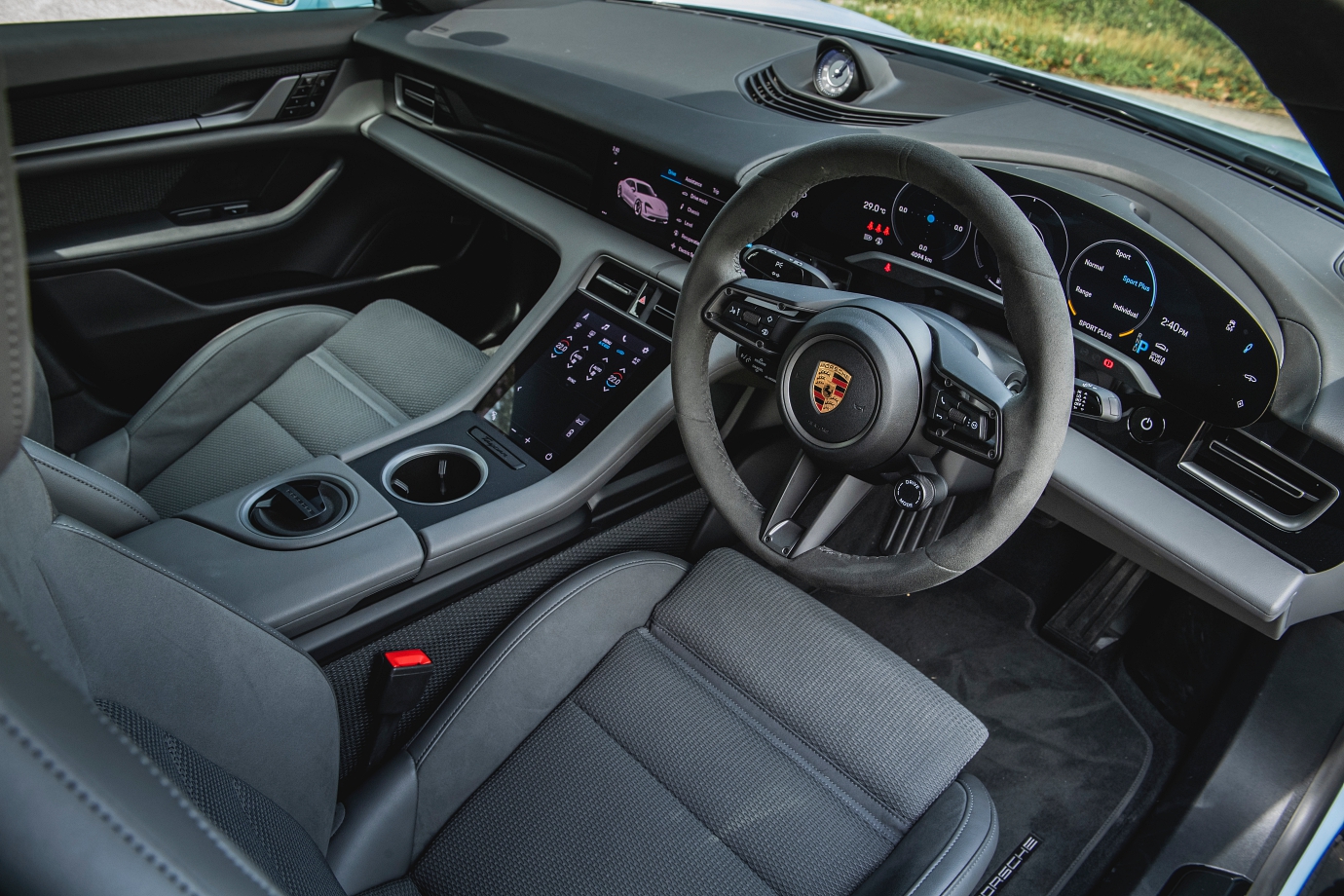
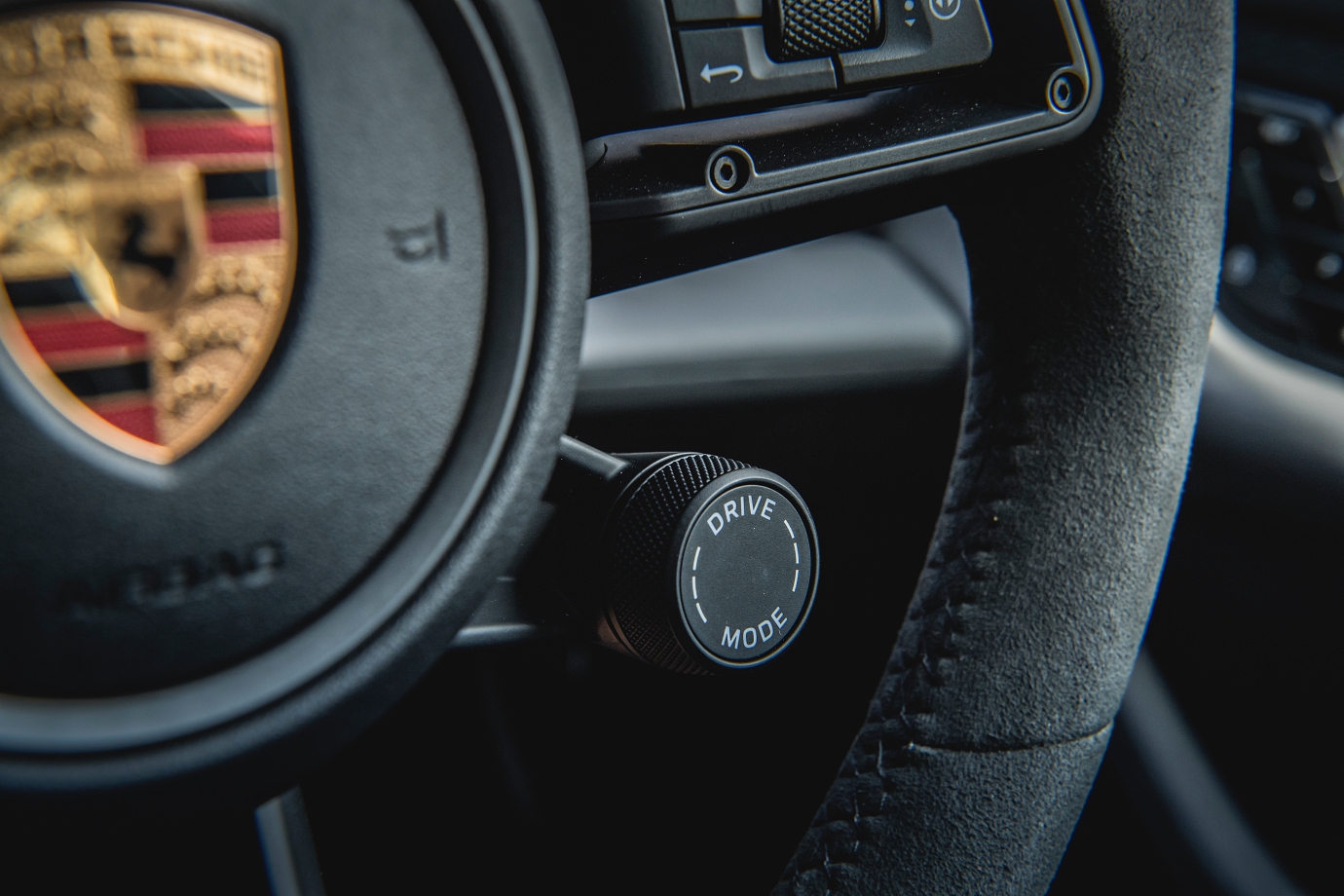
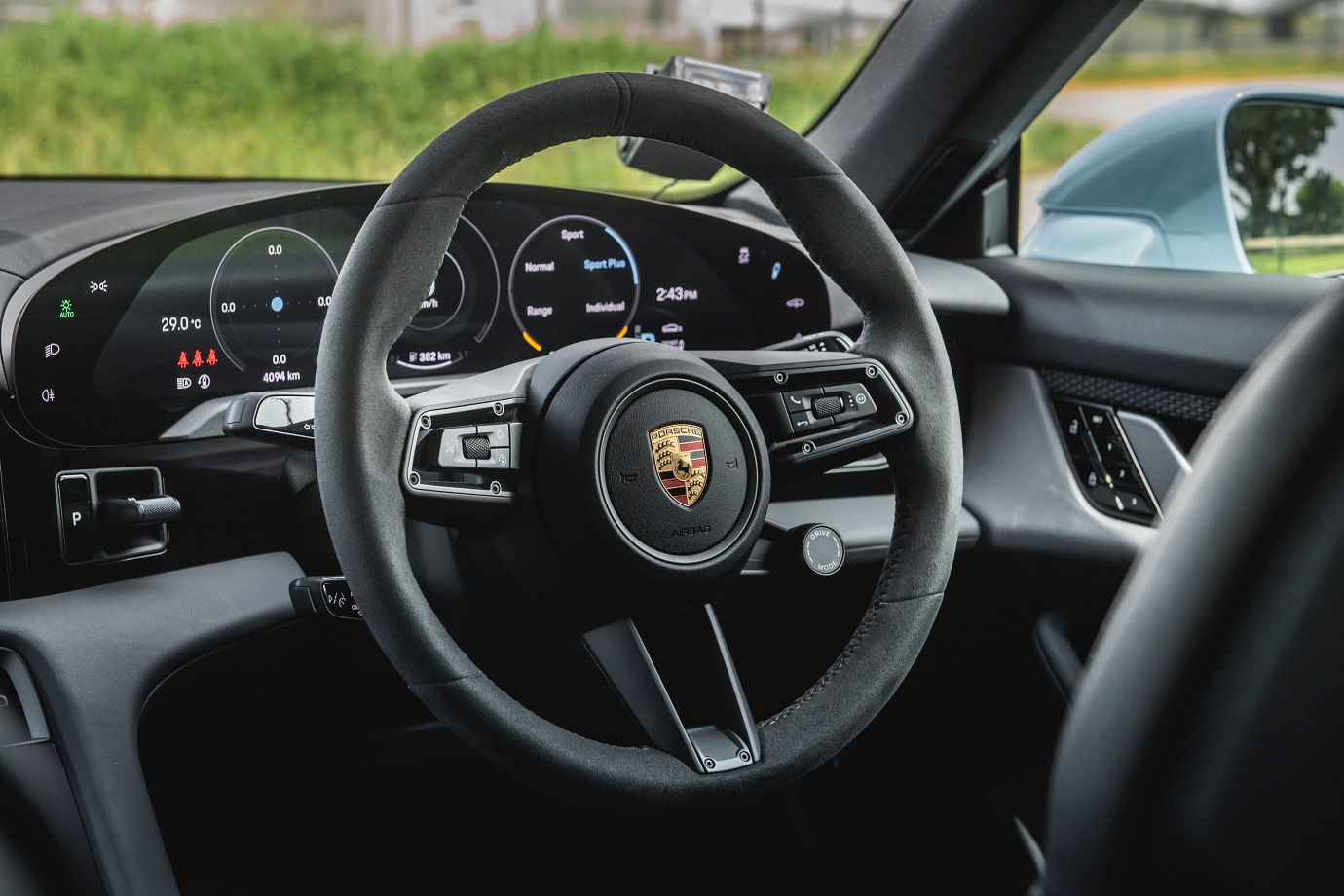
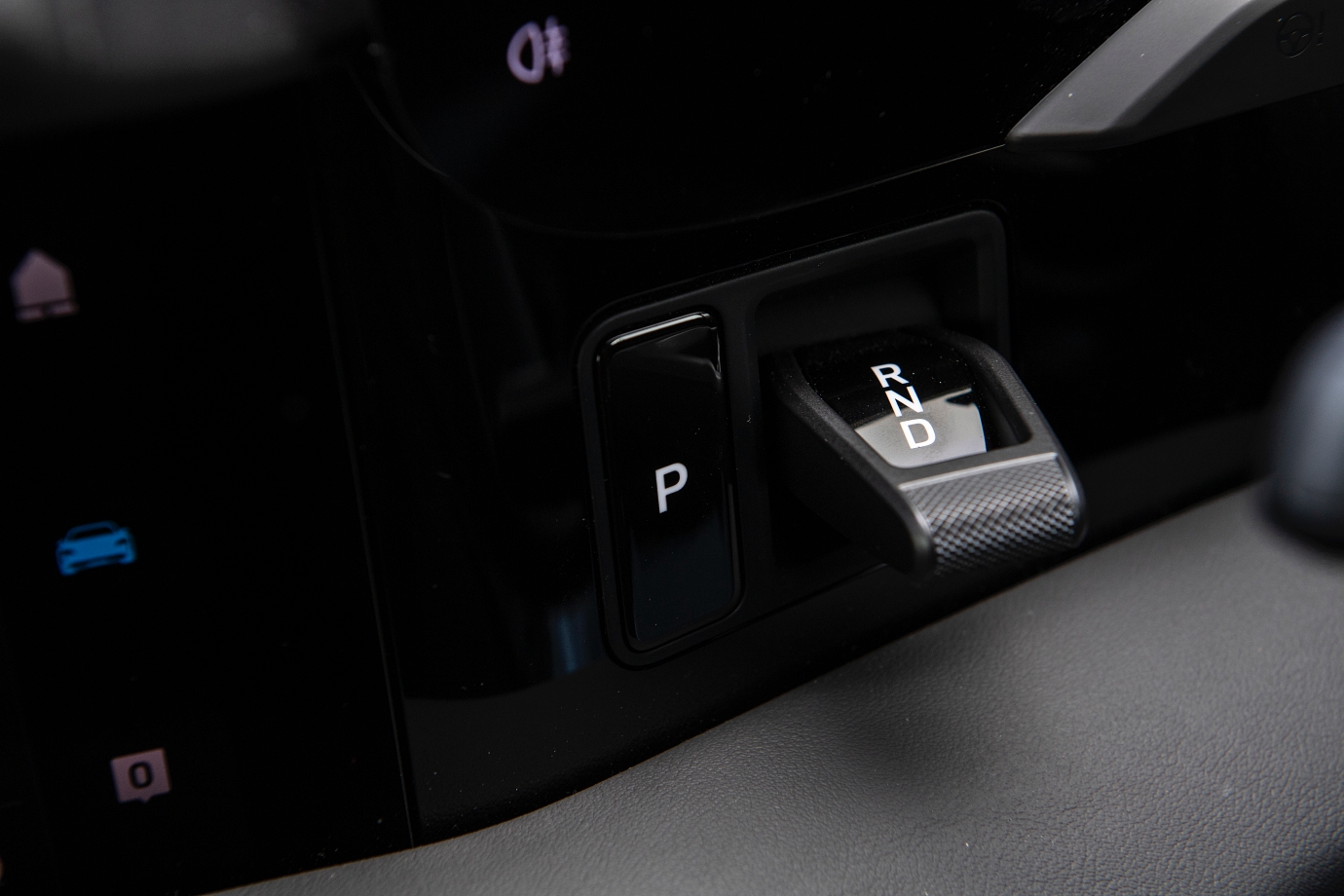
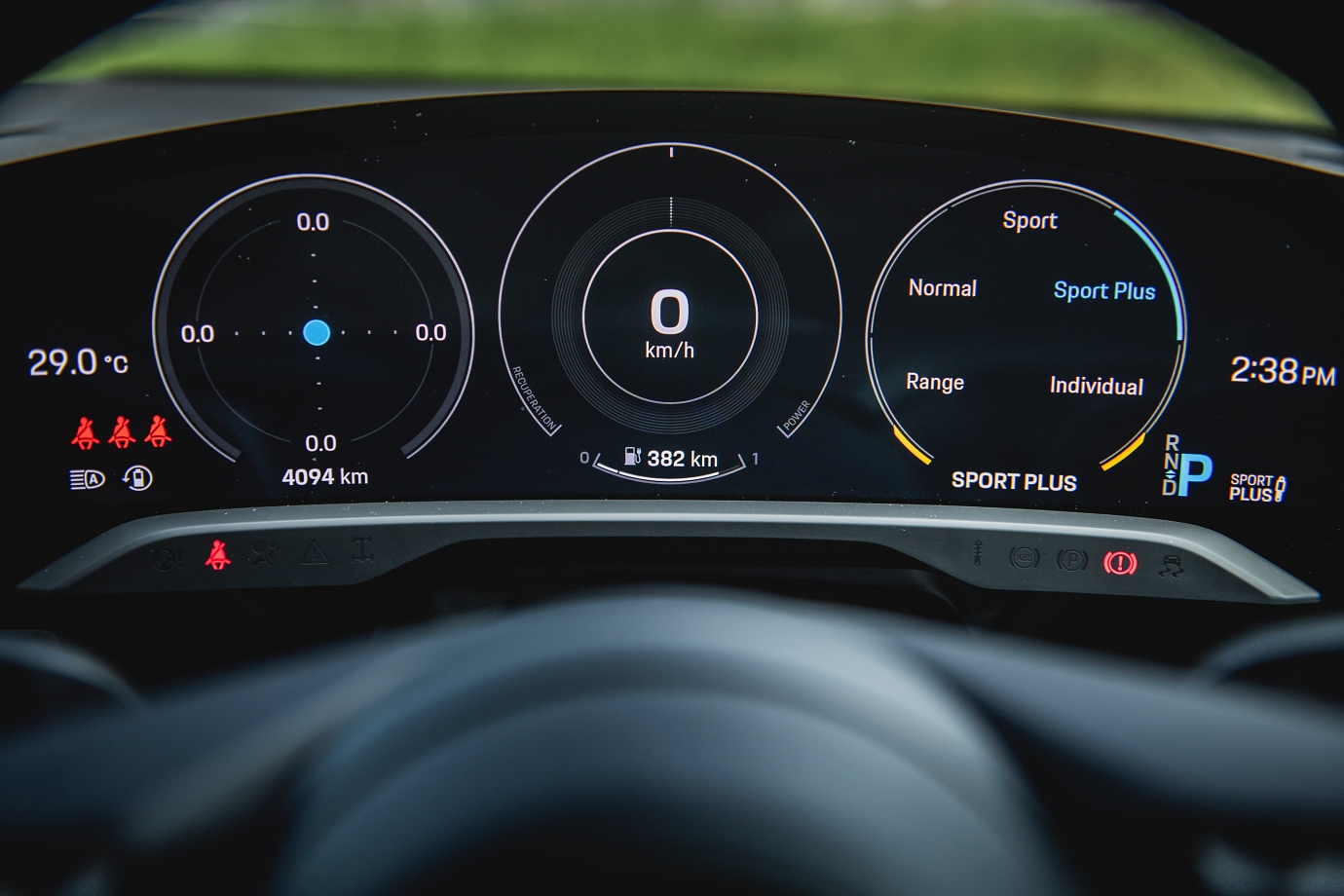
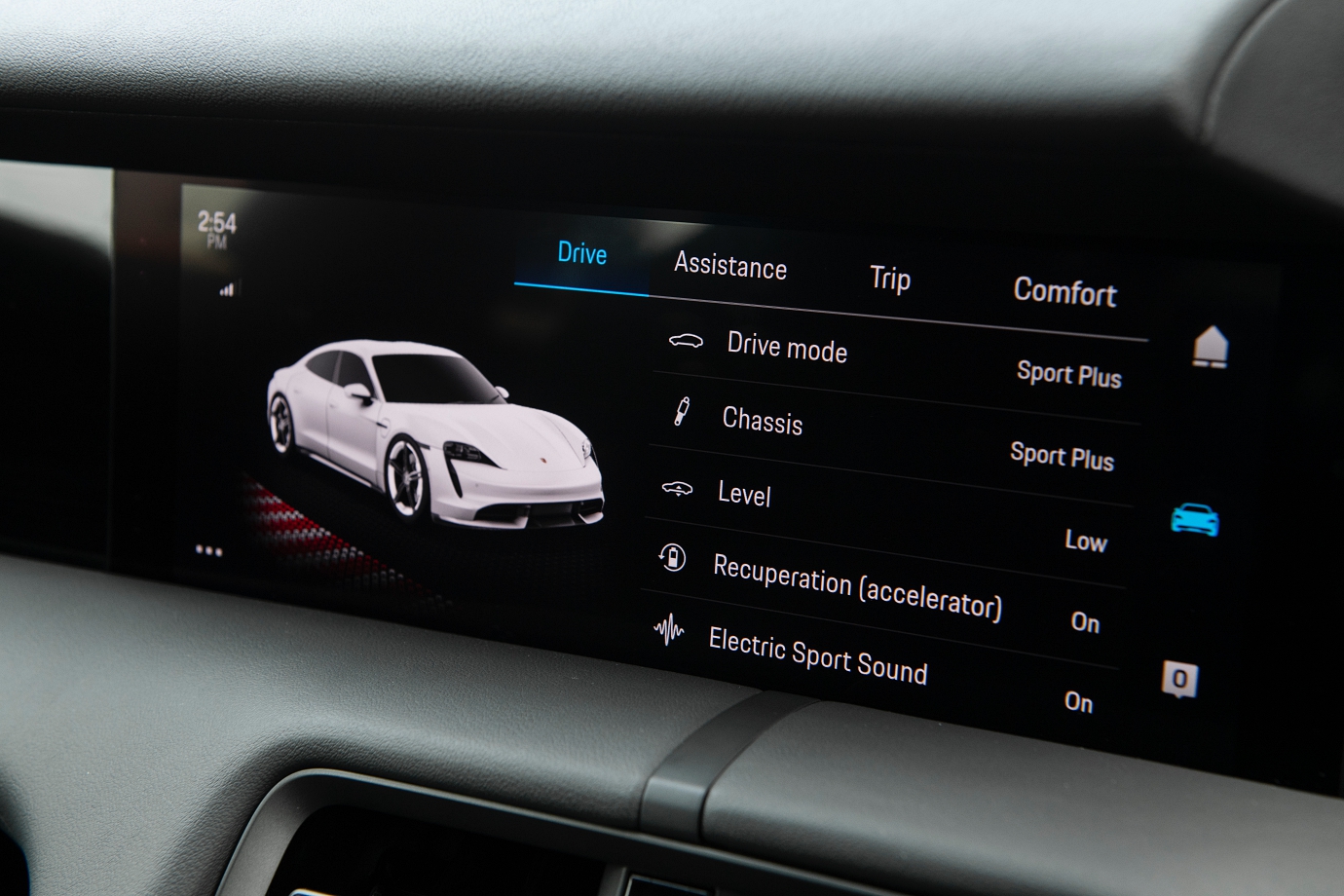
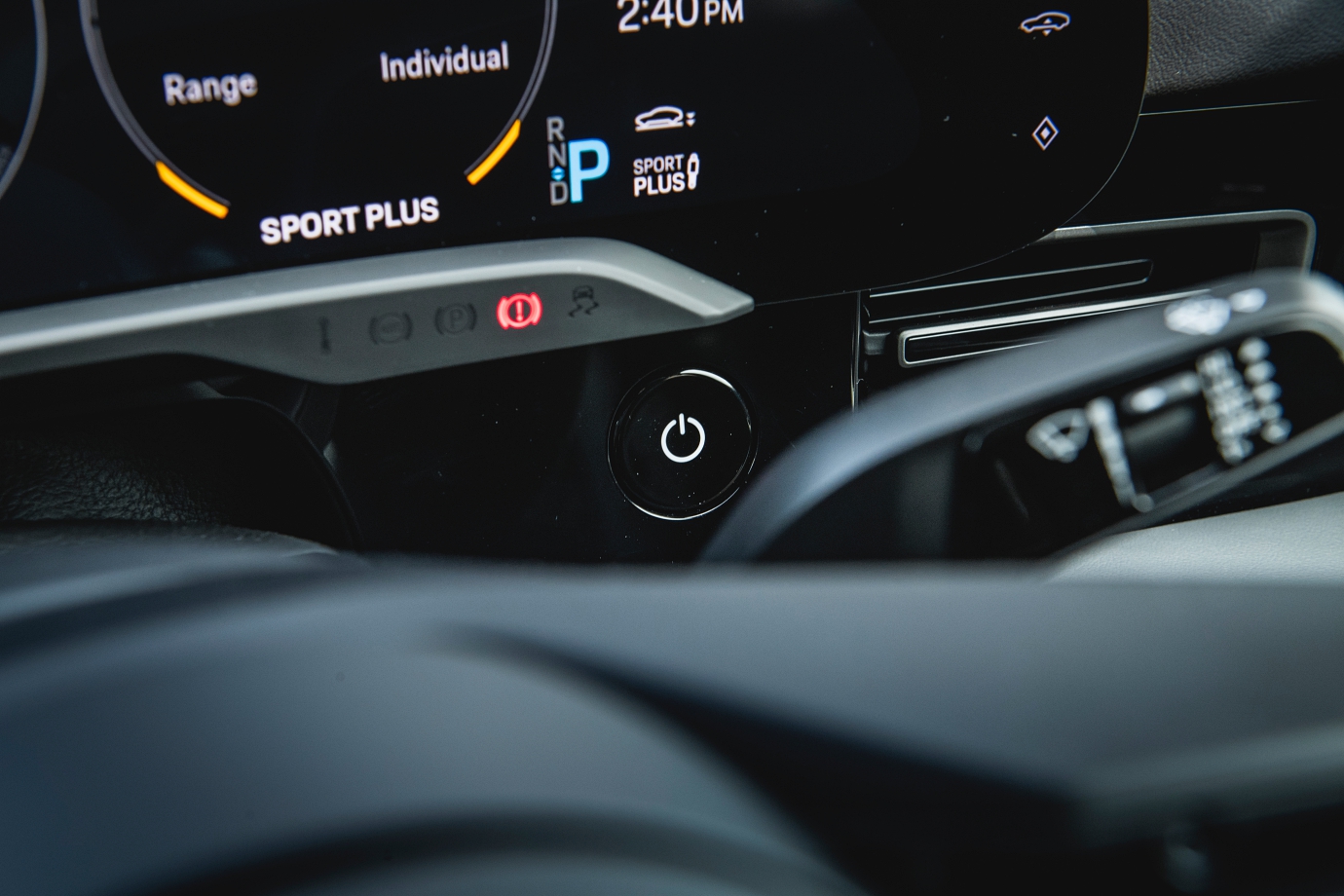
The Taycan’s cabin is familiar Porsche territory, but salient differences let you know it’s ‘same, same, yet different’ from the many generations of Porsches we’ve had the pleasure of driving.
For instance, you turn the Taycan on/off with a push button marked with the international ‘power’ symbol.
Also, the gradual digitisation of instrument gauges in conventional Porsches has come to fruition in the Taycan’s fully digital 16.8-inch wraparound instrument cluster, which can be configured to display up to five views – a nudge-wink throwback to Porsche’s quintet of analogue meters.
The Taycan 4S can transport you in cossetted comfort, but what’s the point in that? With every Porsche, it’s about savouring the drive, so we left it in the aggressive Sport Plus setting.
The optional Performance Battery Plus generates an added 41hp punch on Overboost, so the 4S musters a mega 571hp for blistering quick take-offs when the red mist descends.
If you are blown away by a conventional sportscar’s turbocharged torque, you’ll be highly charged by the crackling lightning bolt of forward propulsion offered by the Taycan’s electric motor as it blitzes in righteous fury from here to line-of-sight between one breath to the next.
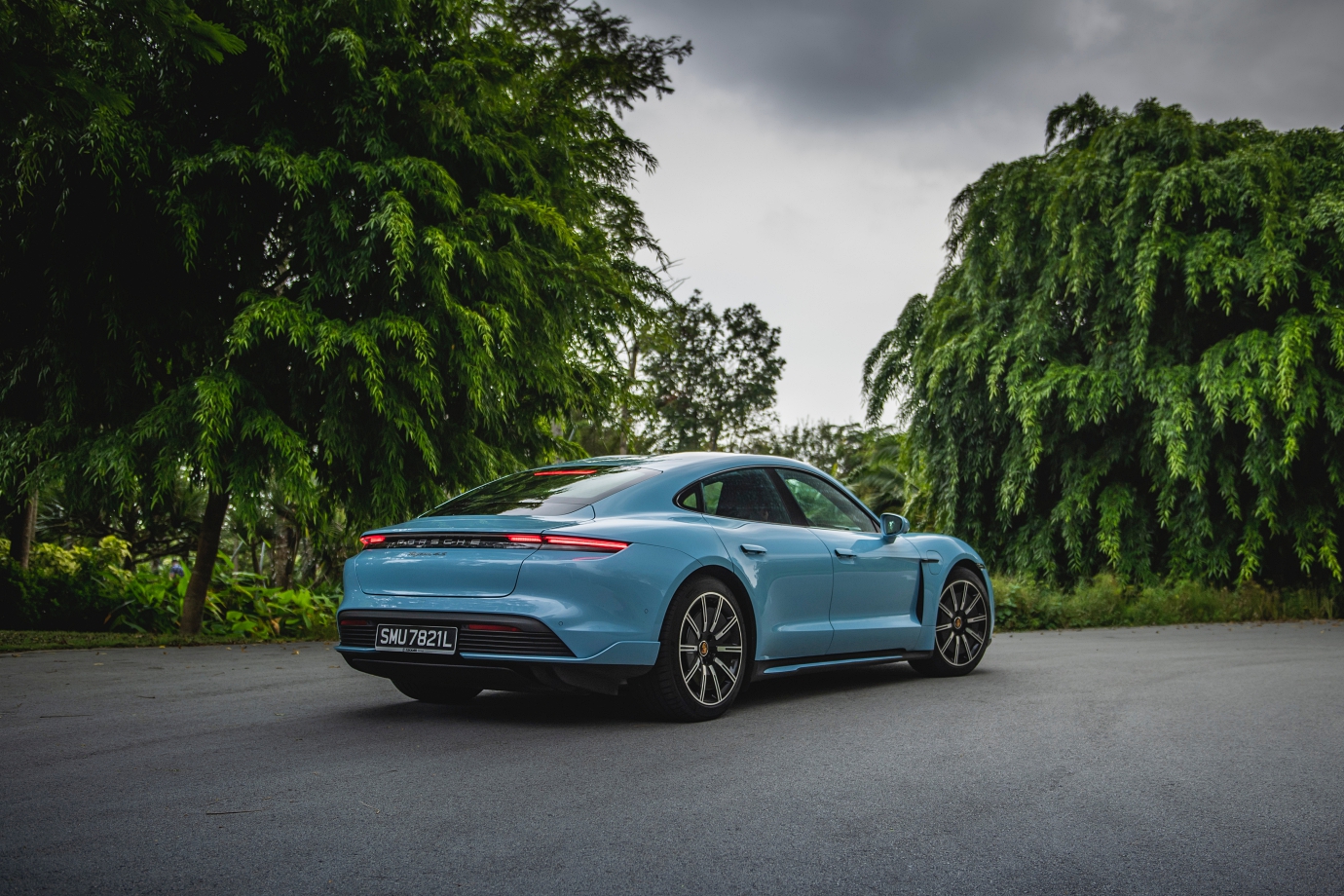
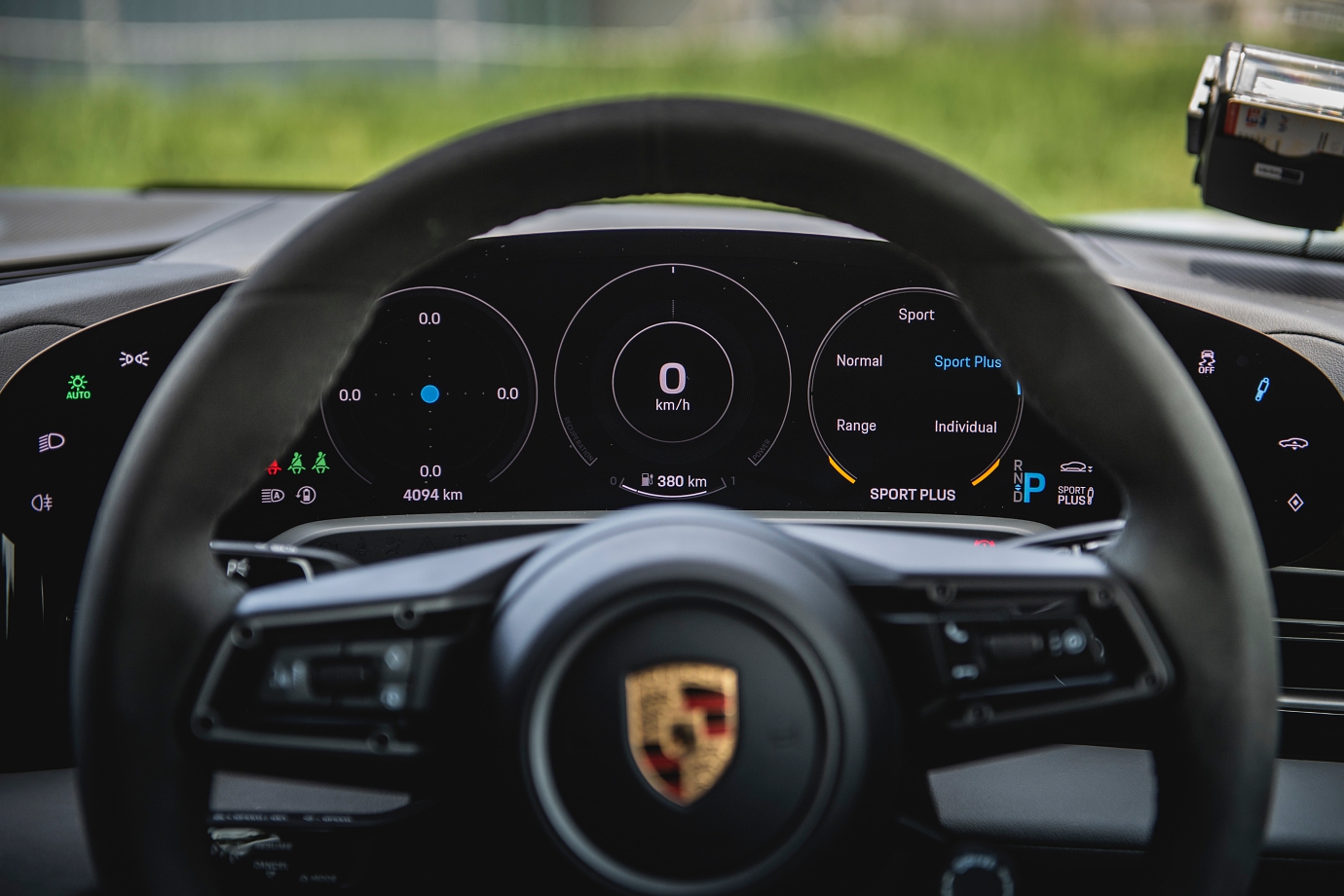
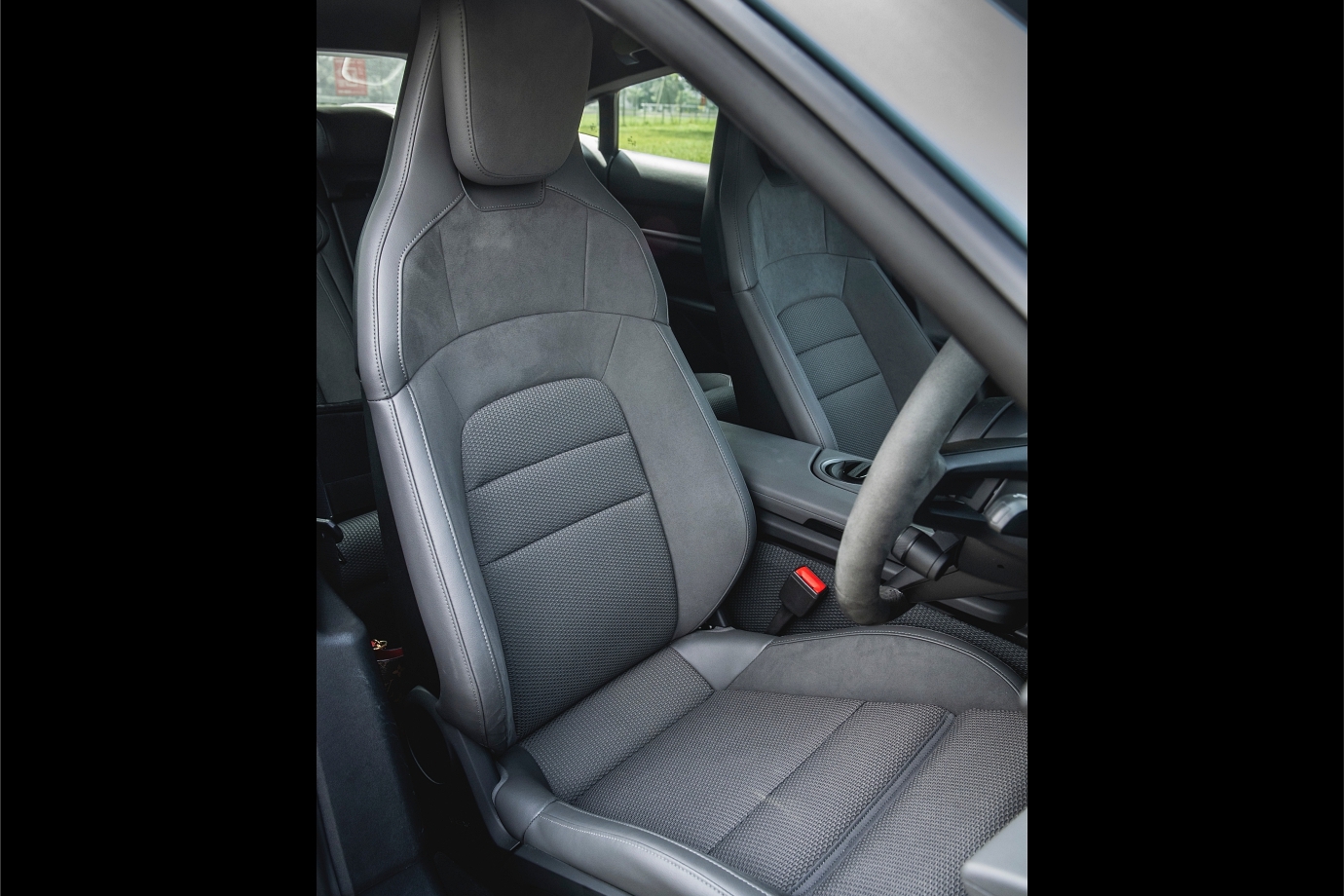
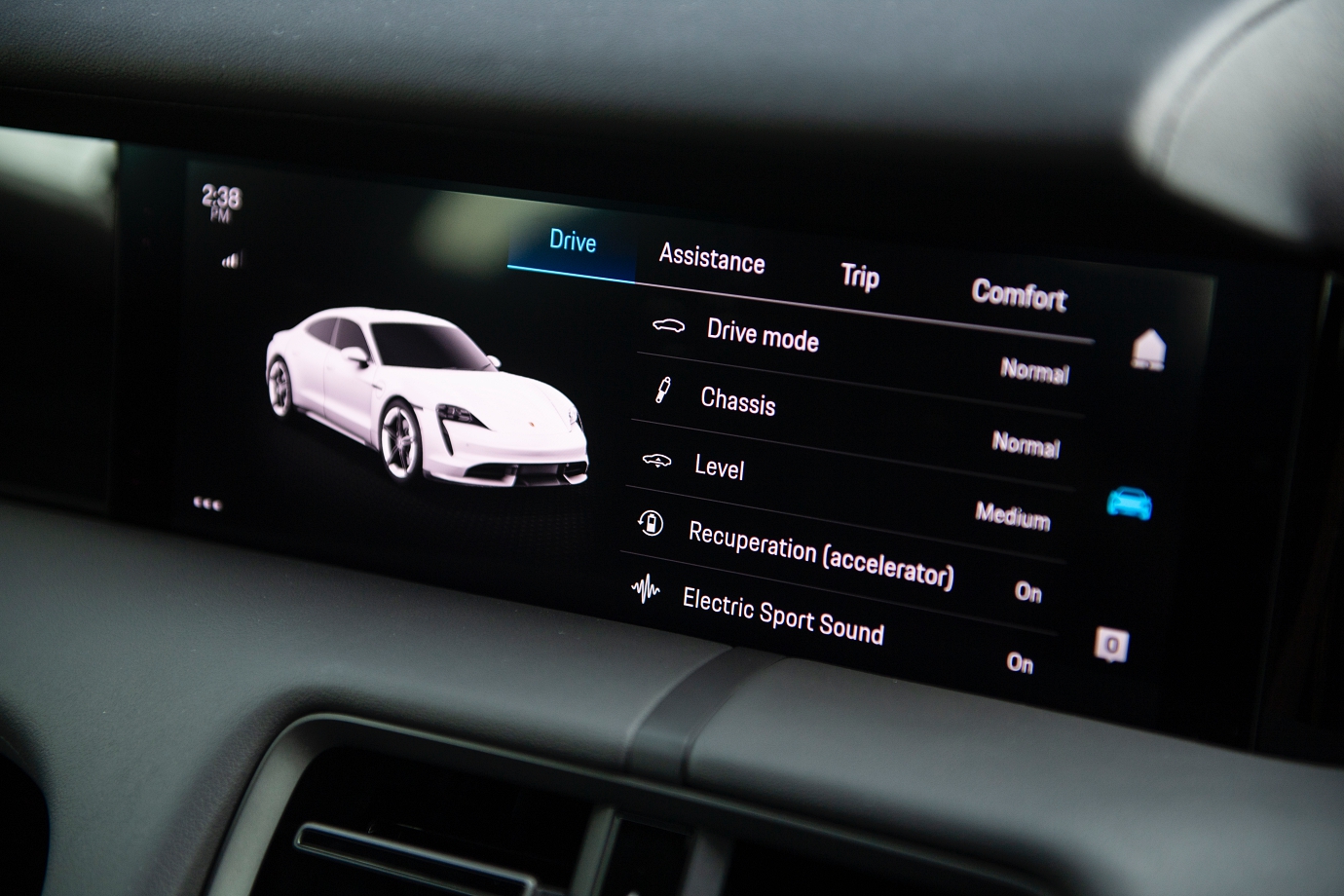
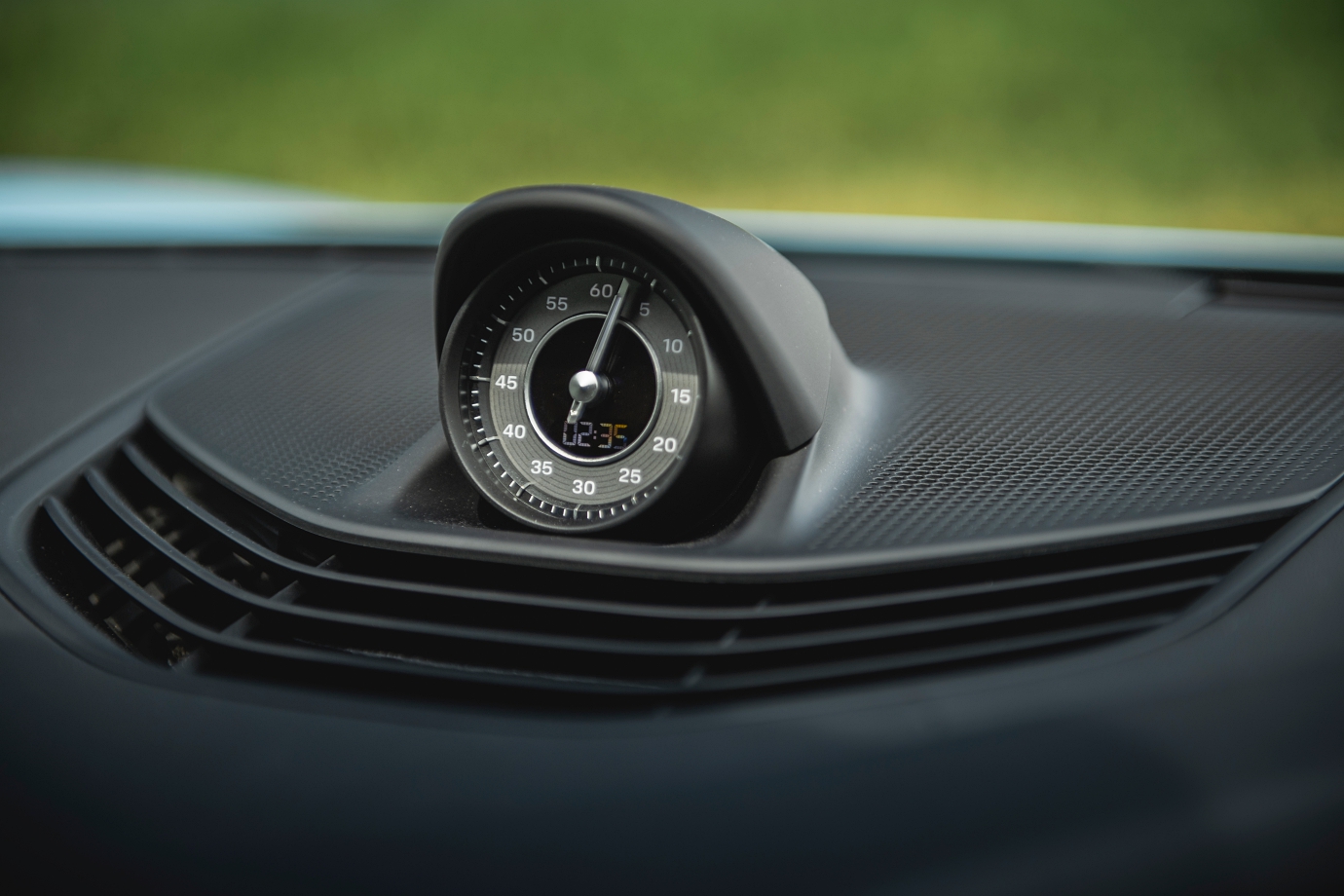
What’s staggering are the sublime seat-of-pants driving and steering feel you enjoy with the Taycan 4S. How did Porsche manage to imbue an electric car with such engaging dynamics as to spark joy in this driving enthusiast?
To say we’re taken by the Taycan is an understatement: relentless acceleration aside, its steering response isn’t just incisive, it’s satisfyingly feelsome as well, and it weighs-up with conviction as the cornering loads build.
You don’t control the car with jagged, ragged steering motions trying to guess what’s going on under the tyres, because the crisp communication through all the touch-points connect man to the machine at a genetic level.
The 4S maintains a fluid poise and balance through the twistiest corners and you quickly learn to modulate the reactive immediacy of the ‘go’ pedal, as well as take advantage of the regenerative effect on ‘lift-off’ to achieve smooth and swift progress.
A low belt-line and less prodigious haunches than the Panamera give it an almost dainty appearance, but also makes it easy to place on the road.
Don’t make the mistake of regarding the Taycan as an elegant velvet glove, because it’s an armoured beast that’s waiting to be unleashed.
In less powerful electric cars, you can get away with driving ‘one-pedal’ style, where you rely on the regen effect to slow the car down (sometimes even to a complete stop) without ever touching the brake pedal.
However, with performance EVs like the Taycan and the effortless manner in which it puts on a deceptive turn of speed, you’ll need to be more conscious of using the brake pedal to haul the car to a standstill or when you need to shed big speed in a jiffy.
The optional Porsche Electric Sport Sound attracts its share of detractors, but it suits the Taycan to a ‘T’. After all, you can’t expect a car with no engine to sound like it has one.
Apart from scaring off roosting pigeons on the road, who otherwise can’t hear the eerily quiet electric car approach, its lushly vibrant electronic tonal range rises and falls with the ‘go’ pedal position, and it’ll rouse quickly to fury during pedal-to-metal moments like an angry Artoo unit to create a soul-stirring aural accompaniment to one’s go-faster shenanigans.
Unlike some cars these days, you don’t shutdown one’s mind when you’re driving the Taycan, or any Porsche for that matter.
There’s ample feel from the controls and seat-of-pants you’re only ever actively piloting the car (as you would any Porsche) – in fact, some might say it’s only in cars you don’t care driving that you’ll need to put your brain in neutral and engage ‘autopilot’, because all you want to do is to get to your destination.
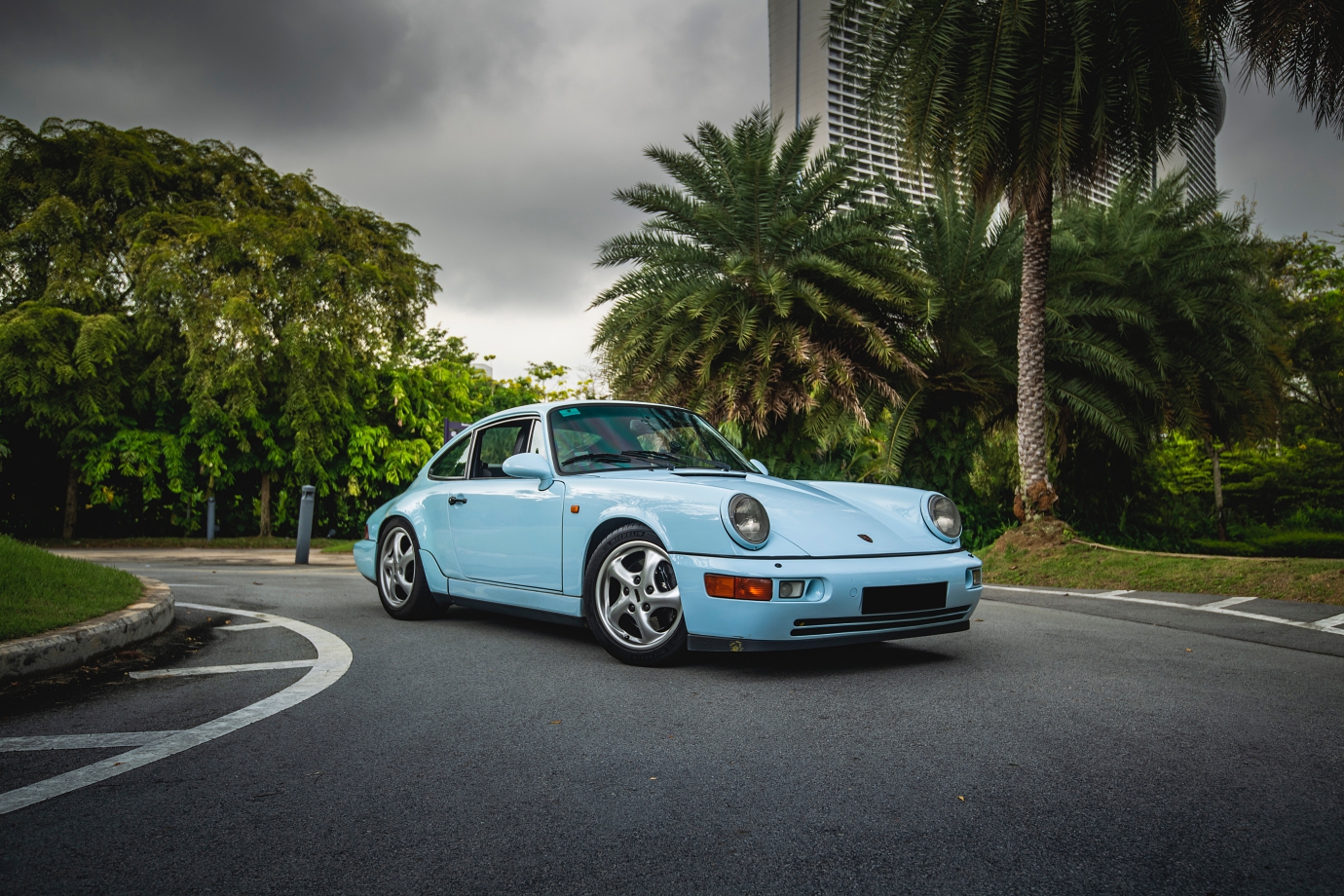
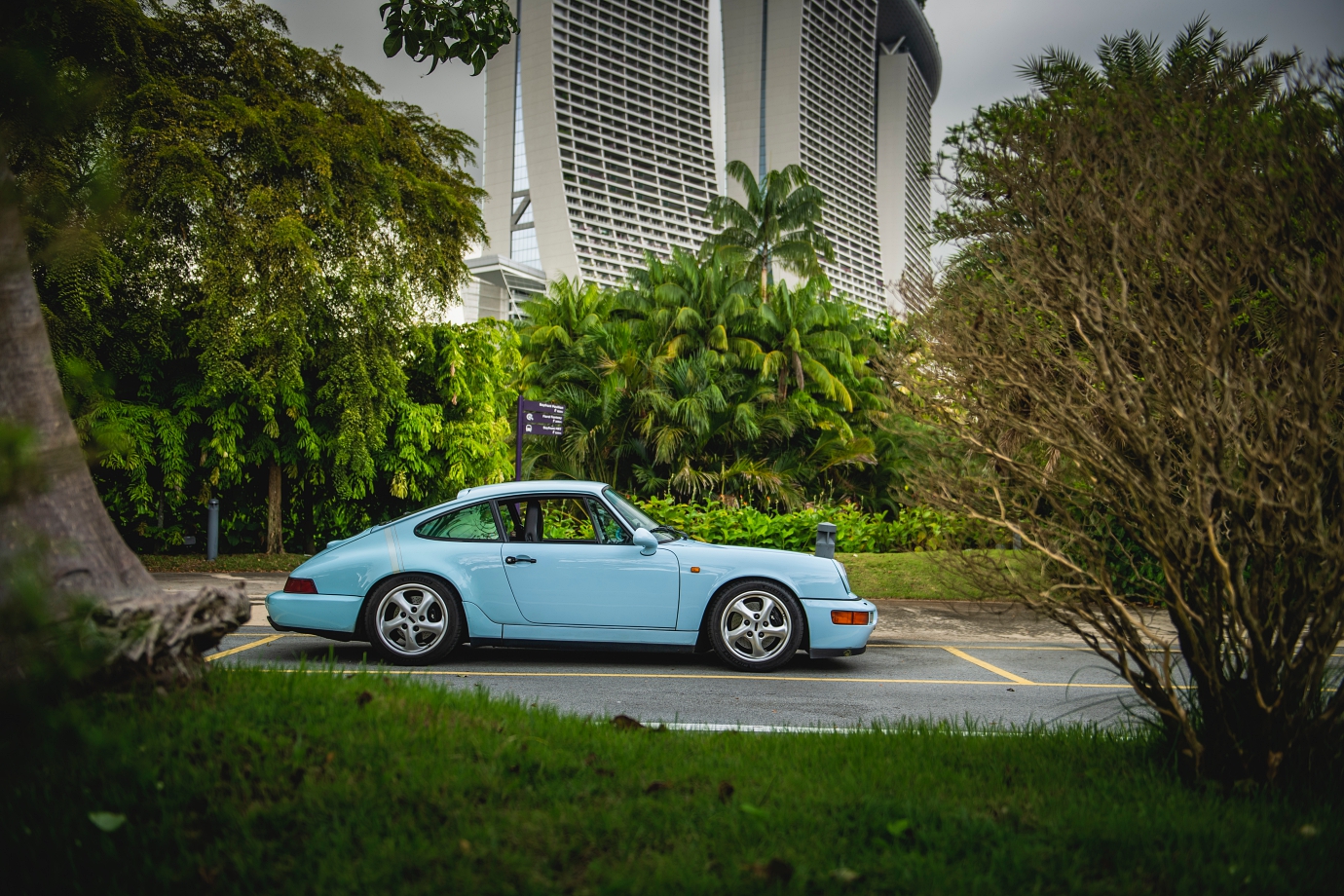
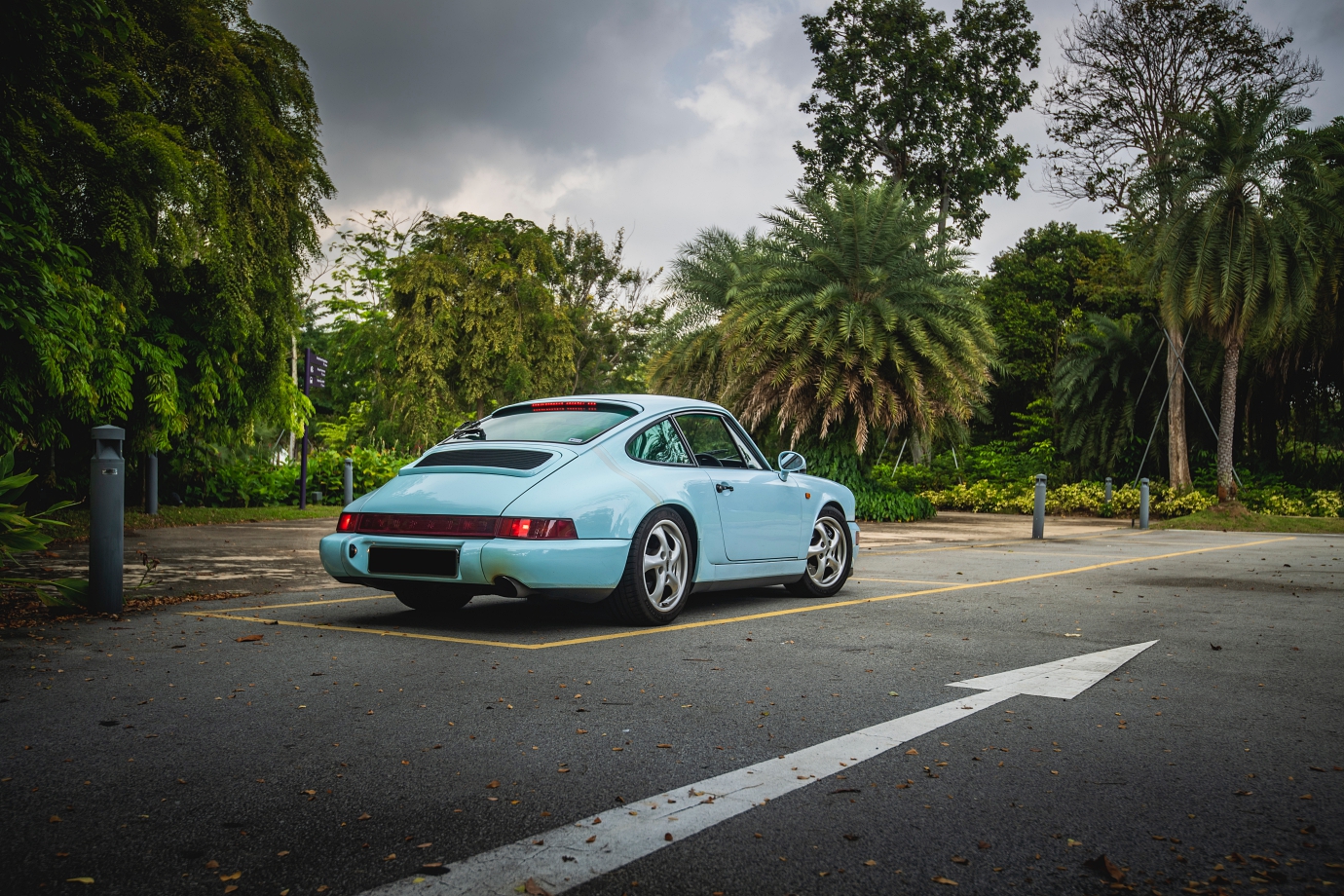
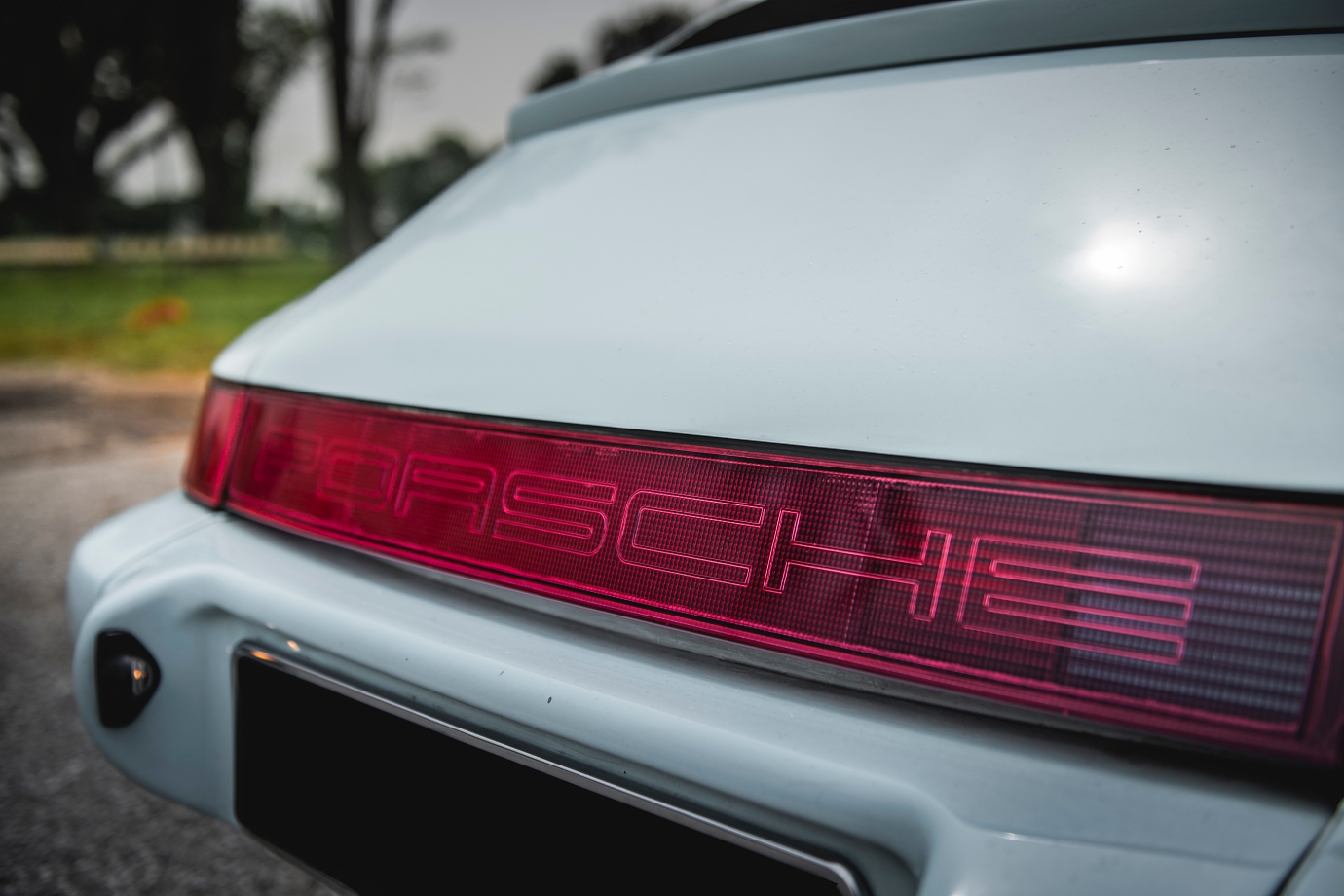
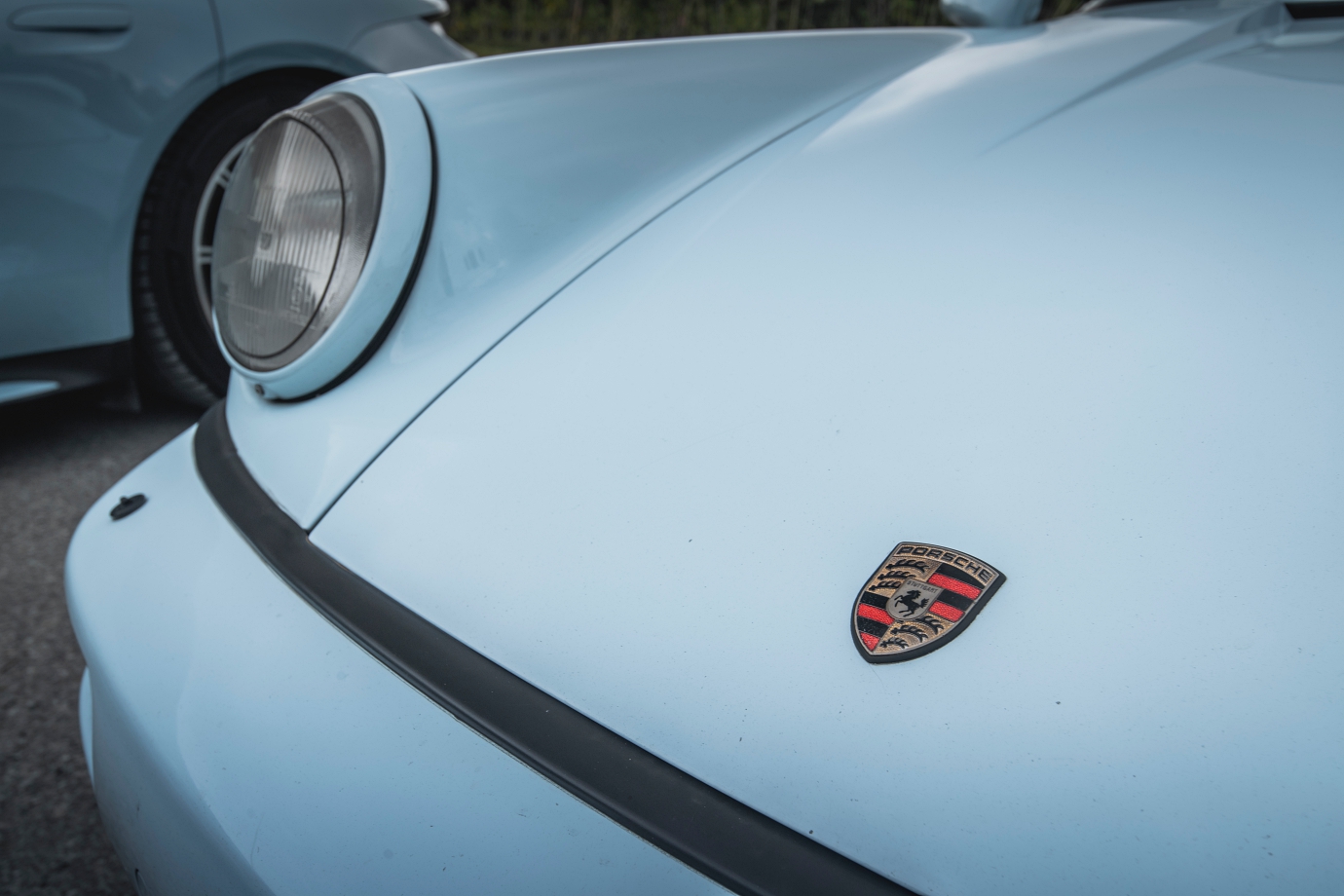
PORSCHE 911 CARRERA 4 (964 C4)
Like the original Fiat 500 we drove many issues ago, there’s something whimsical about baby blue cars that puts a big smile on one’s face. However, with this 964 C4, that goofy grin could quickly transform to a dumbfounded slack-jaw as it drops some serious gap between itself and most chase cars.
(What Fiat 500? Click HERE to read about the Cinquecento)
Naturally, we hear the fruity air-cooled melody of the burbling flat-six long before it pulls up, and you quickly appreciate how the evolution of a long line of 911s has served as inspiration for the Taycan’s silhouette, as only the fittest elements are carried forward and retained in the modern Porsches.
This C4 is no prissy pristine garage queen polished to a hard shine, but is a daily-driven (both in Singapore and pre-pandemic, taken on long tours up North) and meticulously maintained car kept in perfect running order, which is arguably the only way a Porsche should best be enjoyed.
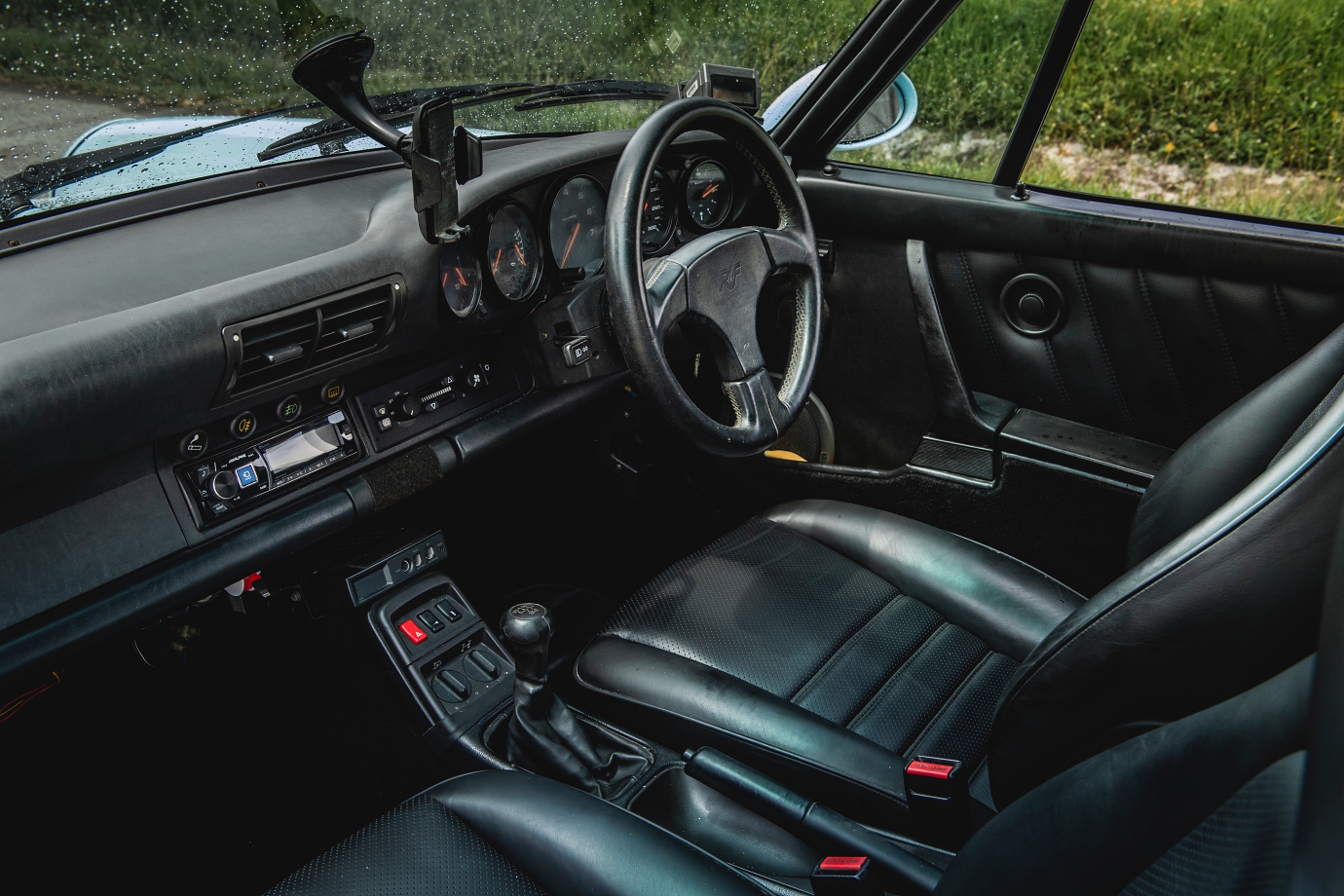
There’s a sense of purity to the 964 – be it RS, C2 or this C4 – that is evident in its proportions, which seem almost petite alongside the Taycan.
A rear horizontal bar connects left to right tail-light and accentuates the width of the car, just like it does for the Taycan… all the better for following cars to have something to look at as it recedes into the distance, of course!
(Click HERE to read about our drive in a 500,000km 964 Carrera RS)
(Click HERE to read about drive of 964 C2)
It’s the same story in the cabin, with a fuss-free environment and dashboard architecture to let the driver focus on the task at hand: driving. And the best way to enjoy the flat-six on that cool weekend morning is with the windows down.
When you’re in prime seats to enjoy the soaring air-cooled aria from the naturally-aspirated flat-six as you work your way up the five-speed gearbox, you certainly don’t need things like air-conditioning or an expensive hi-fi to interfere with the soulful rendition.
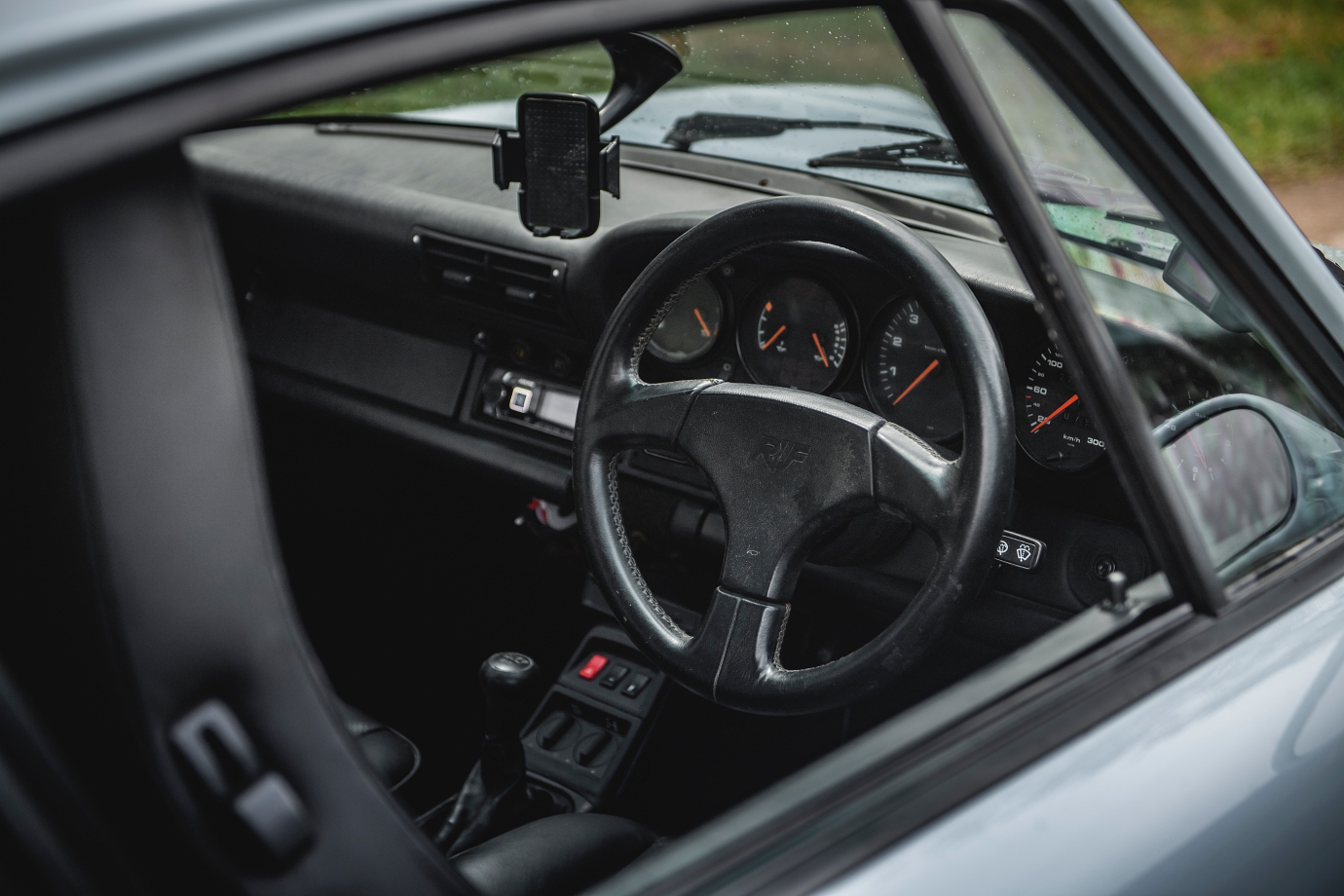
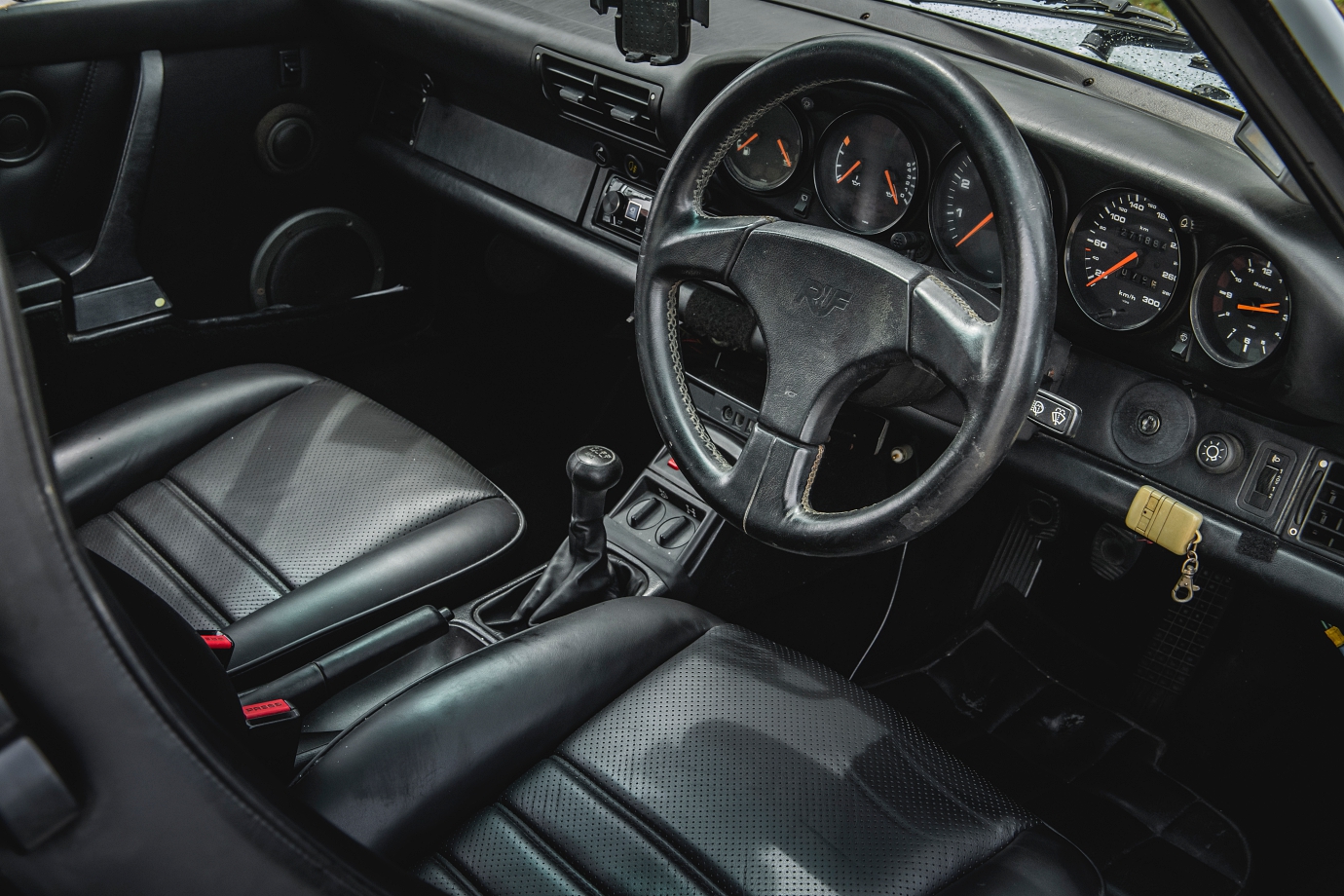
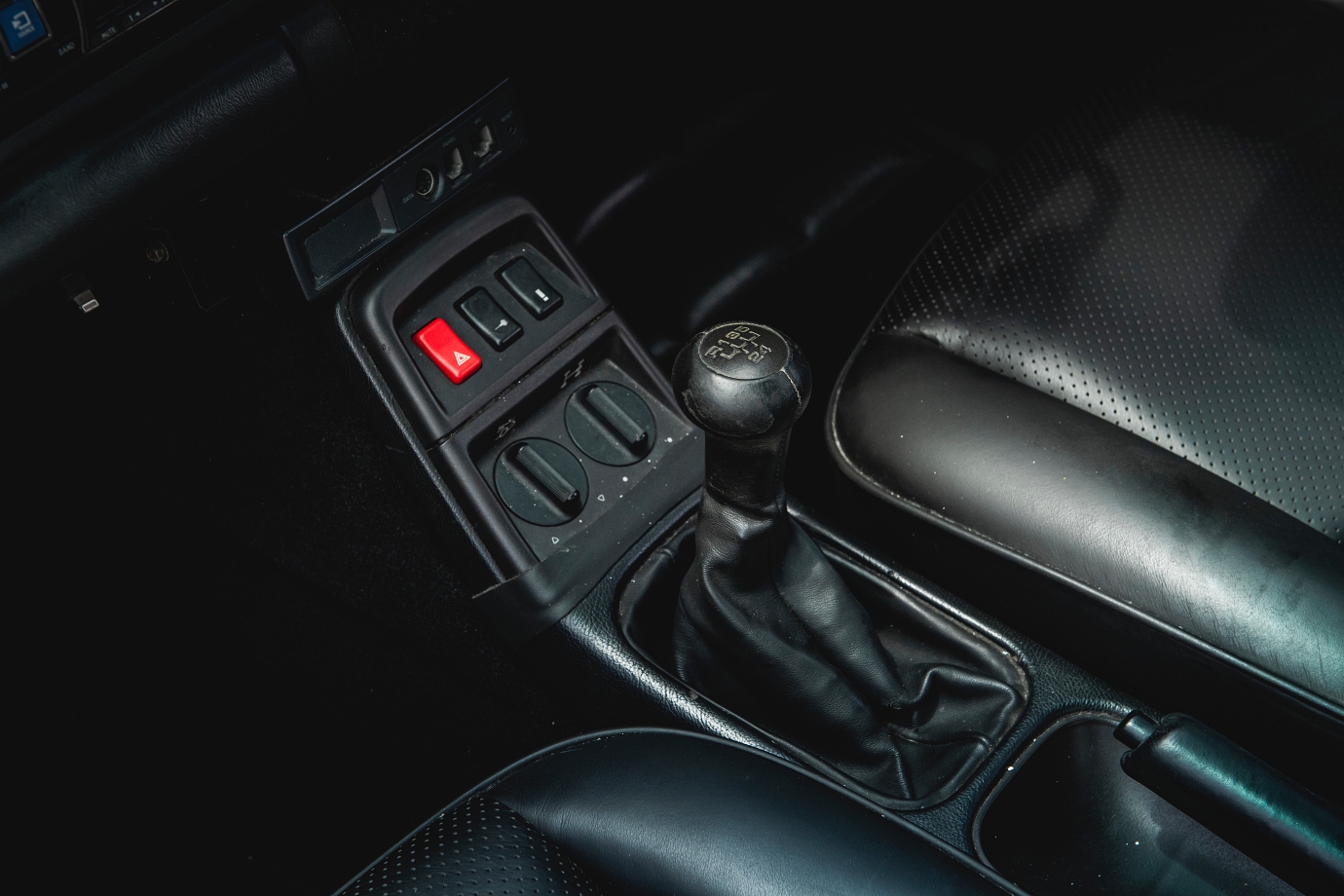
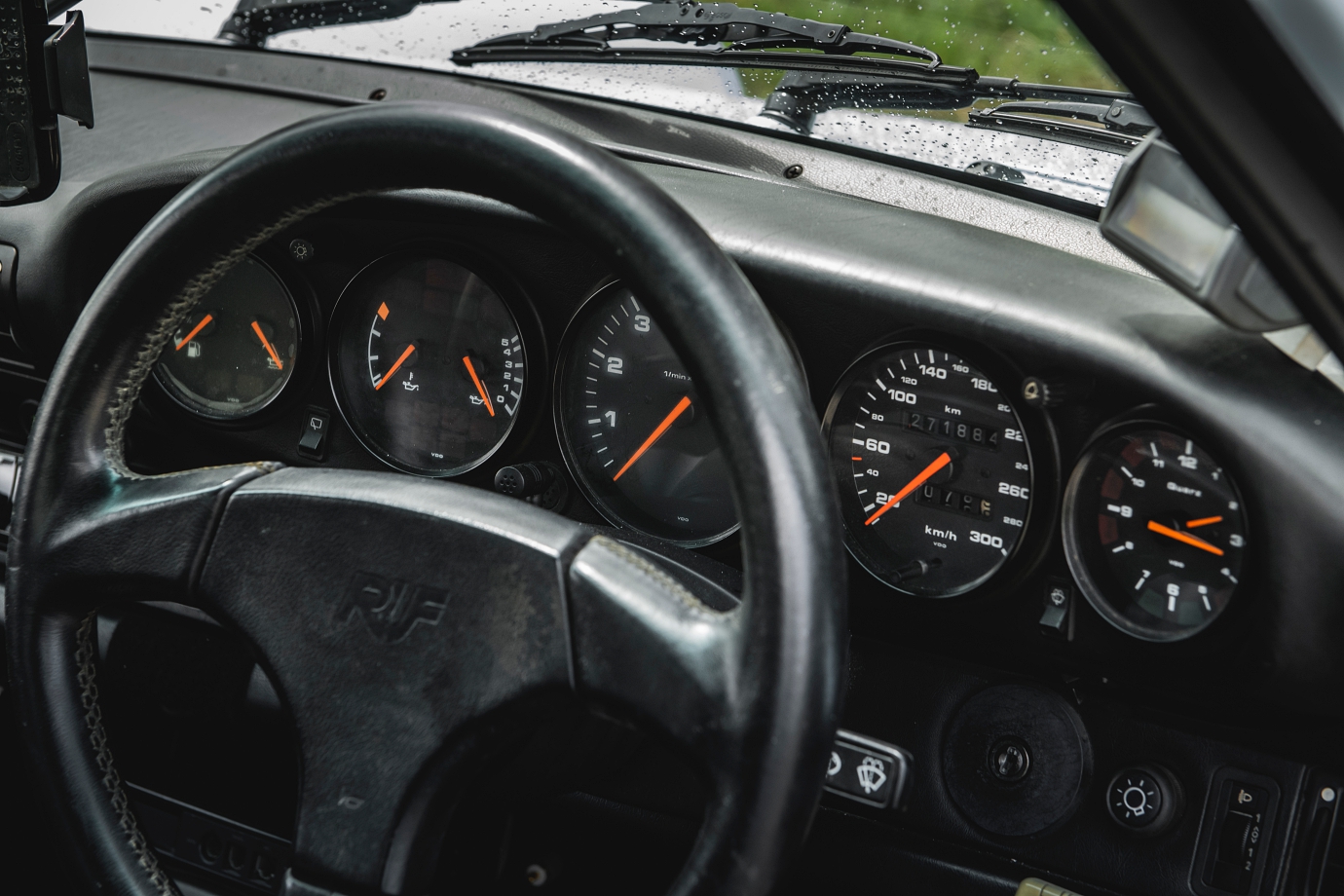
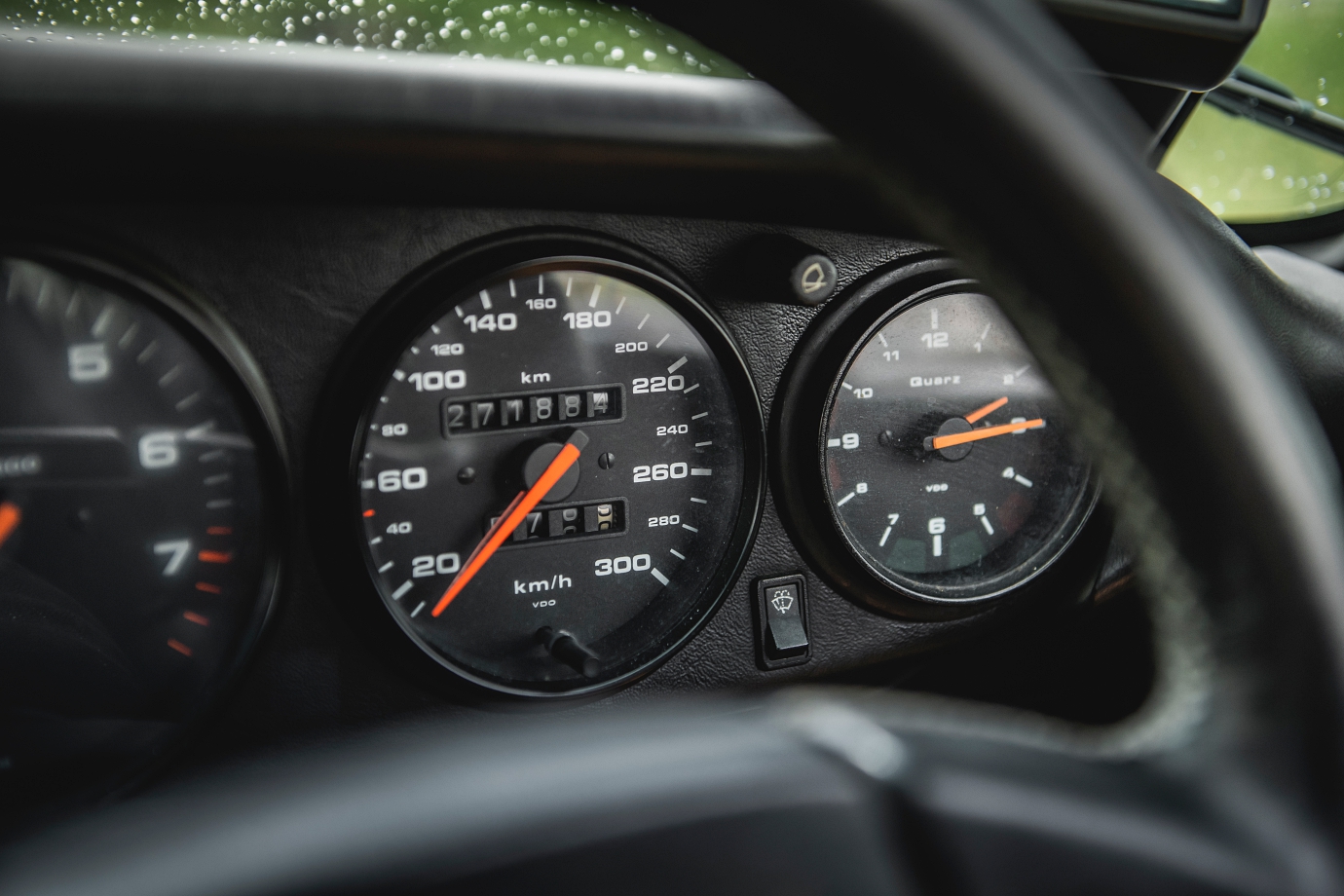
The shifts are satisfyingly positive as each gear is snicked slickly into place, with a wonderfully elastic quality to the engine as it is wrung happily towards the redline that comes from regular spirited use.
And as everyone knows, age spots in regular cars are regarded as vintage patina in such driver’s cars: the well-worn ‘brassing’ on major contact points of the seats, steering wheel and shifter only add to its provenance.
With just 1450kg to shift, the engine musters more than enough verve for fast road use, but the straights only serve as prelude to the main event: corners.
Some intuition and a lot of introspection are required for driving older rear-engined 911s, although there’s an added plantedness to the C4 (thanks to its all-wheel drivetrain) compared to the light-footed C2 and the even more agile RS we’d previously driven.
Of course, true to old 911 form, how the 964 handles with a heavy load of fuel up front versus a near-empty tank is a stark reminder of how much we take for granted in modern cars, especially with regards to weight management on a rear-engined sportscar.
A heavy fuel load adds weight, but also helps keep the front tyres planted, whereas a light-load means less weight to move, but also means less weight over the front tyres when you’re tackling fast, undulating roads.
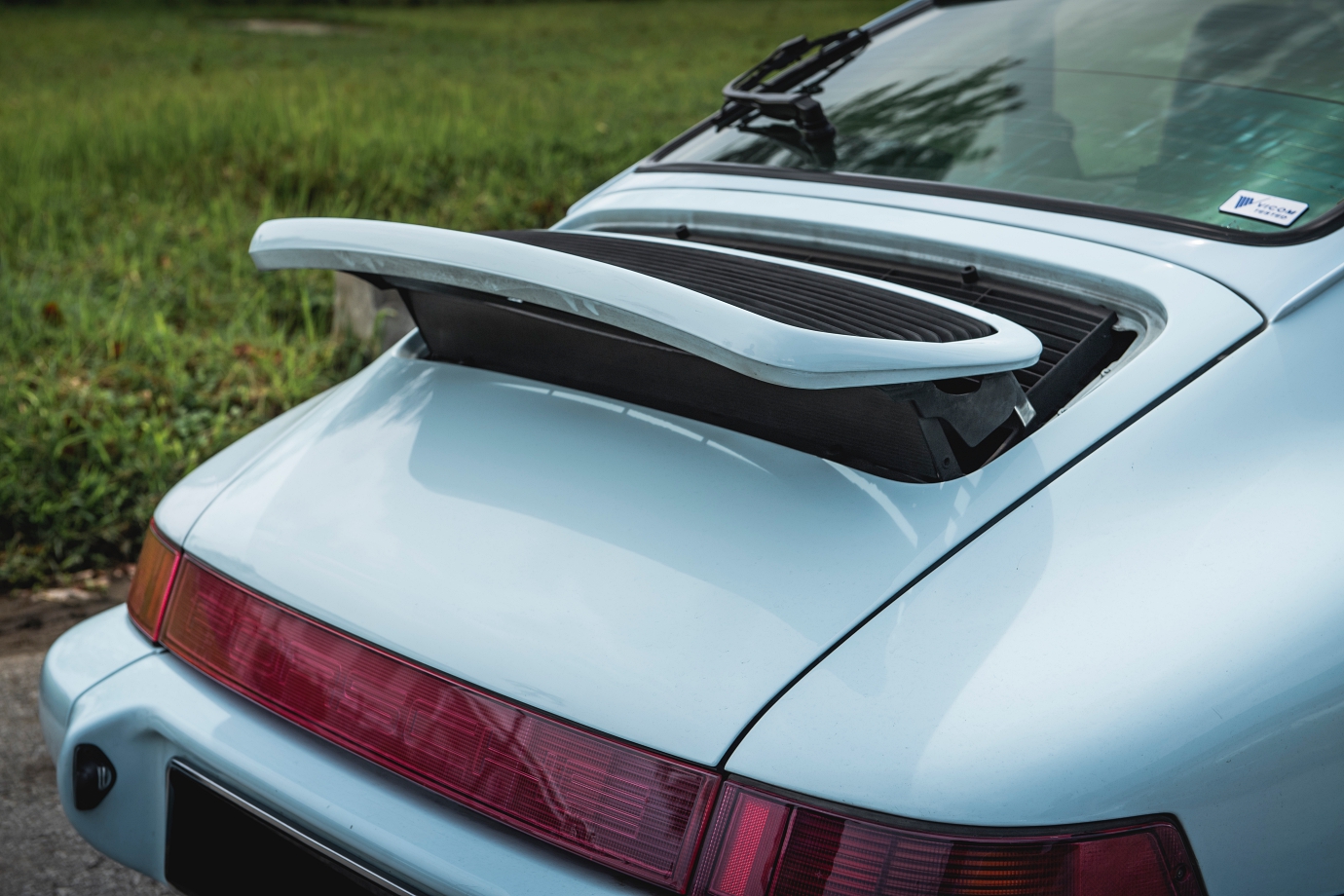
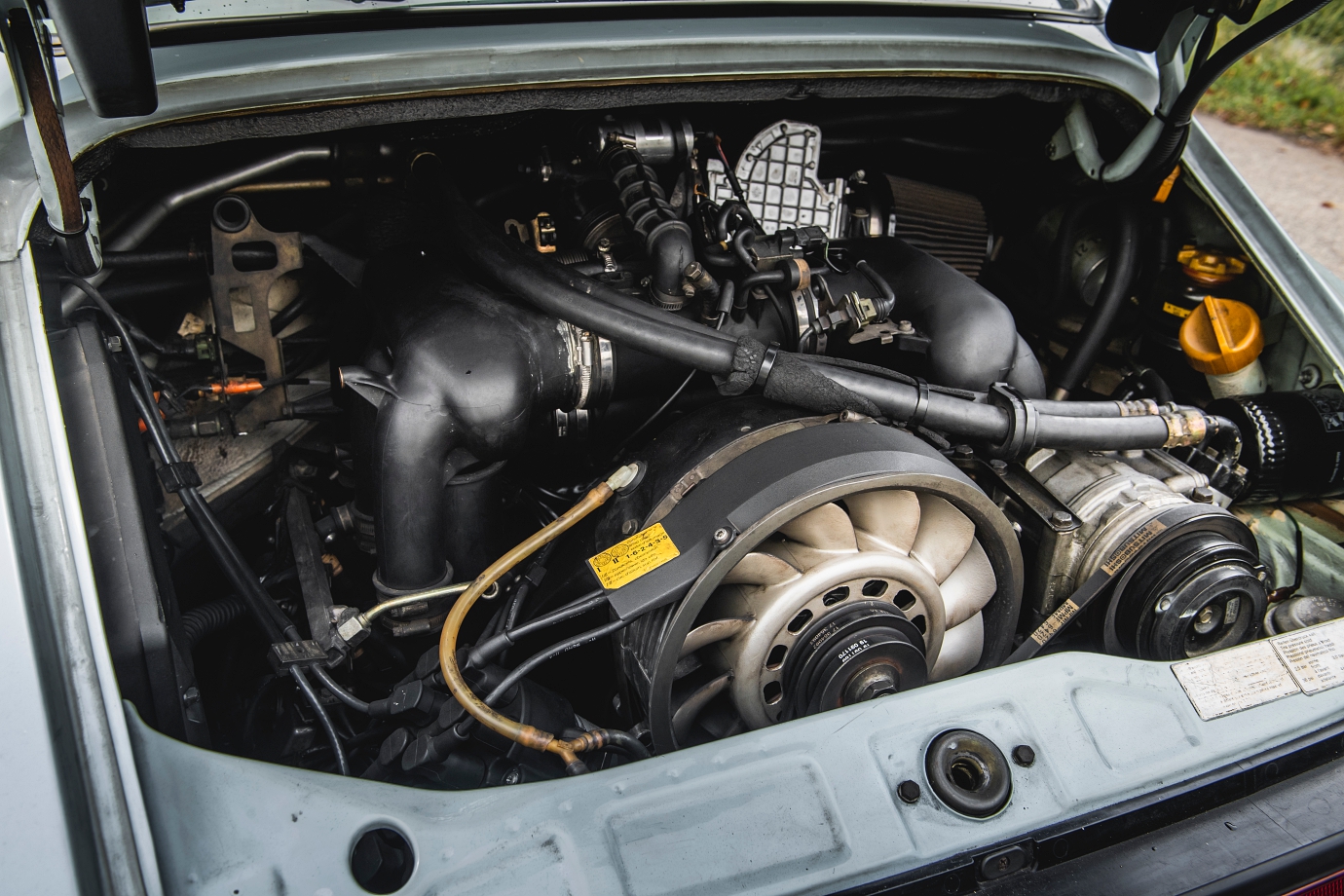
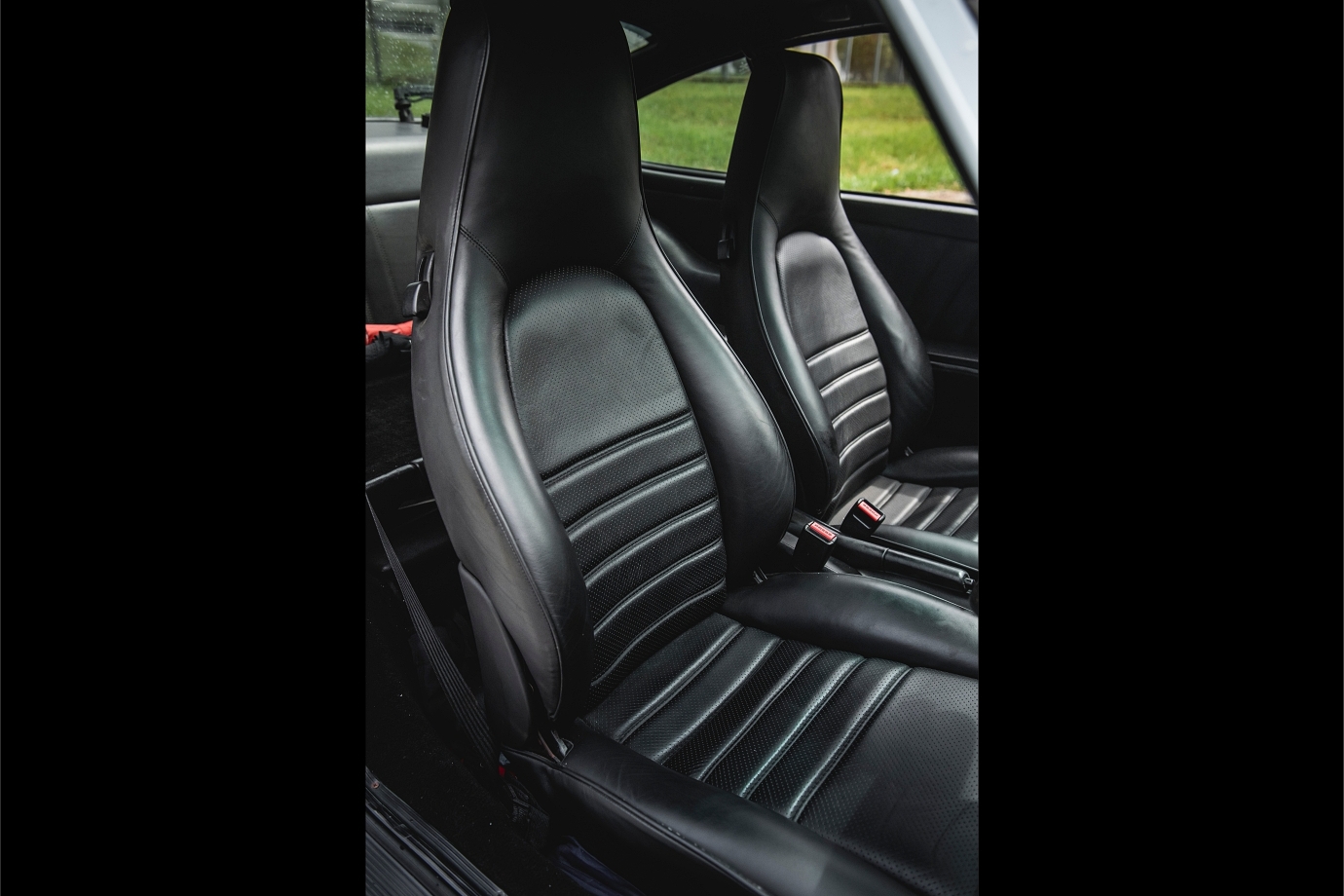
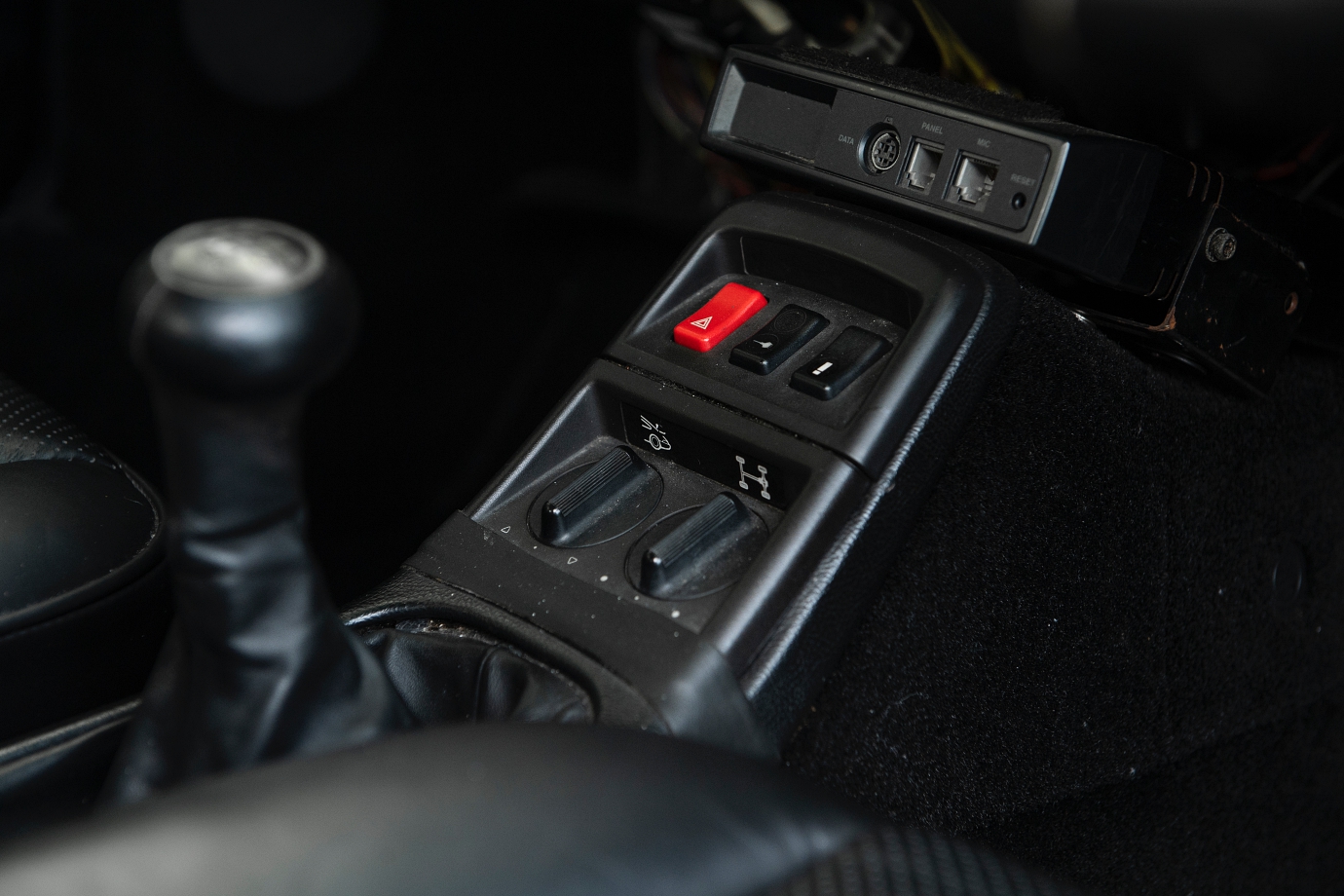

The jinks and jiggles from the steering wheel and the deep pulsing massage of the powertrain that permeates the driver’s body through seat-of-pants is a welcome throwback to analogue vinyl records in a world inundated by digital compressed music.
There’s just so much more to feel, hear and smell with these youngtimer air-cooleds that it seems you’ve stepped out of a black-white photograph into a lush technicolour brave new world, only it is ironically a blast from the past.
Some may regard such a level of engagement as an inconvenience, but we’re of the age that appreciates how much our emotions stirred into a pleasant buzz the harder we have to work at driving fast, because it truly is a labour of love.
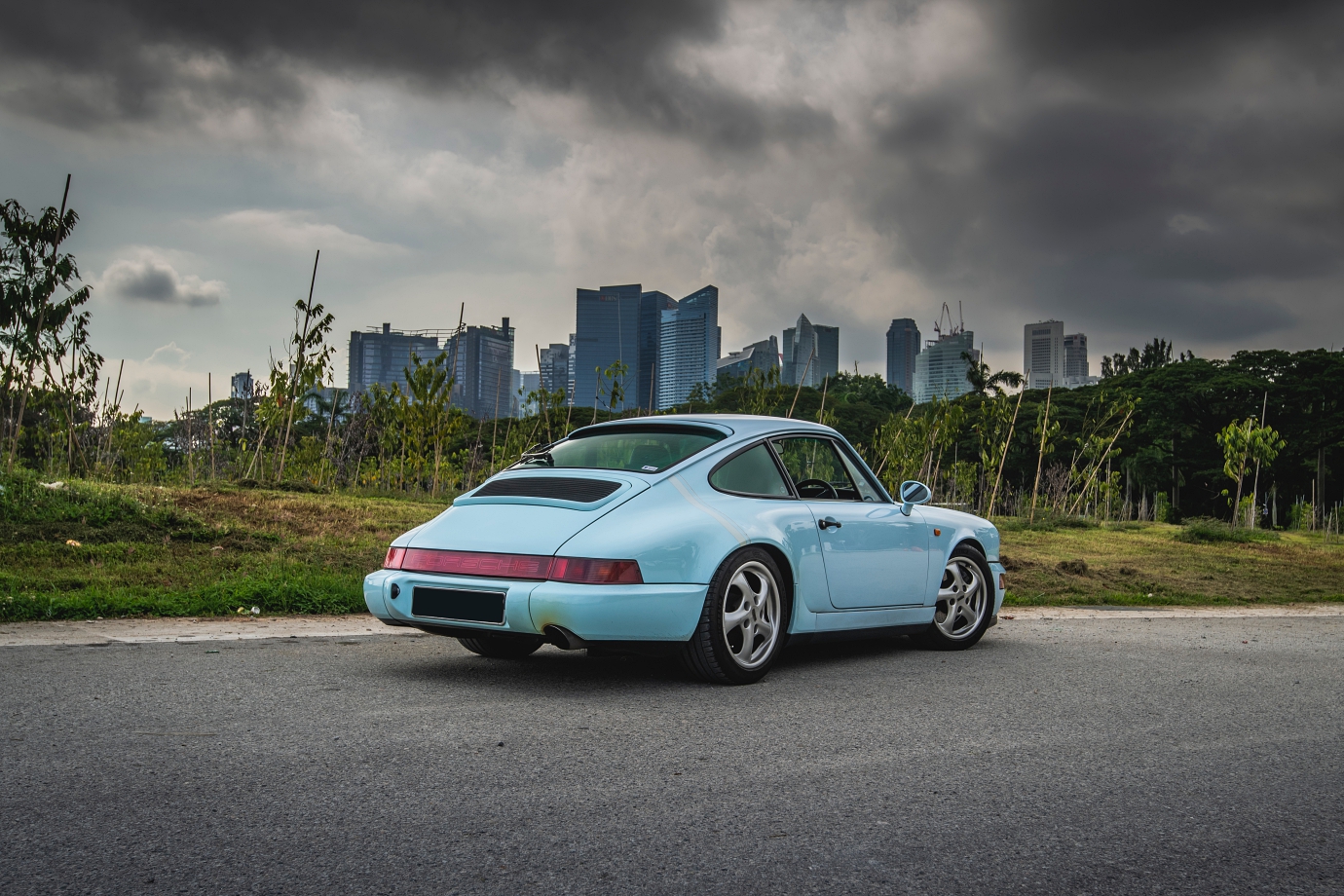
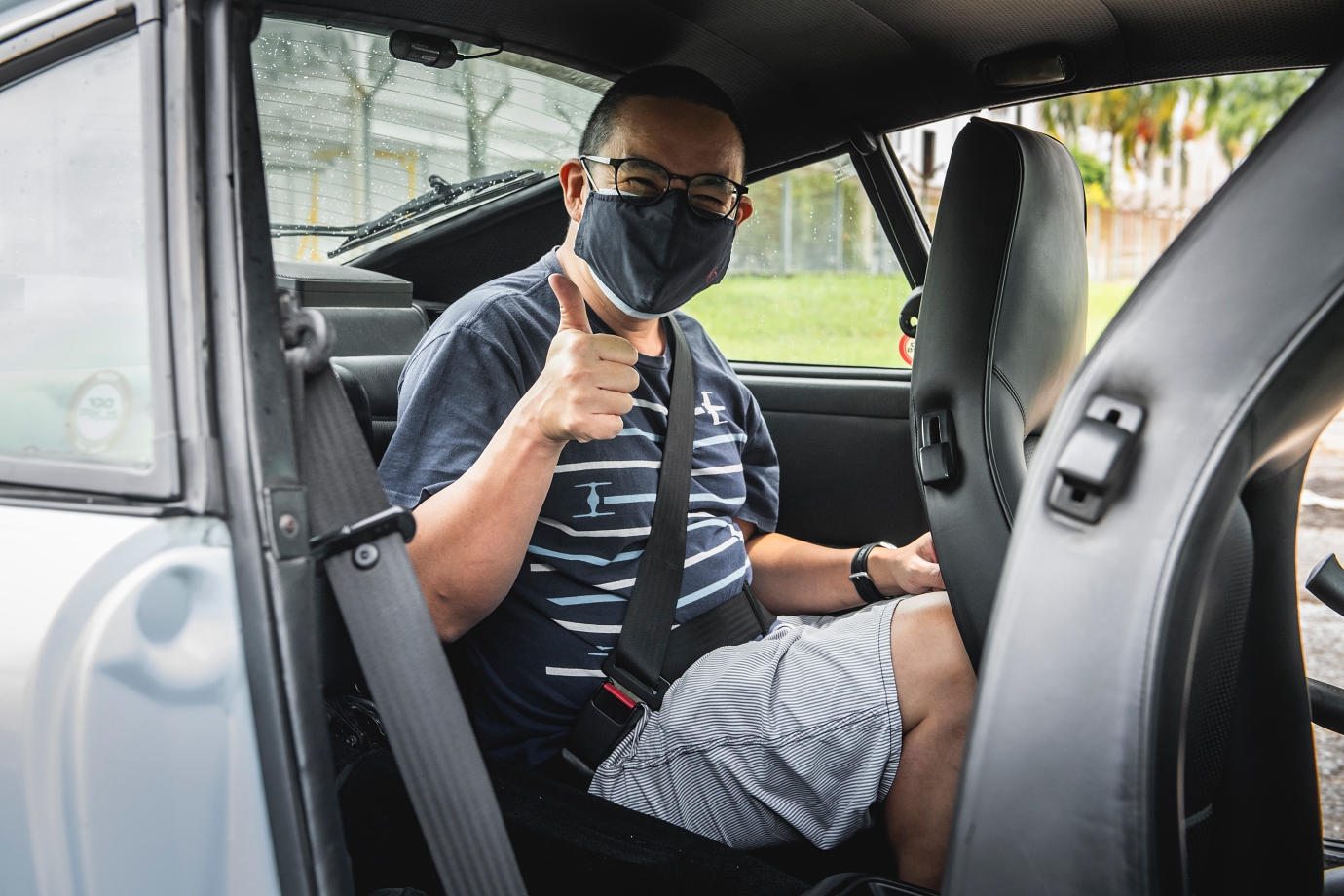
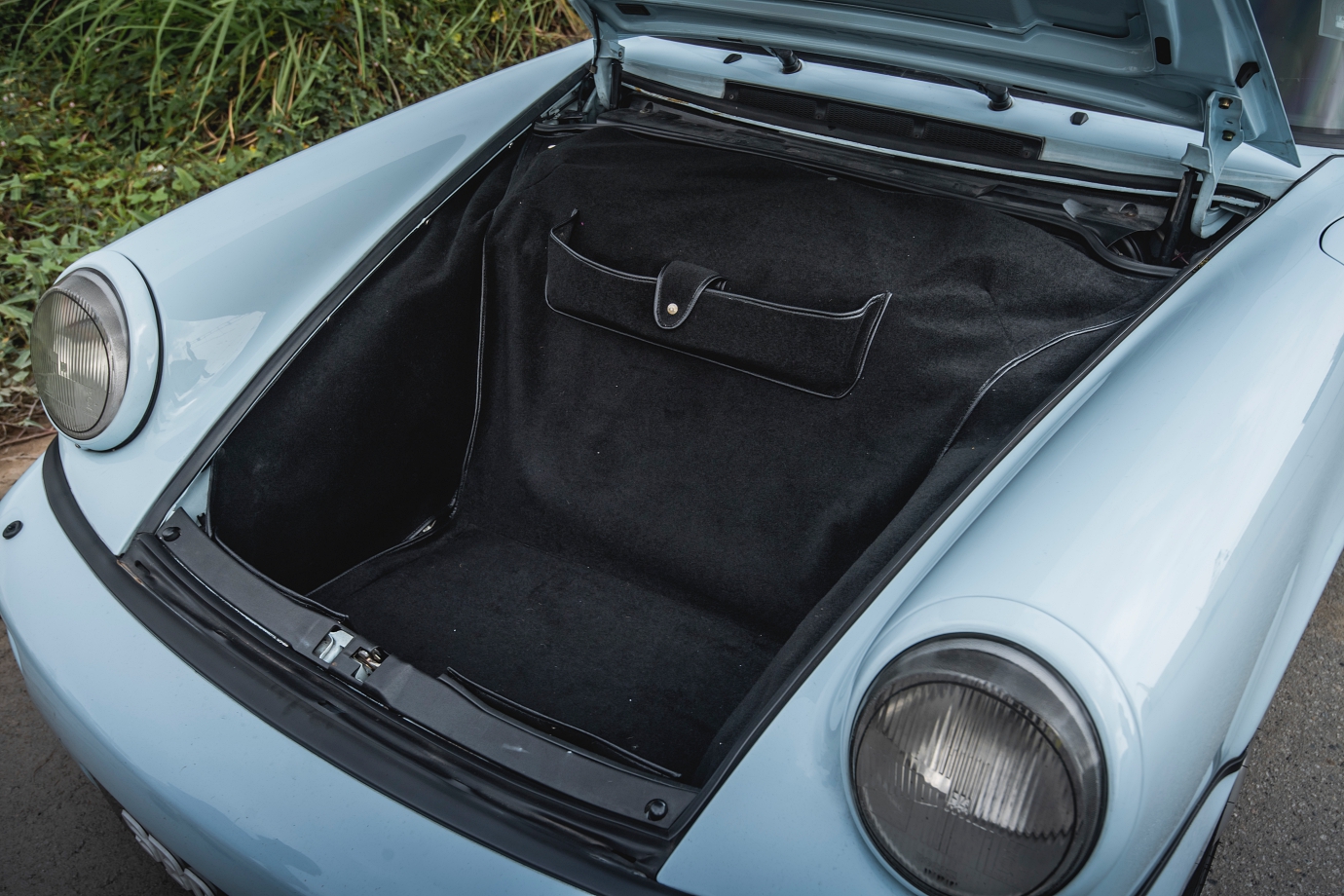
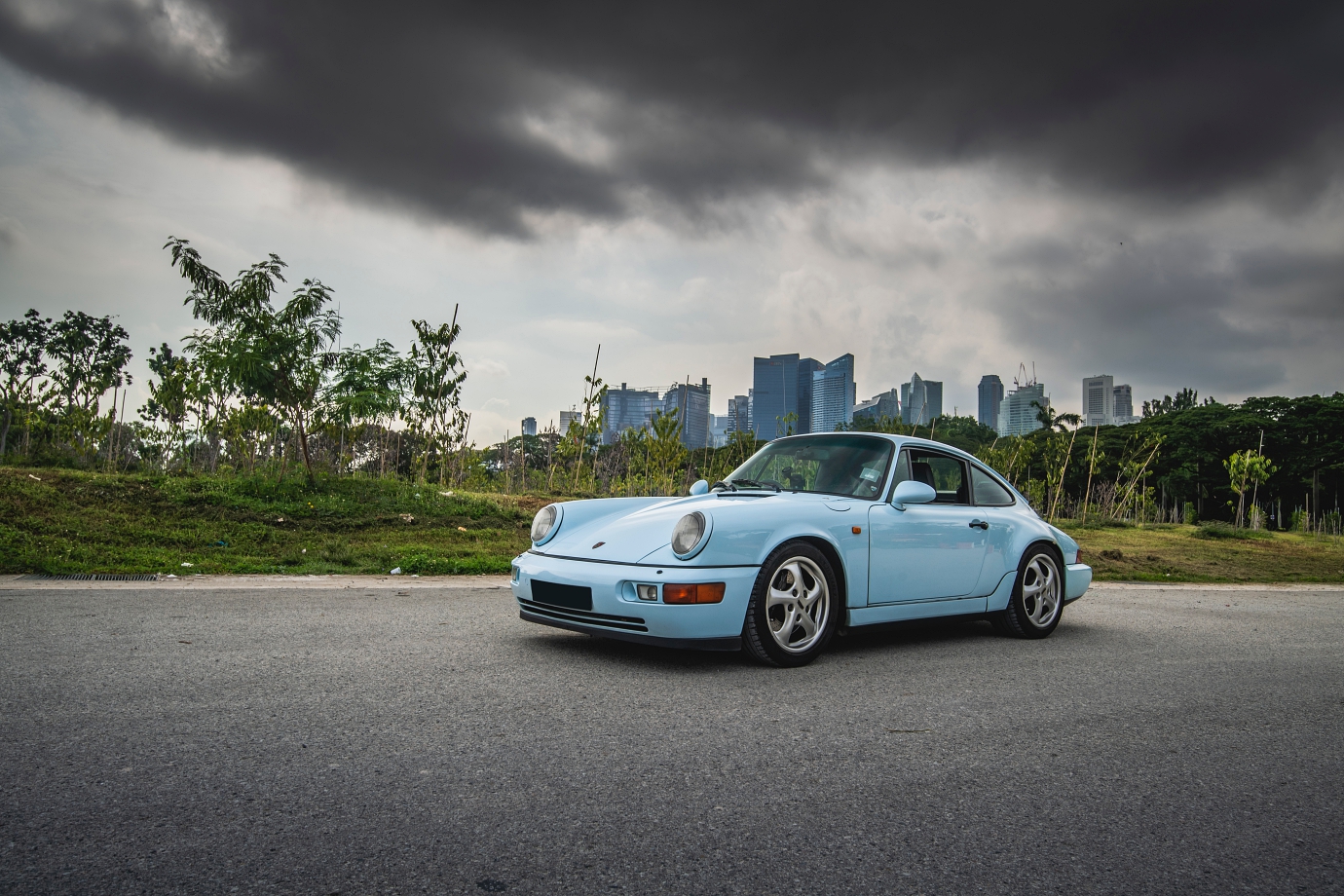
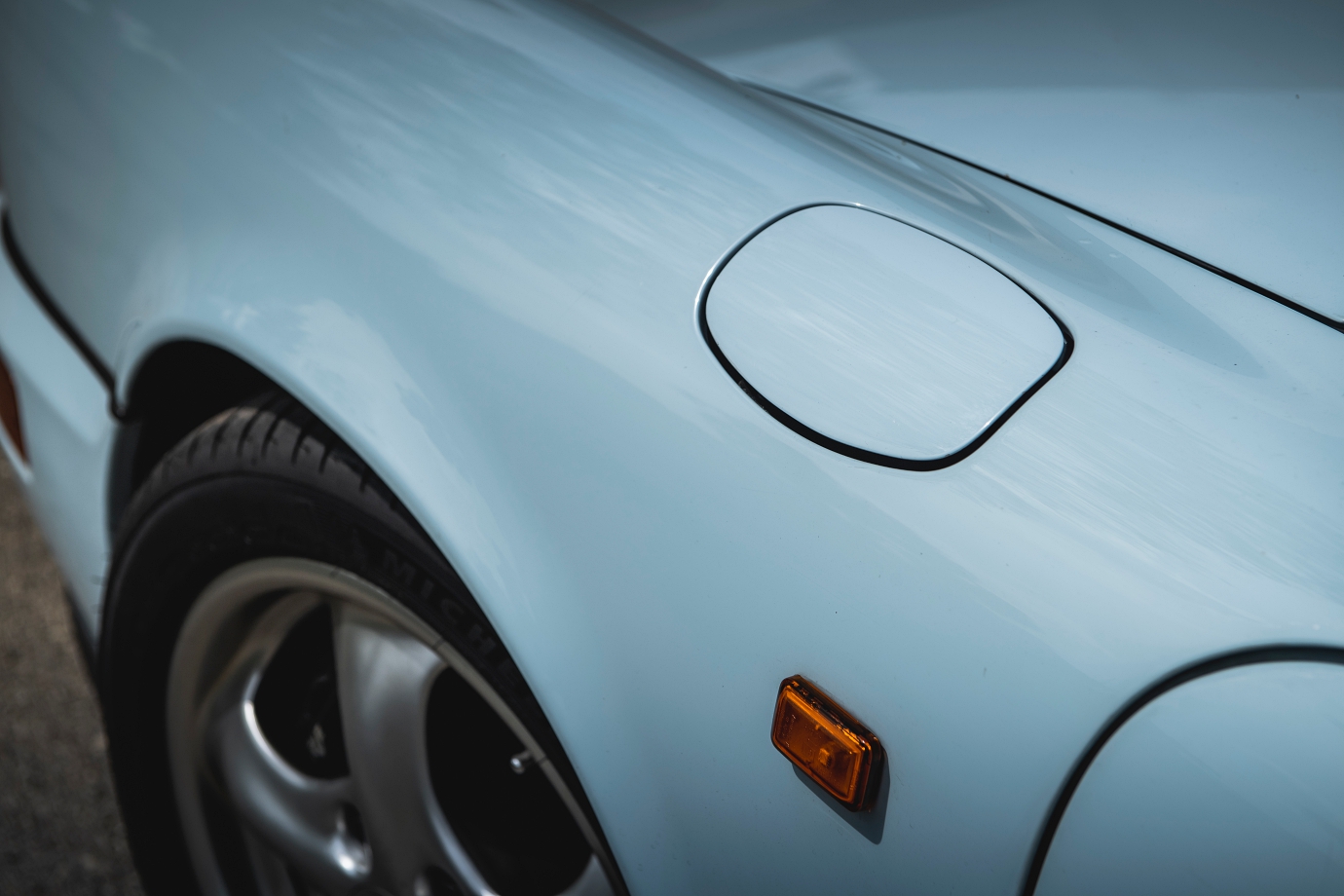
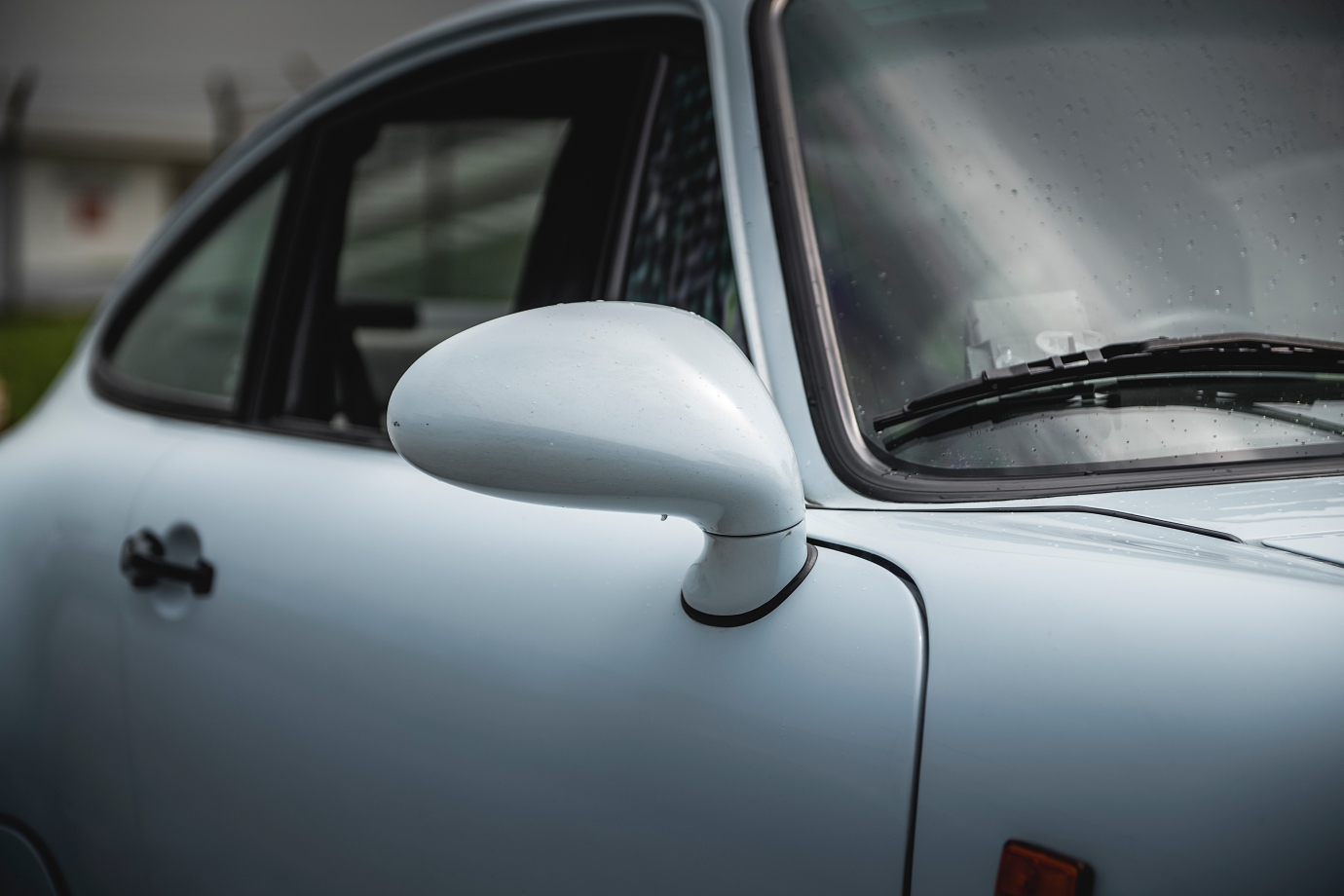
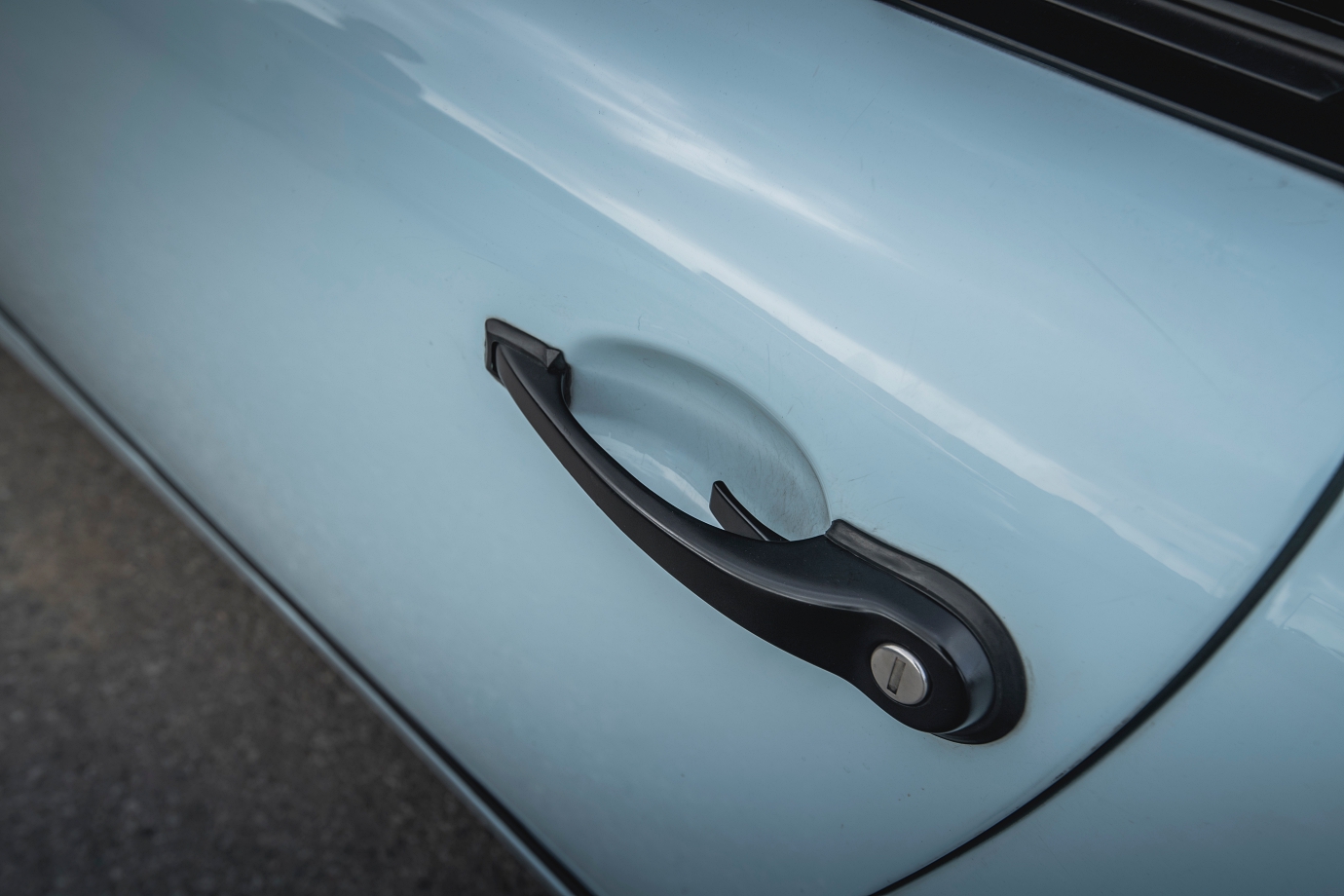
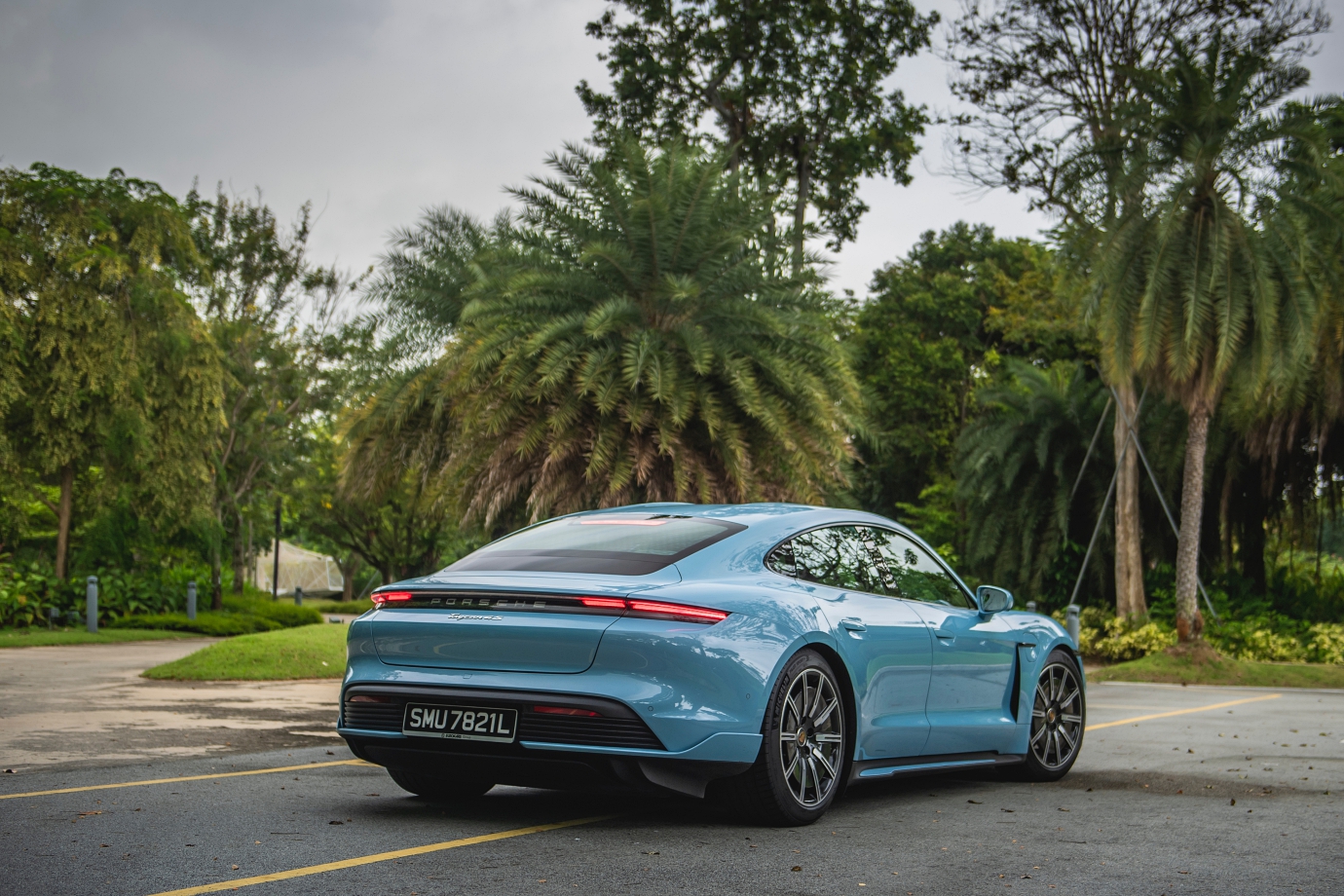
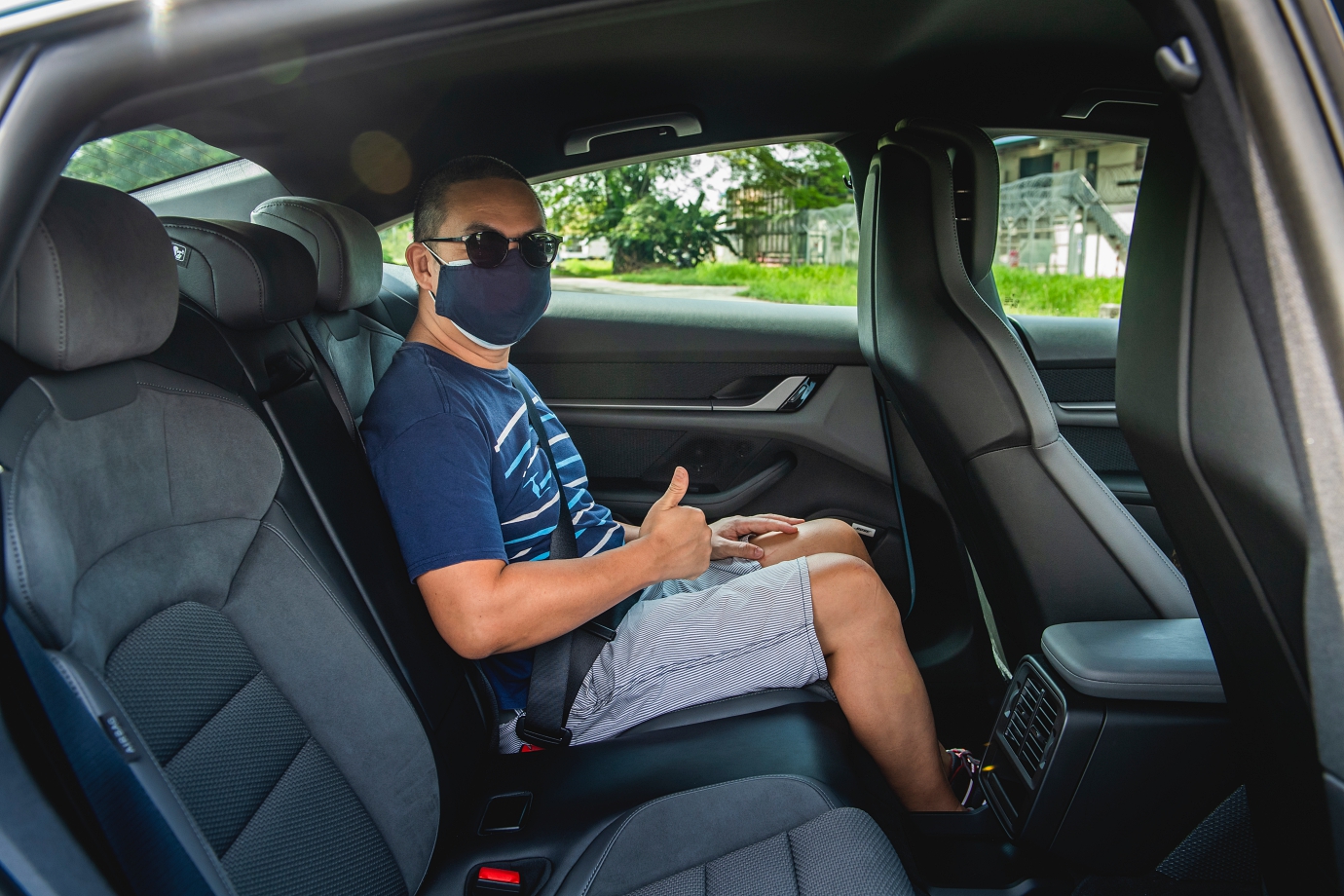
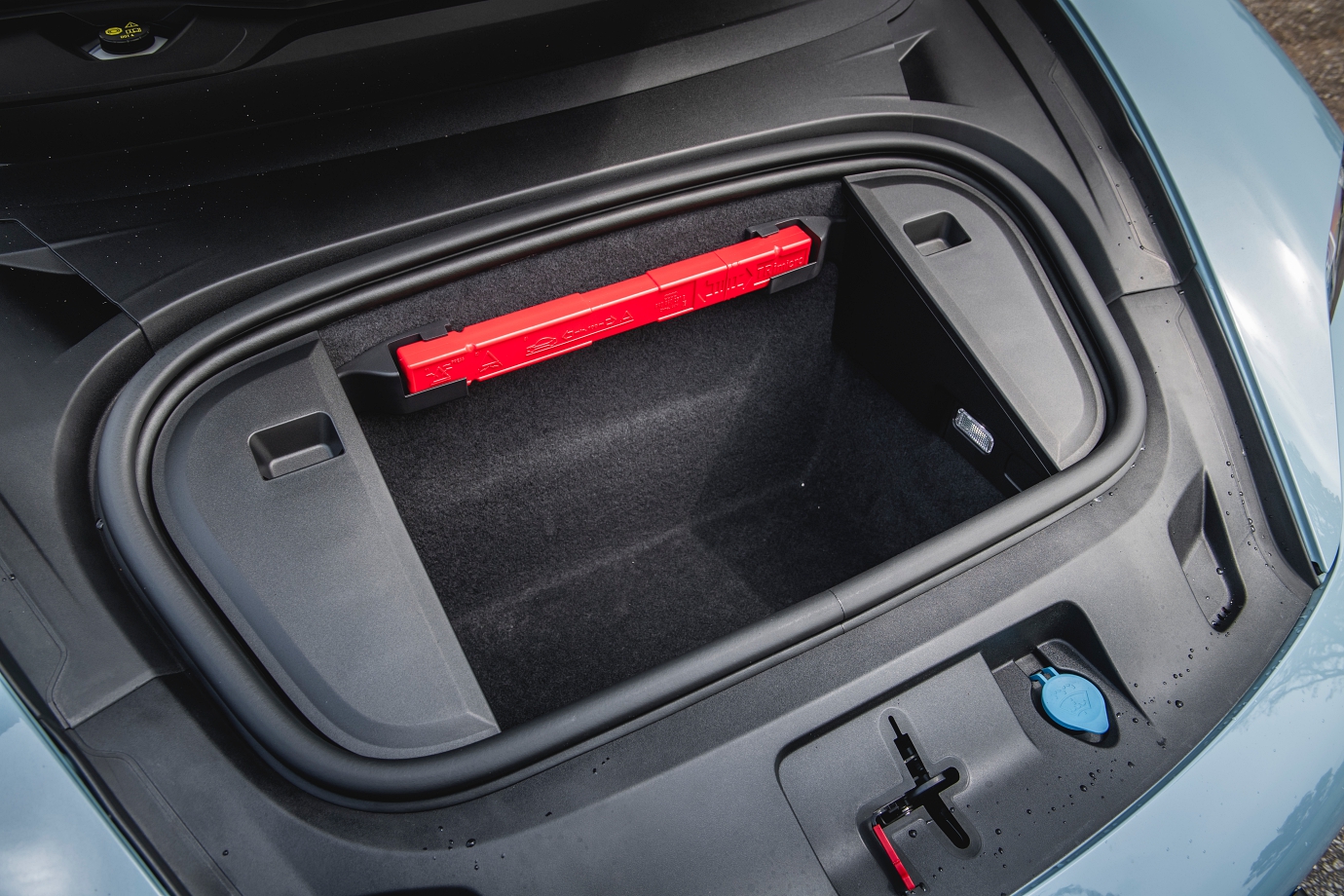
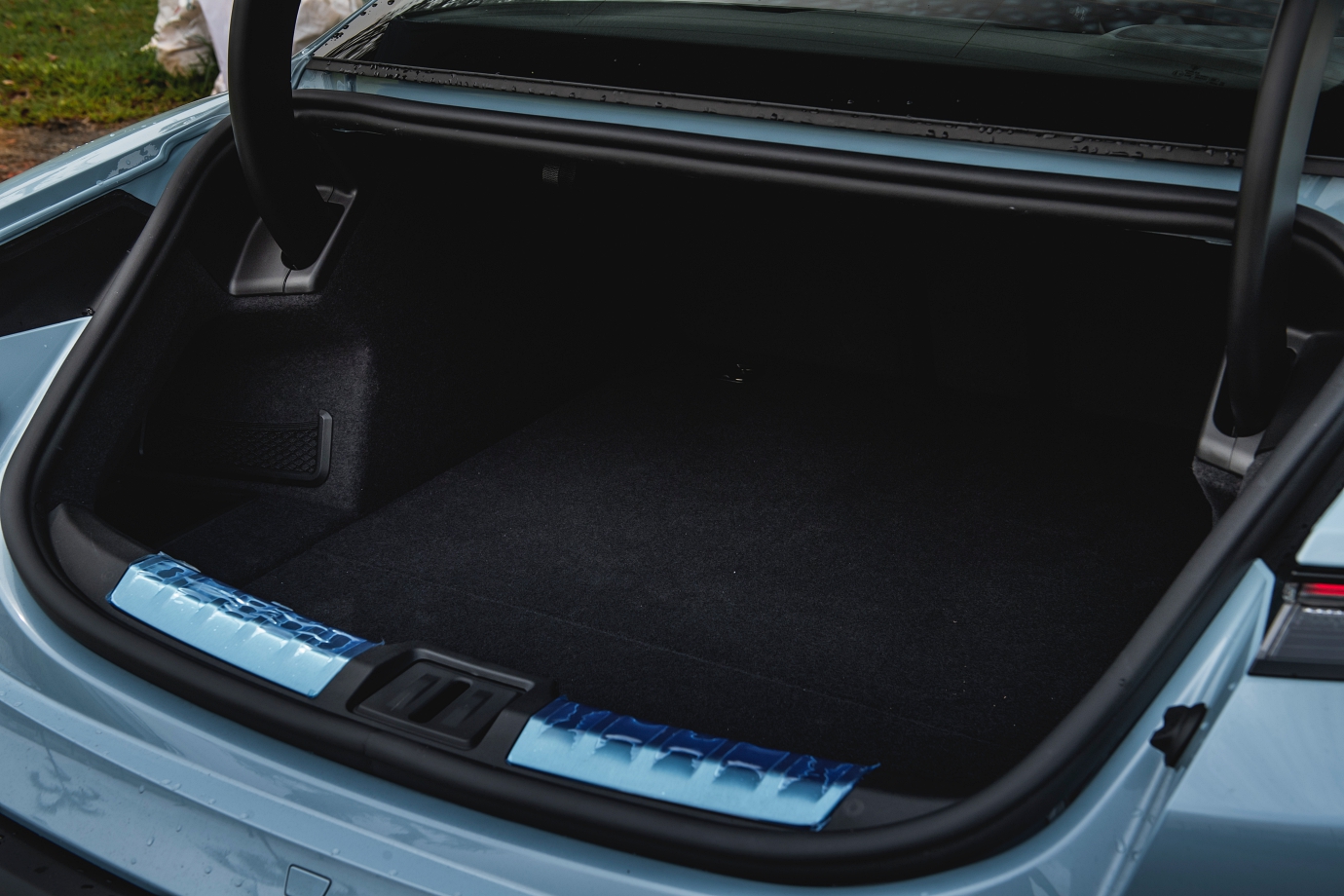
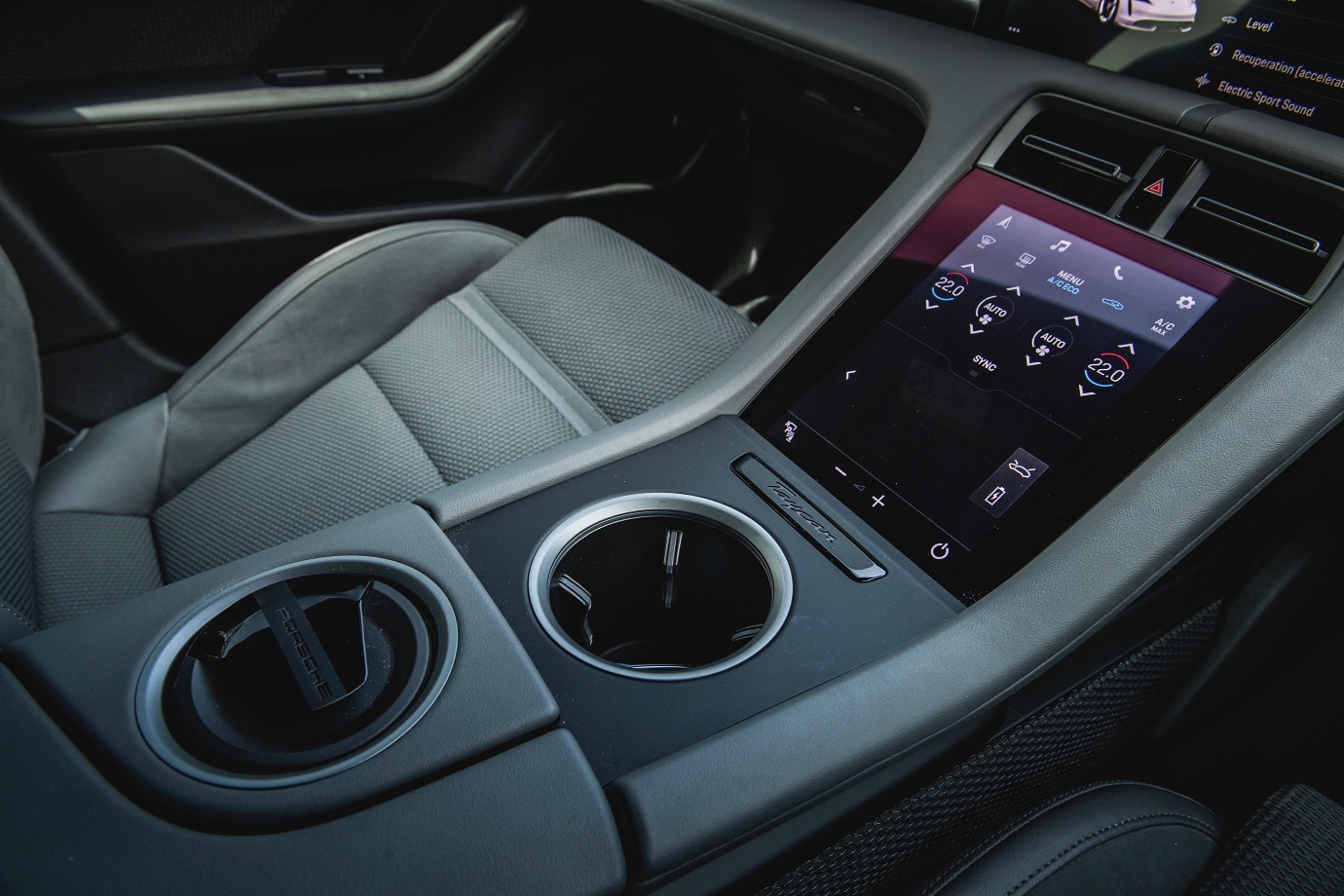
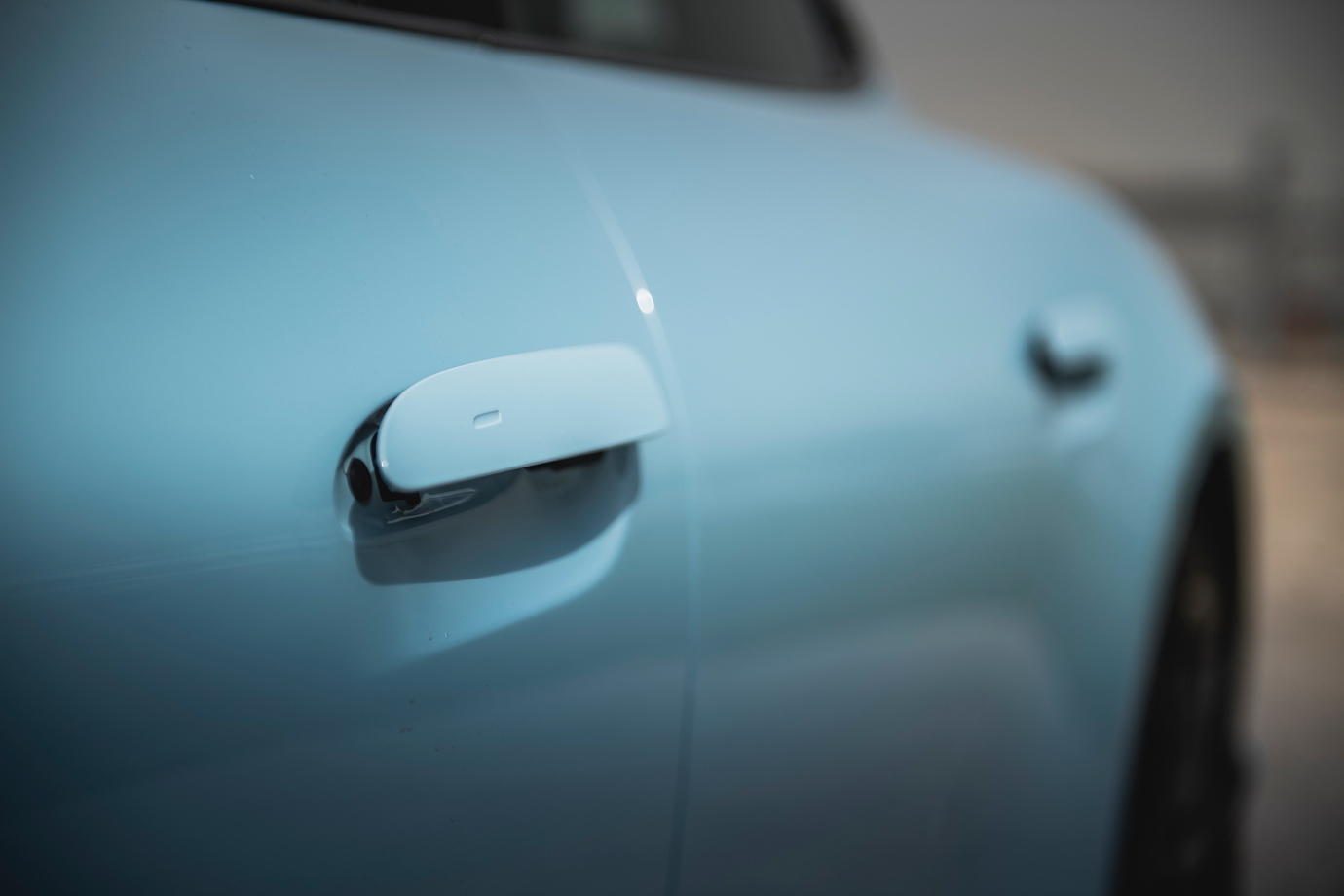
The brand's ability to create touring sportscars with a compelling fusion of dynamism and daily-drive sensibilities (in the 964, this includes luggage space, mod-cons and room for 2+2) is nothing short of magical, and this hasn’t changed even today with the brand’s ever-growing product portfolio – you always know what you’re going to get with a Porsche.
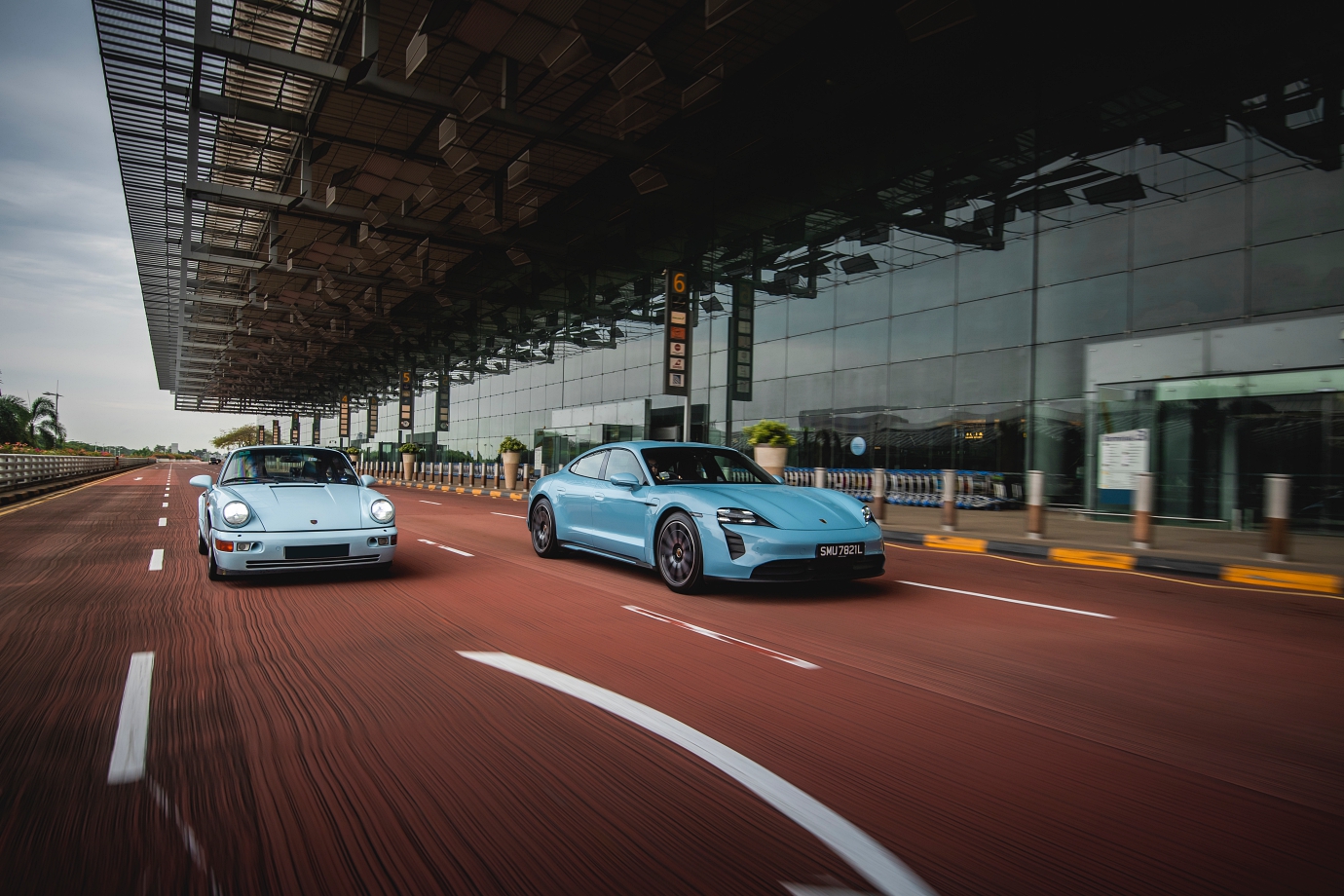
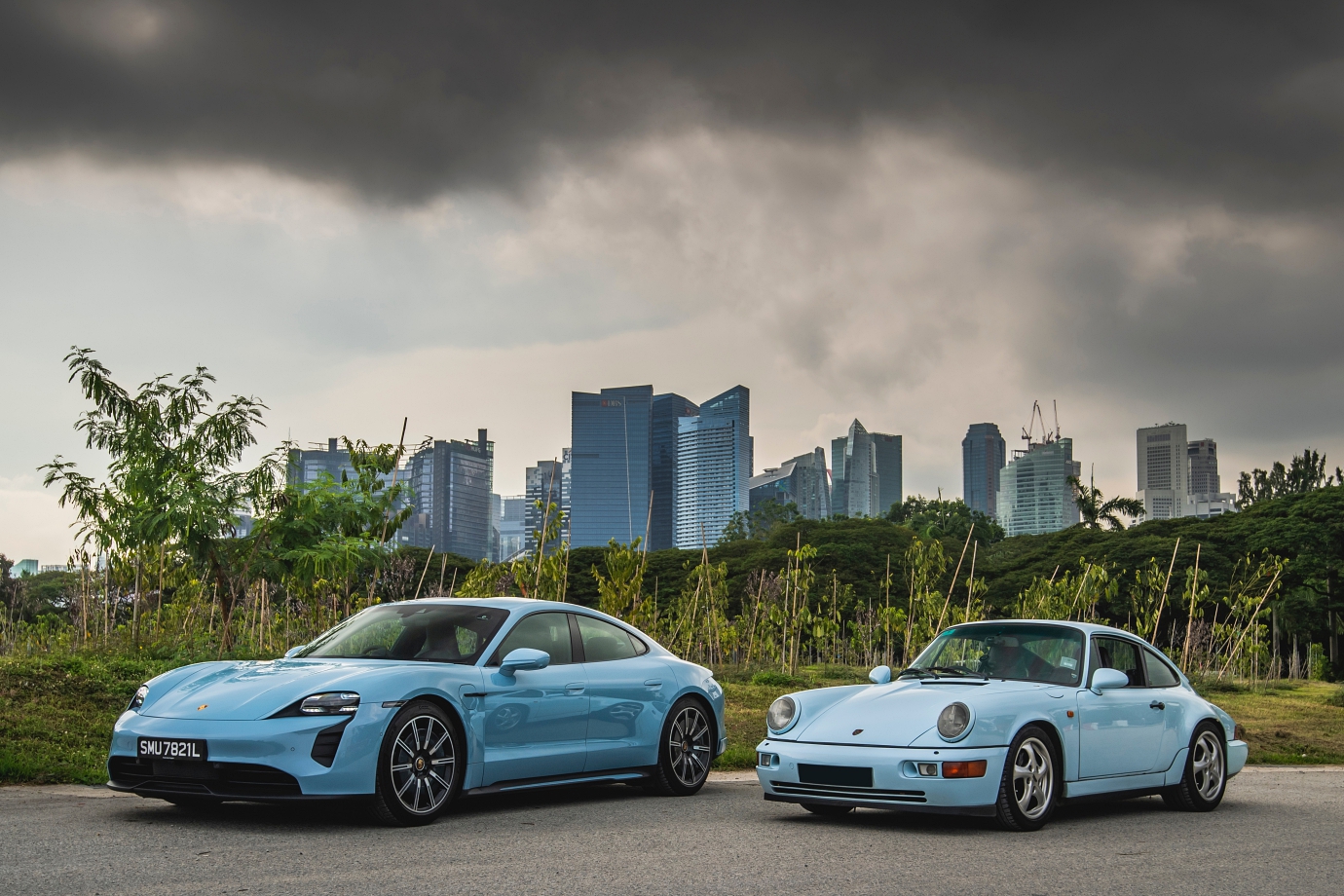
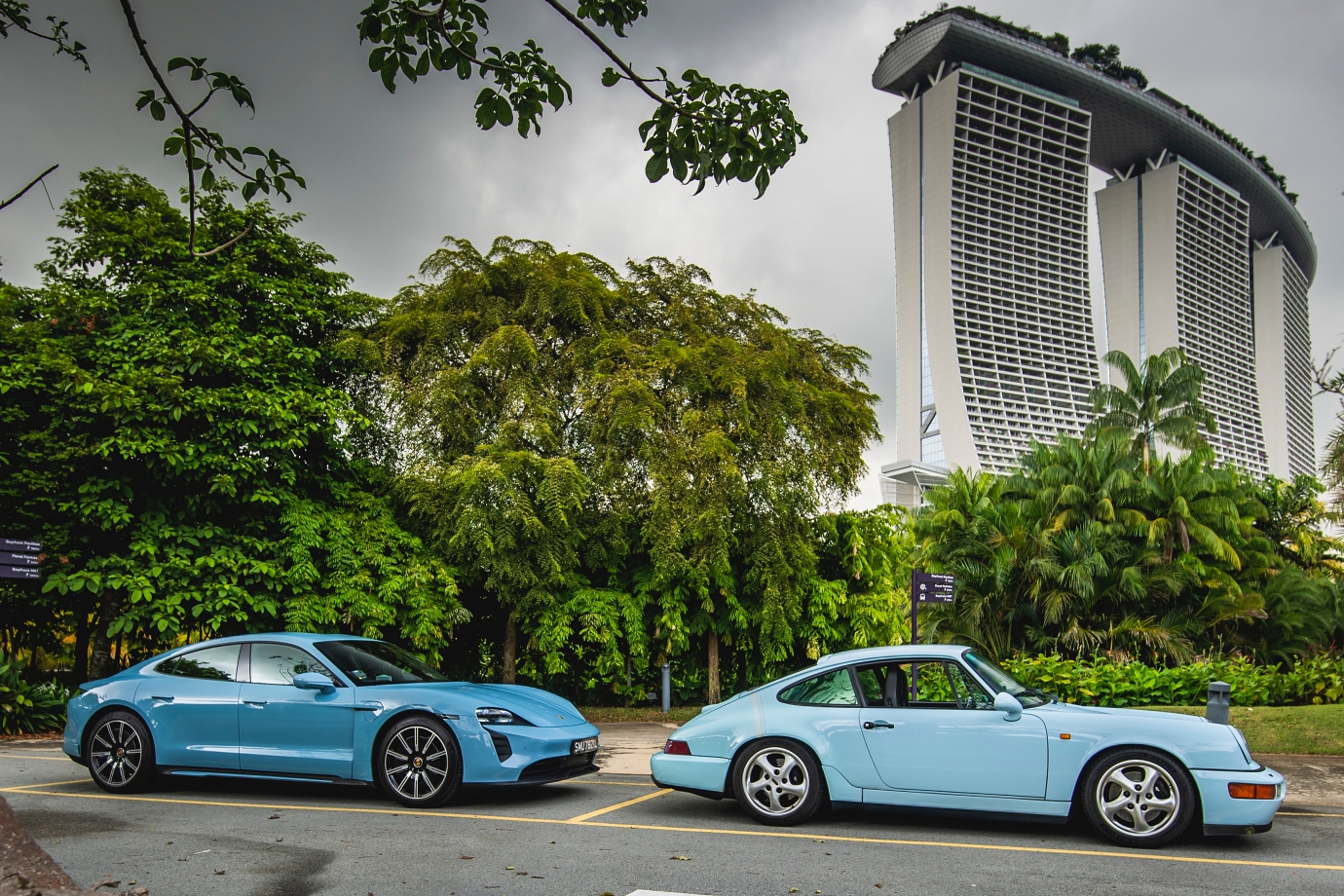
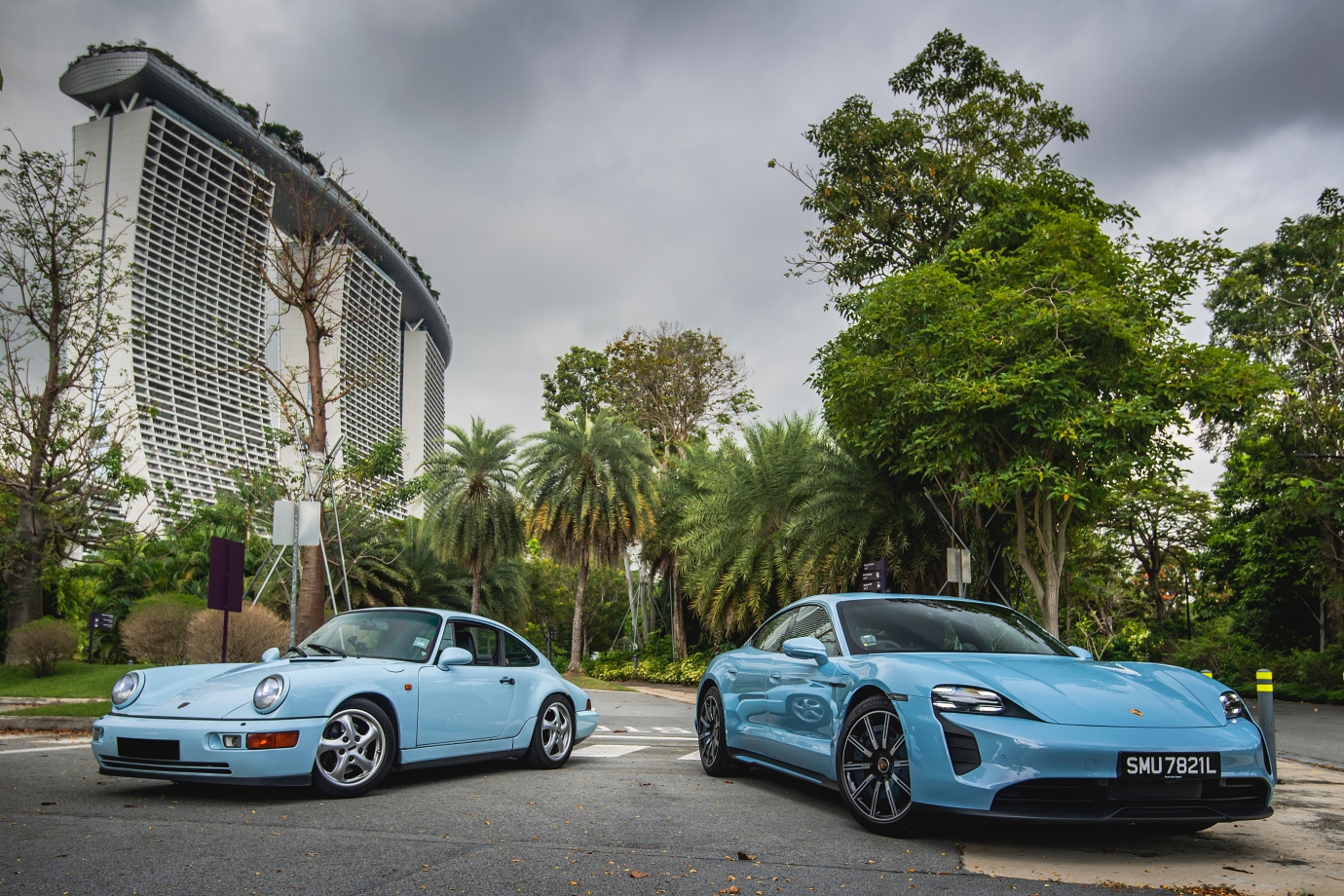
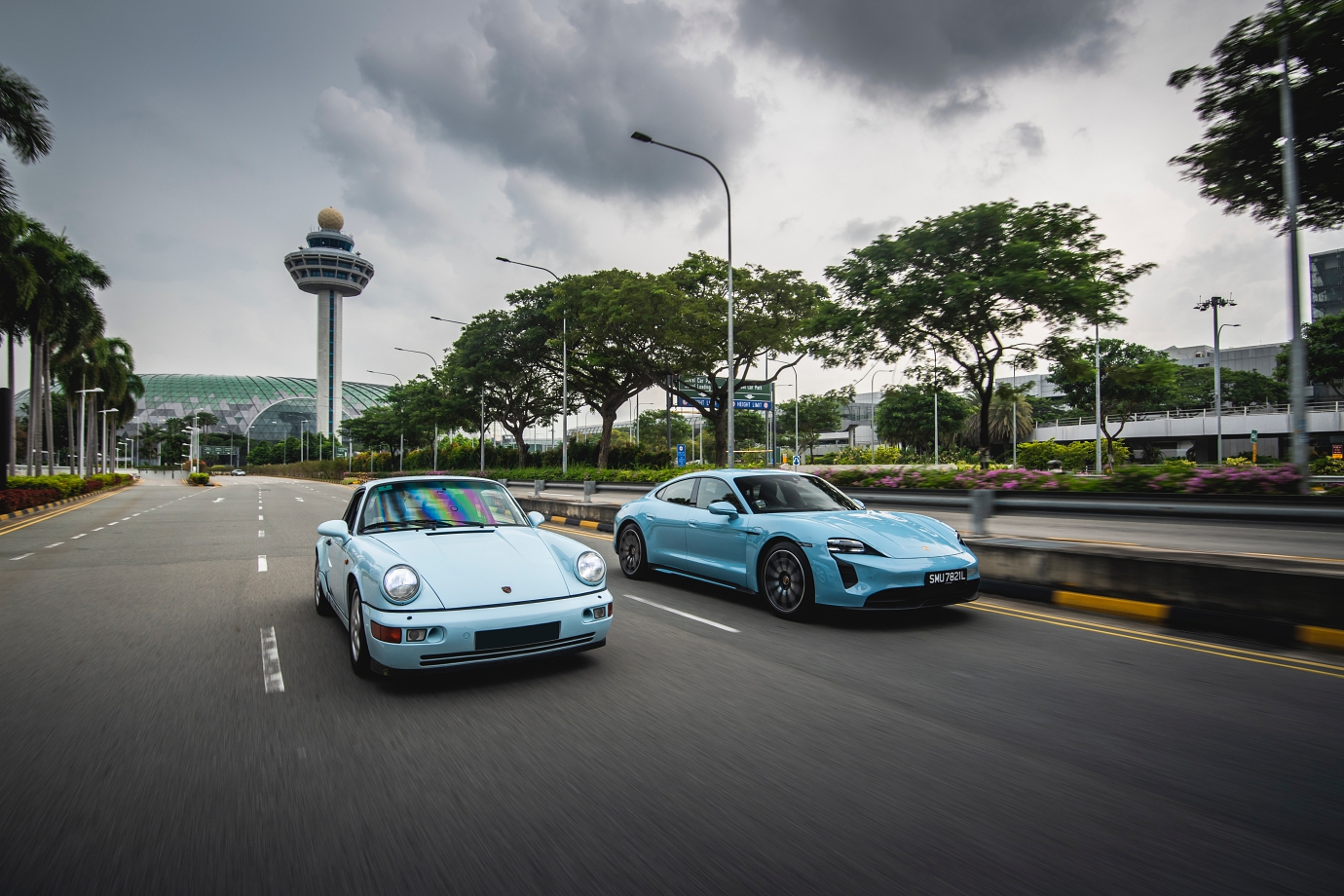
Like most polarising topics, being vocal in spreading the smackdown is de rigueur for the ‘in’ crowd – you know, the same sort of cool kids that eschews popular movies/music or even political parties. They may be the most vocal and sure, new cars may be a blight in their retro-tinted glasses, but they also tend to be a minority in the grand scheme of things.
Porsche has faced-down its fair share of critics since Ferry decided to shoehorn a ‘boxer’ engine into the rear of the Gmünd 356/2 in 1948… that was over seventy years ago!
So it is to Porsche’s credit they have continued to push the outer limits of technology to create sportscars of all shapes, sizes and engines that aren’t just fast, but also continue to have spirit and soul.
PHOTOS Zotiq Visuals
Porsche 911 Carrera 4 (type 964)
Engine 3600cc, flat-six, nat-asp
Power/rpm 250hp/6100rpm
Torque/rpm 310Nm/4800rpm
Transmission 5spd manual
0-100km/h 5.7secs
Top Speed 260km/h
Kerbweight (DIN) 1450kg
Porsche Taycan 4S (with Performance Battery Plus)
Battery Li-Ion, 93.4kWh (gross)
Power 490hp (571hp on Overboost)
Torque 650Nm
0-100km/h 4secs
Top Speed 250km/h
Kerbweight (DIN) 2220kg
Electric Range (combined) 386-463km (WLTP)
Efficiency 25.6kWh/100km
